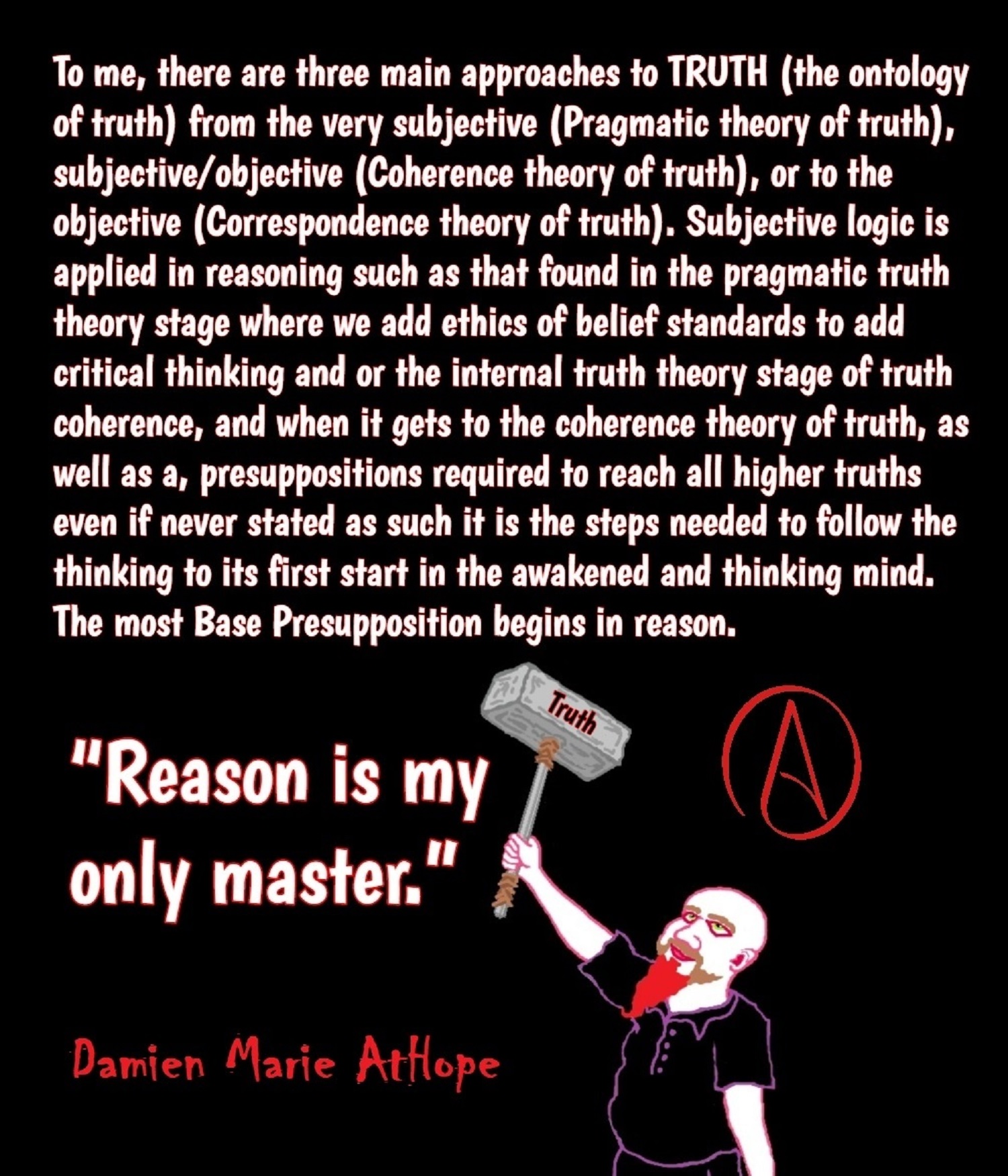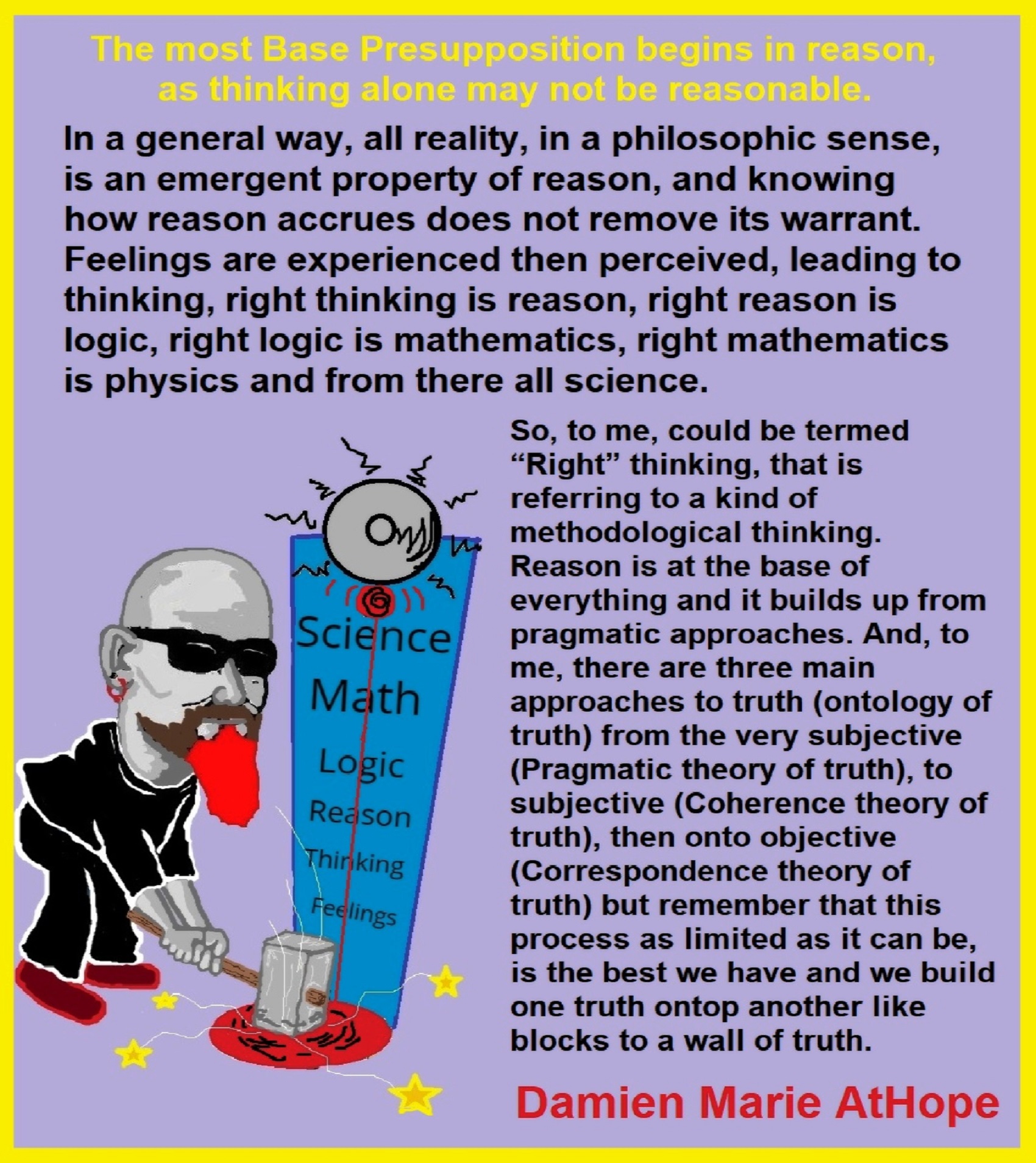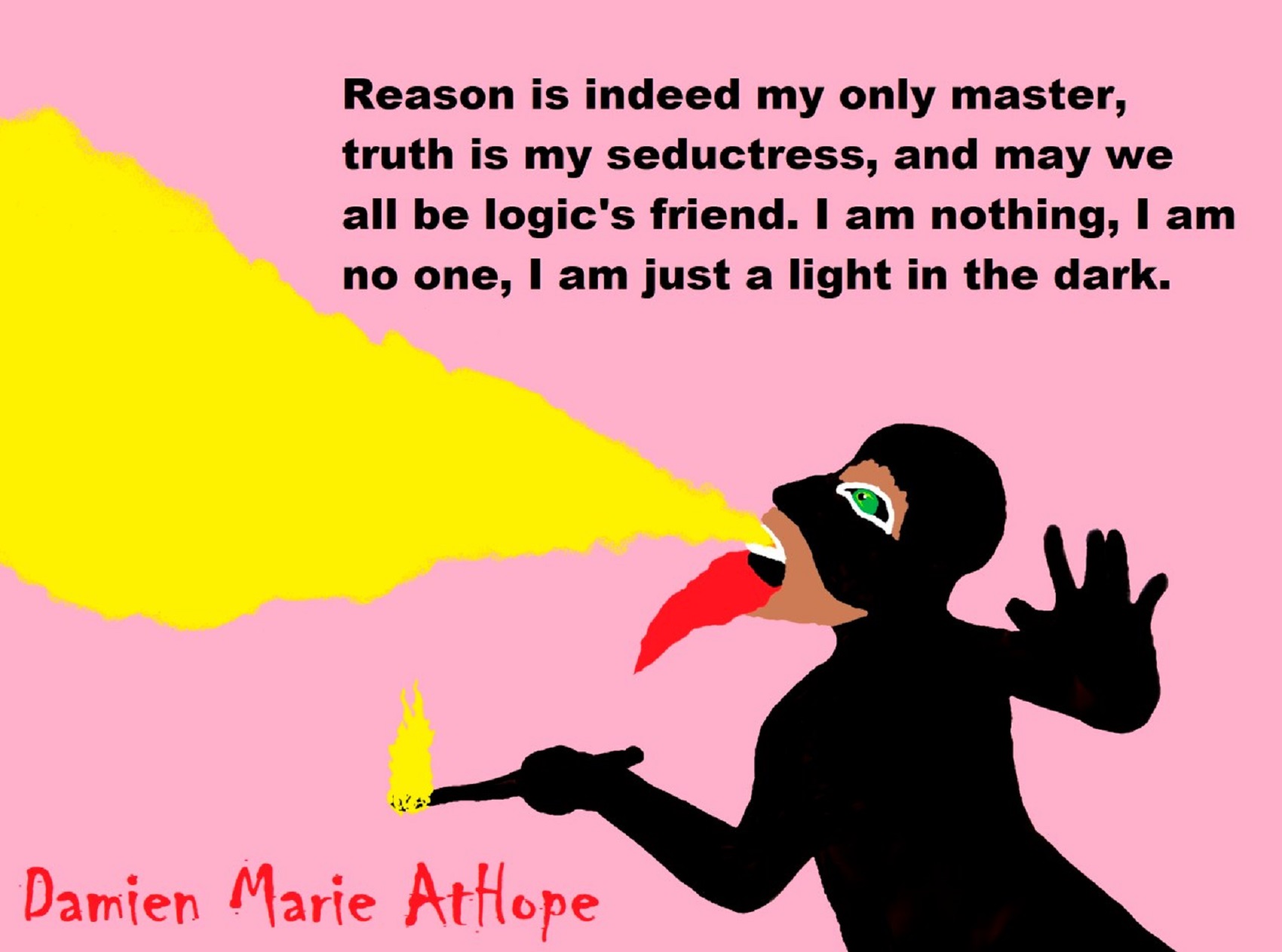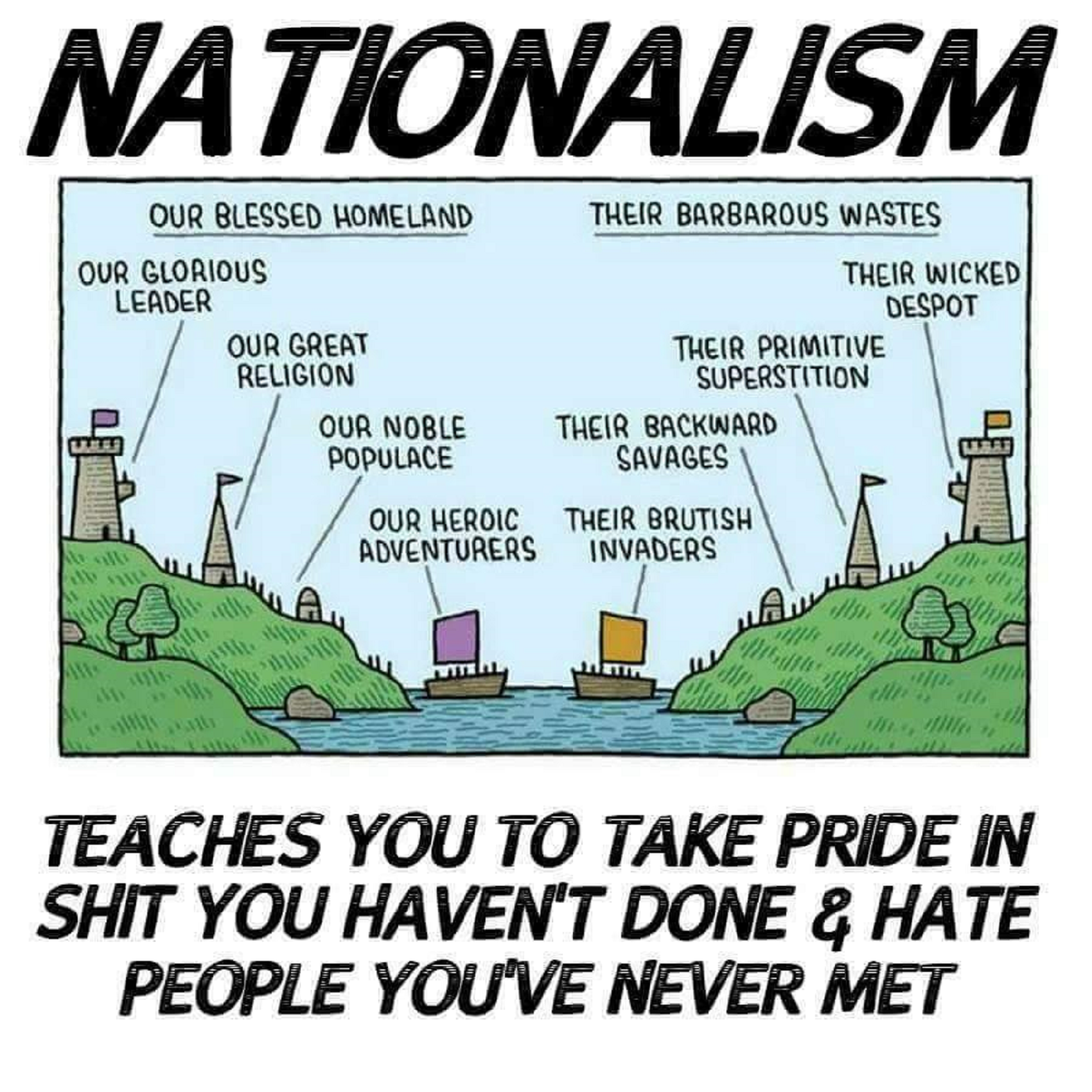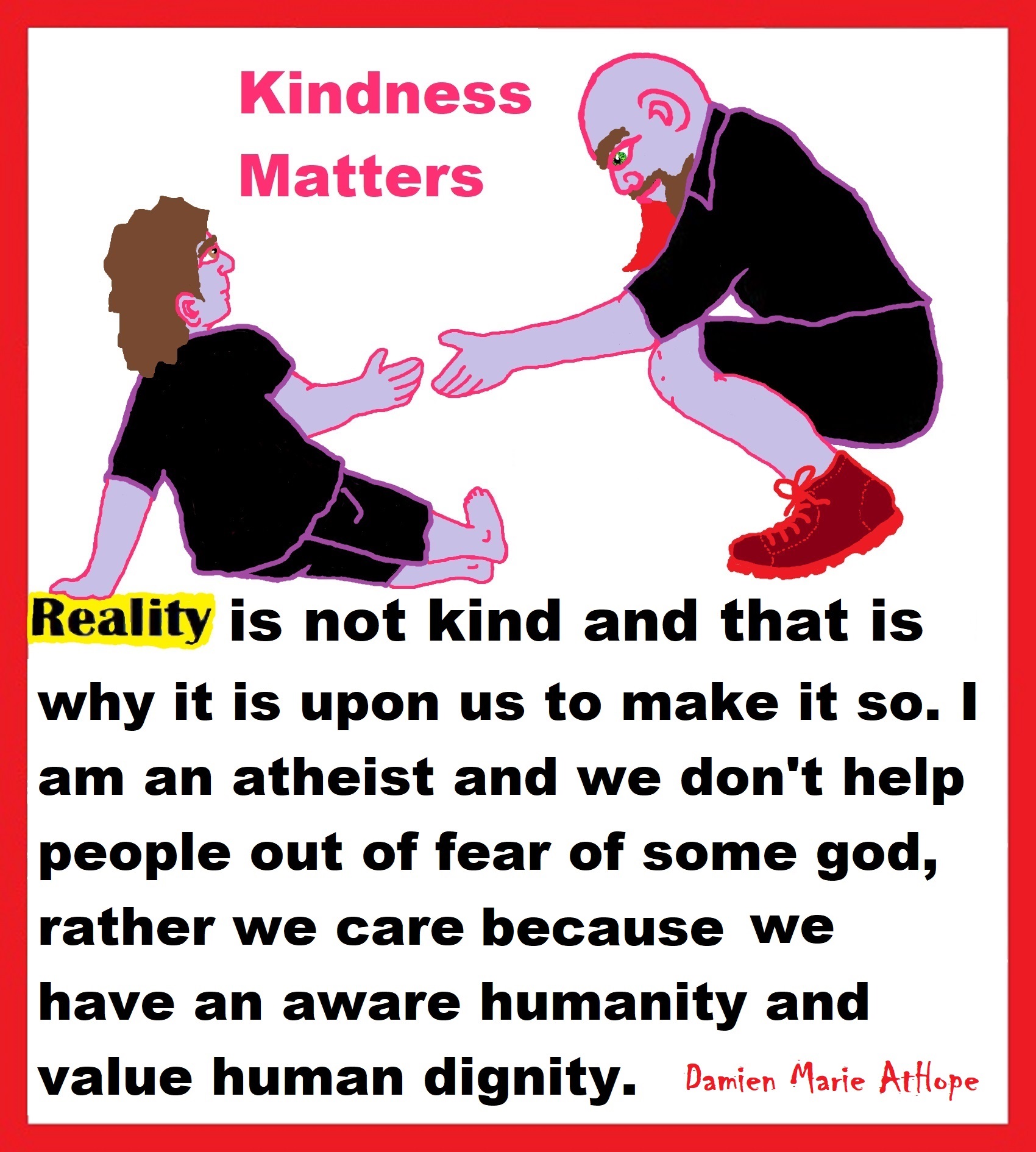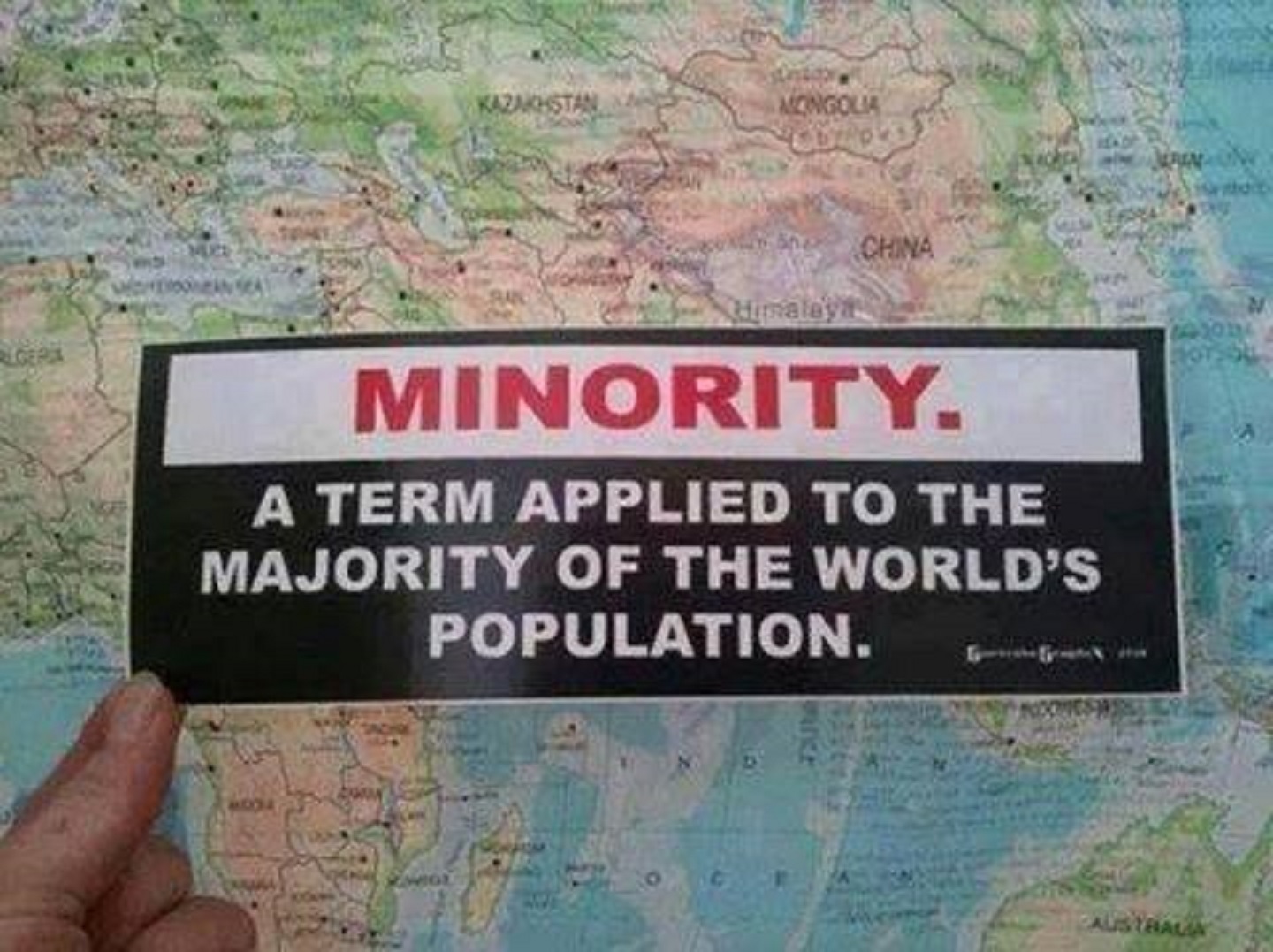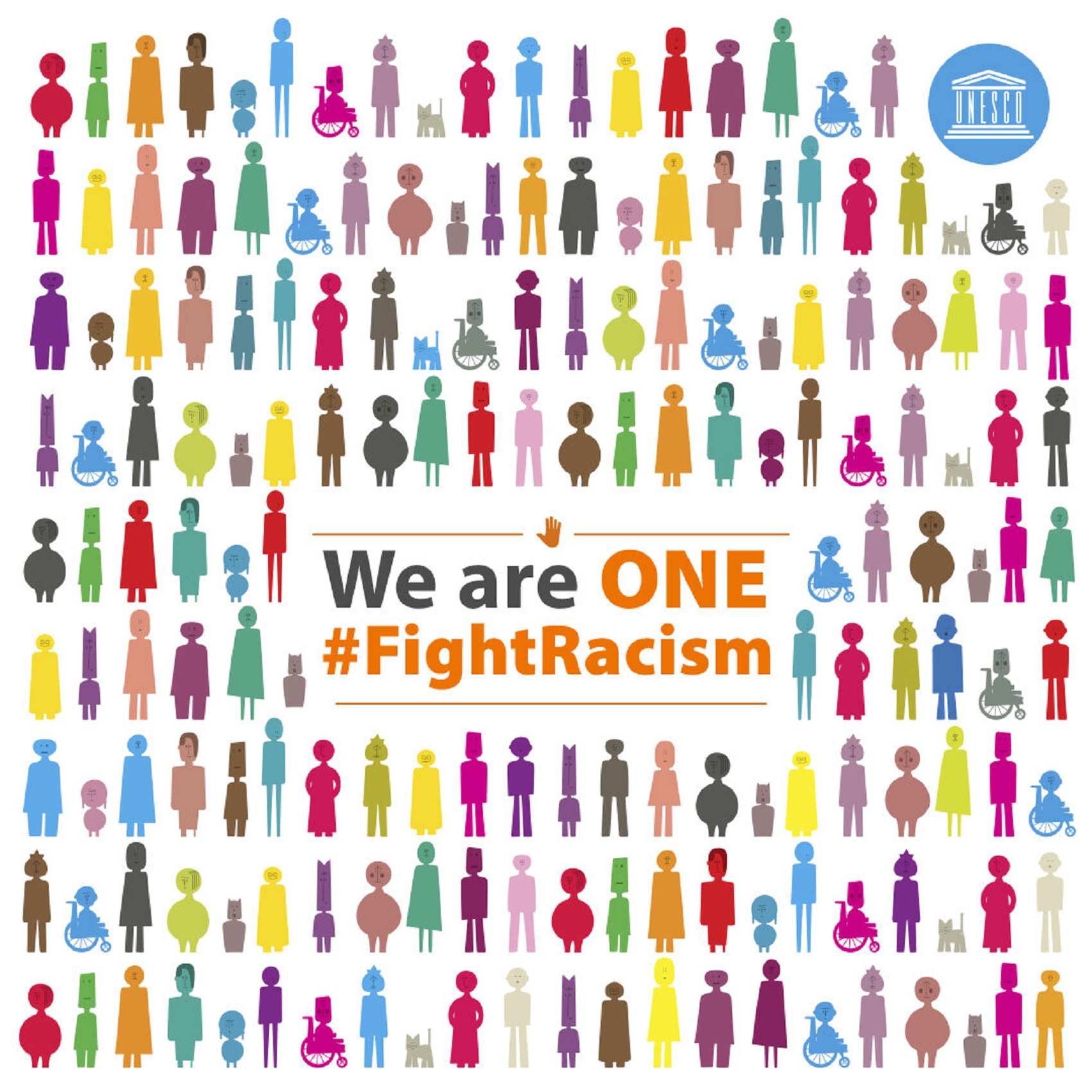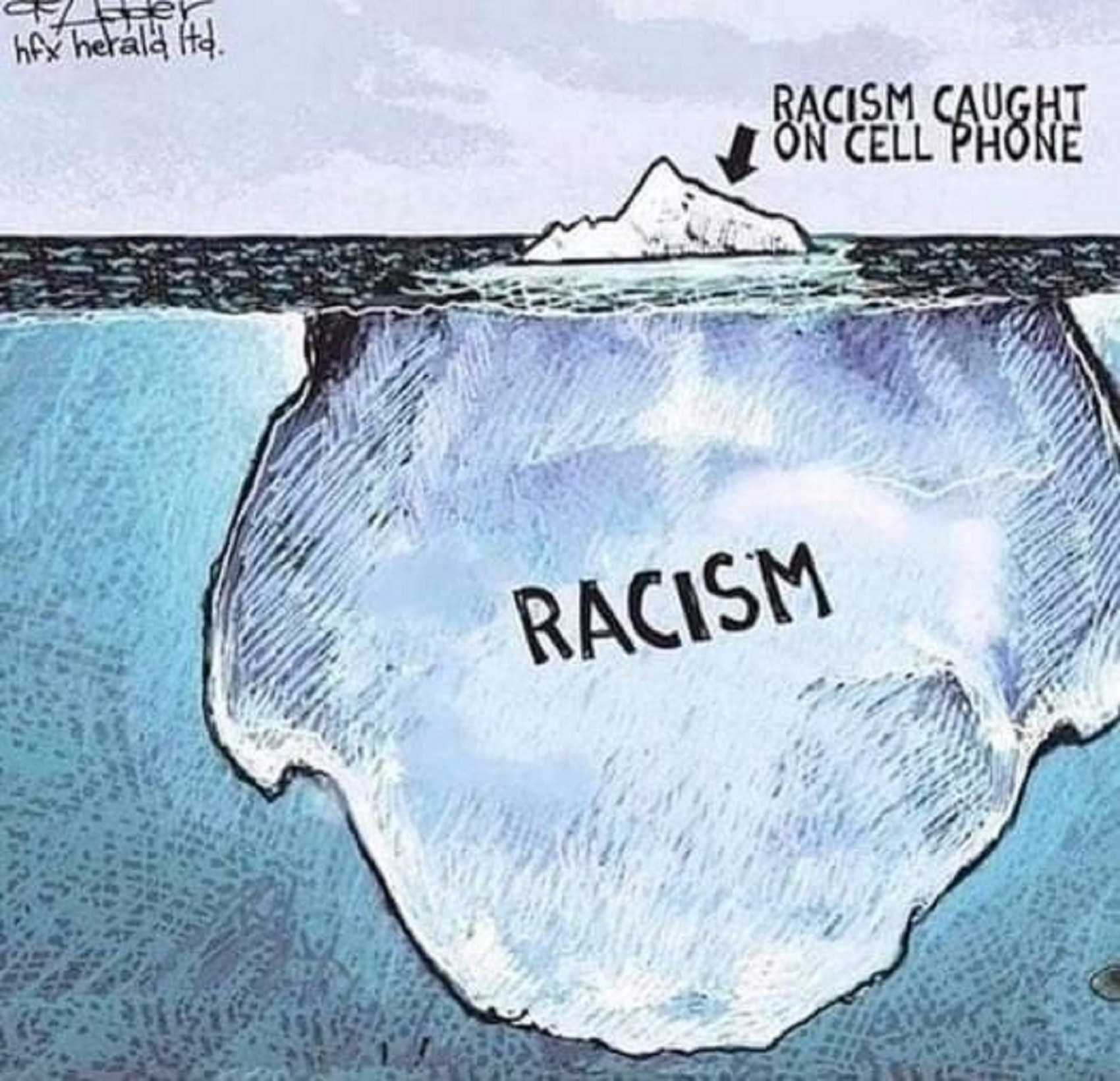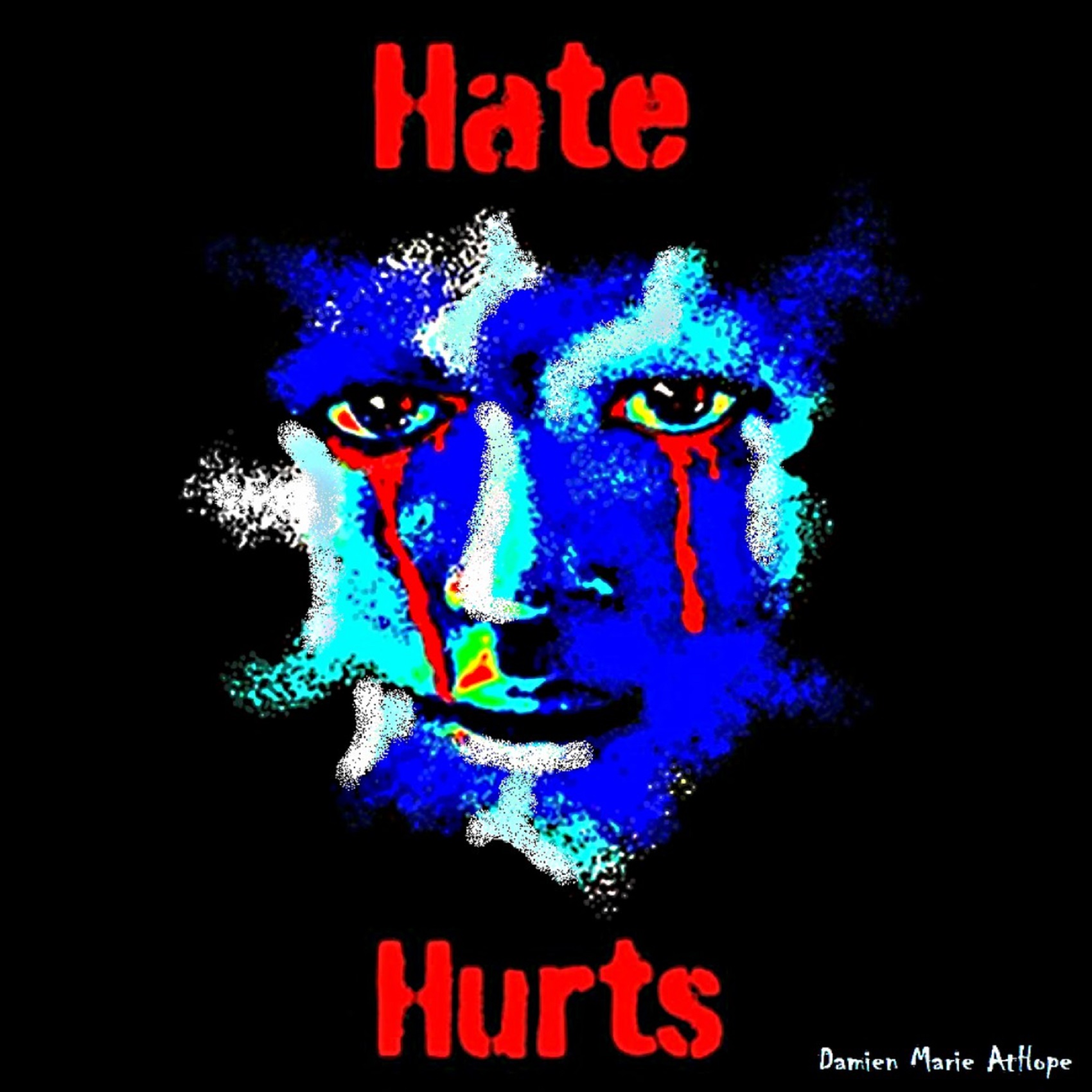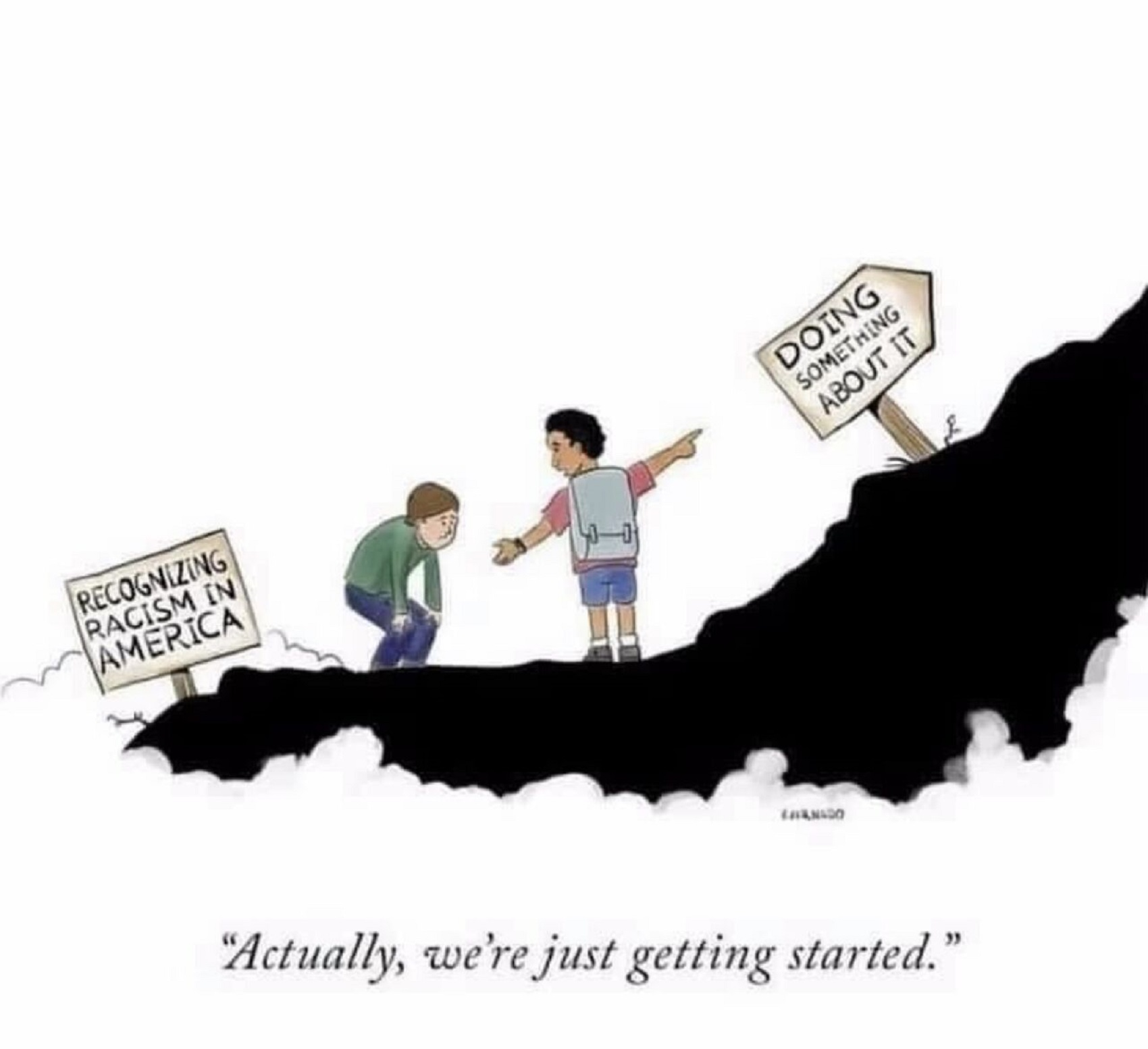
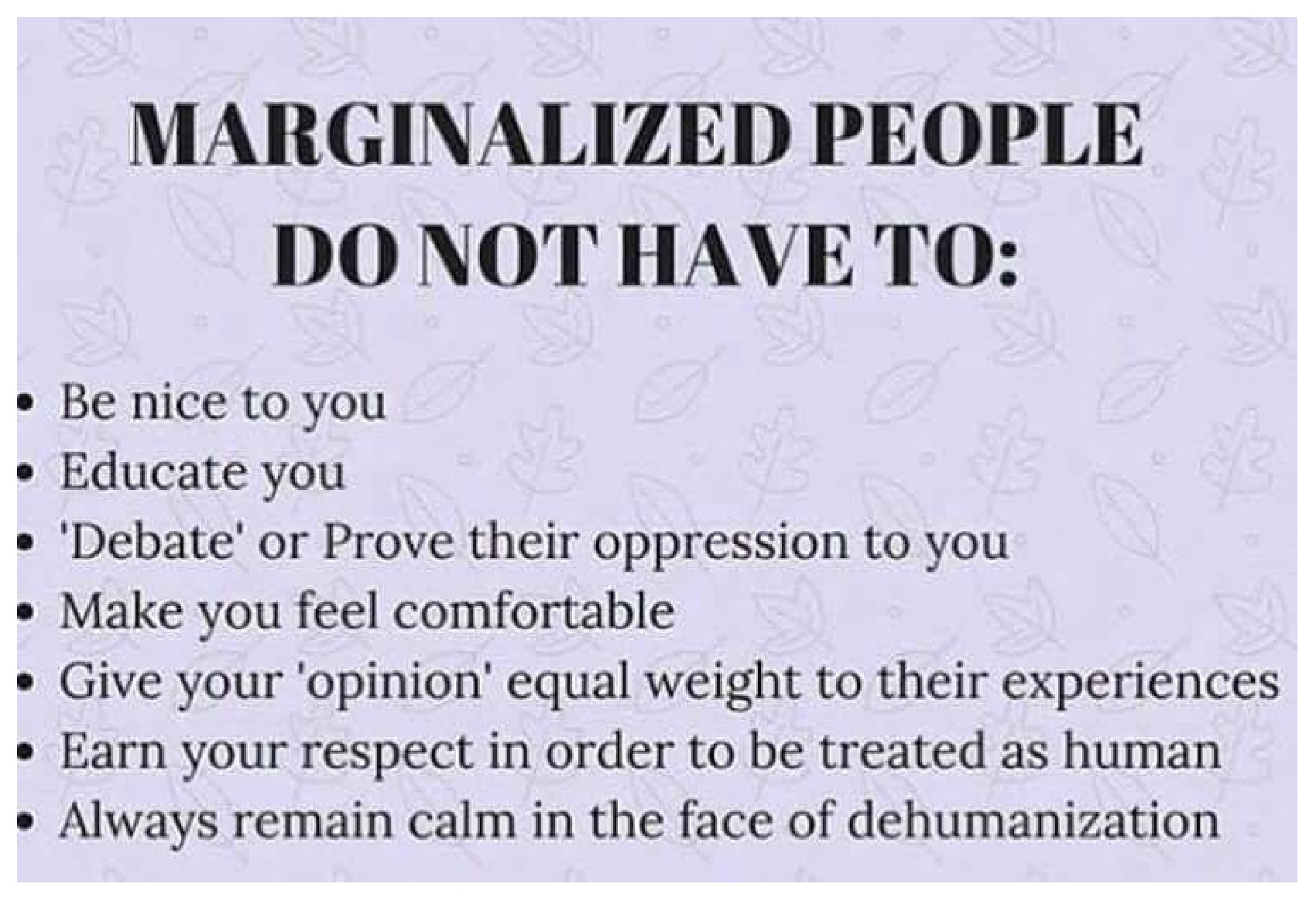
Kevin Bailey – “Is the US a racist country? Slavery, Jim Crow, and lynching made the US a racist country. Today, minorities in the US have made significant progress but with all our progress, there have been White Backlash at every turn including the murder of unarmed Blacks and voter suppression. I believe the US is still a racist country because overall it refuses to have a “Just” reckoning on Race Relations.”
Kevin Bailey – “Case in points:
1. In 1865 with the assassination of Pres Lincoln, Freed people were mass murdered in the South.
Jim Crow was established to discriminate and keep Blacks in slavery
2. The Great Migration, was the escape of 6 million Blacks out of the South to urban areas.
Blacks who escaped the South only w/despair, desperation, and the clothes on their backs, faced redlining, drugs, guns, and alcohol (today’s wealth and health gaps).
Then there were white race riots in cities because they felt Blacks were going to take their jobs and move into their neighborhoods
3. Real progress was made with the 1964 and 1965 Civil and Voter Rights Acts.
There was Violence/Resistance against Busing and Affirmative Action in the 70s.
4. Pres Obama was elected. The backlash came again with the rise of racist groups with the trump. Many Whites don’t want the 1619 project taught in schools.
Kevin Bailey – “Another case in point: “A ranting racist calling an African American female a slur.”
https://twitter.com/davidbegnaud/status/1387131436239659010?s=21
My response, I agree with you.
Kevin Bailey – “My President Biden and VP Harris got it wrong. I am sorry if what I believe might make you and my LinkedIn friends uncomfortable but the US is still a Racist Country.”
My response, Can we do better? Reparations for Slavery, American Terrorism? Reparations for Jim Crow, American Terrorism? Reparations for Red Lining, American Terrorism? Reparations for Lynchings, American Terrorism? and Reparations for Unarmed Shootings, American Terrorism? Yes, I believe we should! A Study Finds 4,000 Lynchings in Jim Crow South, Will U.S. Address Legacy of Racial Terrorism? Such vile American-Terrorism, So horrific, I totally support reparations.
Kevin Bailey – “Thanks, Damien for your steadfast support!”
Kevin Bailey – “Damien AtHope I agree. Reparations is not a giveaway or socialist. It is compensation. I would target reparations to do the following: 1. end wealth gap with cancel black student loan debt working and middle class. The funds shall not be taxed 2. All working-class blacks’ healthcare is provided by the US government, States, and businesses at no charge with a goal of ending legacy epidemics for example around diabetes and high blood pressure that made us vulnerable to COVID-19. 3. Create community health centers to treat diabetes and high blood pressure that also provide fresh vegetables and fruits at no cost 4. Tuition-free trade schools and colleges for blacks. 5. Increase the number of black homeowners through President Carter Habitat for Humanity program. Homeowners must participate in helping to build their homes. 6. Fully implement President Biden infrastructure plans that will help all Americans.”
“Kamau Bell danced around the subject in last night’s interview with Anderson Cooper, instead preferring to say that it is ‘the system’, and not people. He’s a soft touch, no doubt because he doesn’t want a reputation for being confrontational when paying a friendly visit to the KKK.” – Commenter 1
Kevin Bailey – “I enjoy his shows. I lot of folks are being twisted into a pretzel trying to as you say, dance around the subject. That said, I don’t dance!”
“Please give an example of a country where there is no racism? Yes, racism is a problem, but it is not our biggest problem. Why are we spending so much time on it?” – Commenter 2
My response, Please give an example of anywhere it should be tolerated? NOWHERE. EVER. AT ALL! and “Why are we spending so much time on it?” unjust lives lost, human rights violated, and social wellbeing are all being viciously violated by all this terrorism.
Here Damien: “
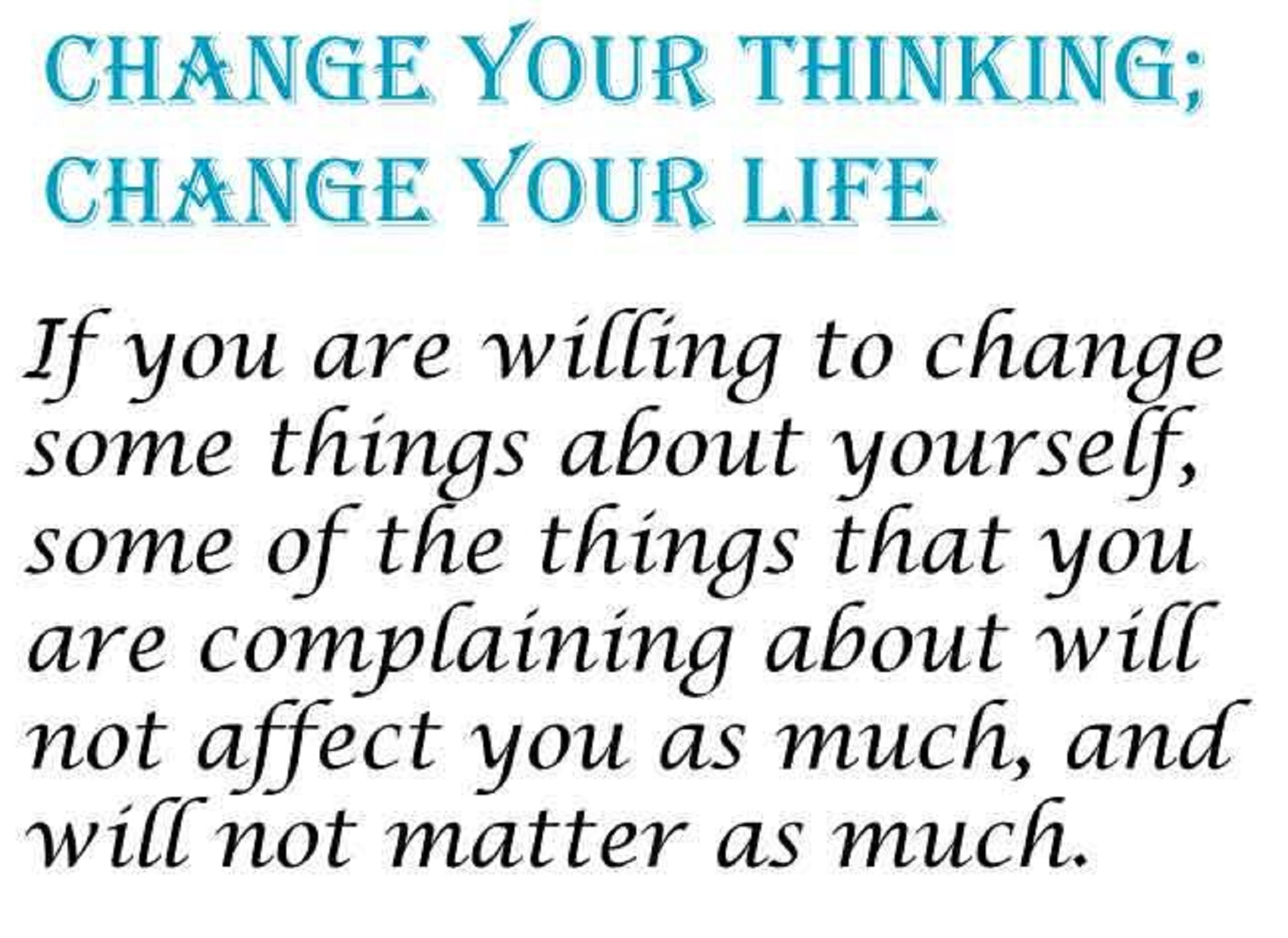
” – Commenter 2
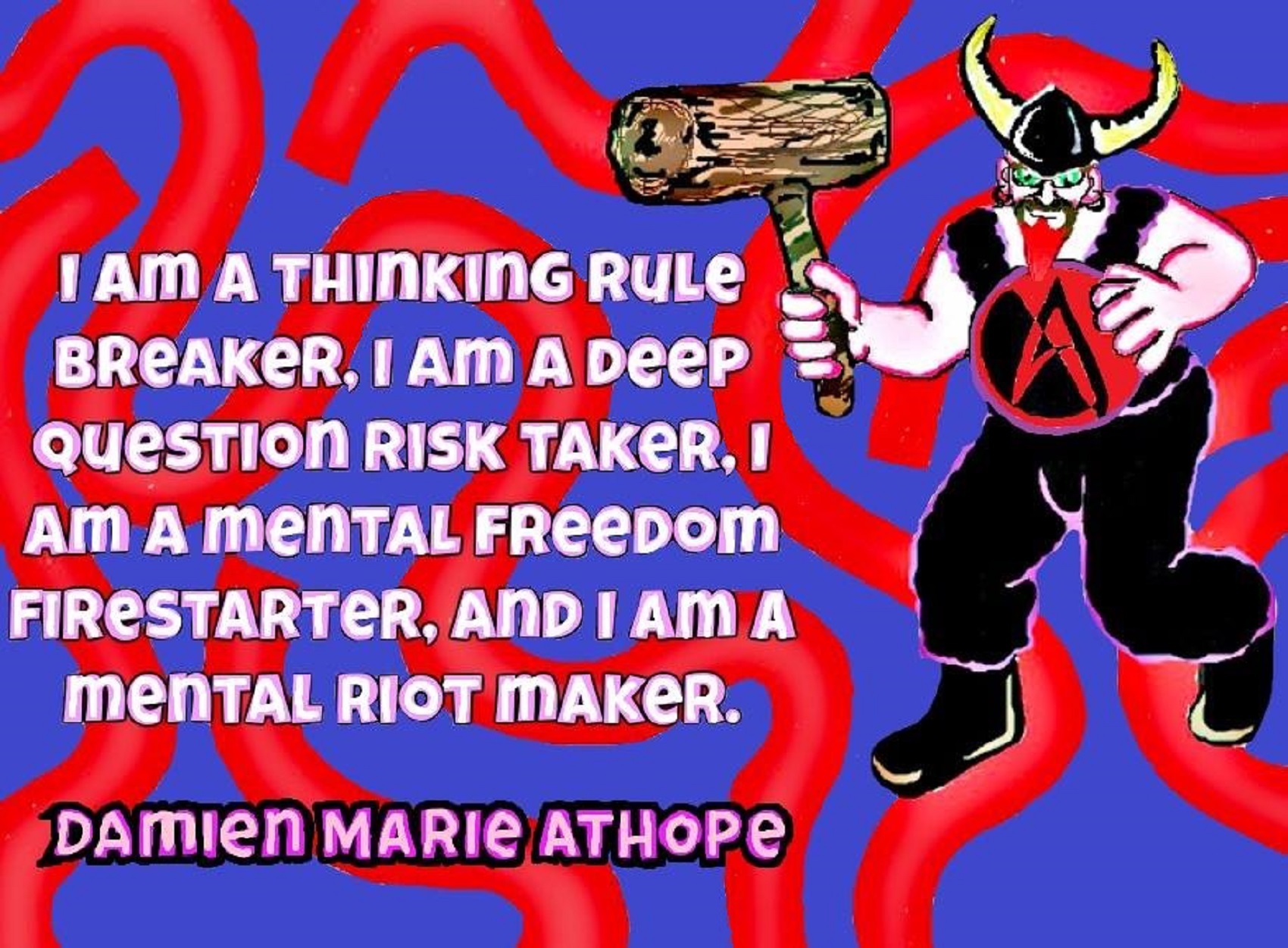
My response, I think you should rethink you challenging me, on how I think!
“Kevin B. – If you are a leader, I will speak with you and your leadership team. If you are a follower, I will speak with you and your leader.” – Commenter 2
My response, I wonder if you feel there is no need to have a civil society? I feel you want to be respected and treated with the highest dignity your human right deserves? Correct? I would assume so? If the only rights you fight for are your own then you still have a lot to learn about the value of rights. Can you see how all humanists should defend your rights to be respected? You and I would both prefer kind thoughtful interactions right? If you then punch me in the face, would you expect everyone around to either not care at all, or say I had it coming, like all of my kind do… To me, we are responsible to care, and not caring is similar to the continuing oppression.
“When I consider and conclude that the US is a racist country, I’m not even looking in the past. I’m going strictly by what I see today. So, even if the US didn’t have the history it did, my answer would still be ‘yes’.” – Commenter 3
Kevin Bailey – “Pamela, the problem is we have not corrected our problems. For example, as stated in my post, when in the 1970s, we tried to provide equal education for black children through Busing. Everywhere there was Busing there was white resistance and violence. Busing to provide equal education is gone. Please, educate me where in the US that we are proactively trying to provide equal education in elementary through HS in America today? Thanks for sharing your important thoughts, Pamela!”
“As long as we have to ask that question, yes the US is a racist country. It was built on stealing, murdering, and rapping Africkans. And that still continues today. Now they just call us Black.” – Commenter 4
Kevin Bailey – “Bringing up Africa is irrelevant to my post. I am fighting against injustices and inequalities in America. You are welcome to go elsewhere to post about Africa’s role in the international slave trade. I made assumptions based on your equivocation in your comments. It is and remains my assumption you are trying to derail my post by deflecting to Africa. I am truly grateful for your service to our nation!”
“The entire world is a racist world. Across the globe – one group – looks down on and marginalizes another group. Nothing new. And it’s happening as we speak. The USA is just one of many – but at least there is a dialog here. And there will be progress and change – it will just be more painful – and take more time than we expect.” – Commenter 5
Kevin Bailey – “Republicans want to whitewash slavery, Jim Crow, red-lining, separate and unequal education. As well as the resulting inequalities around education, wealth and health inequalities.”
“Name ONE institution in this country that does not have GAPING INEQUITIES amongst racial lines?????” – Commenter 6
“The US is a complex and colossal country which has achieved so much. There is racism there and I would argue that It’s the same in Europe but we are more diplomatic about it, more polished, with better PR, and have a better image. Please, let us face the fact that racism is endemic in most societies. I remember as a young teen, I was constantly told “my kind would never get anywhere” from teachers!!! From TA’s from other students. I went to some 17 work interviews when I left college and in Portugal, it is “a Cunha” that counts or “who you know”. I am sad to say that at least in my experience, public Education in the words of a famous scholar, is a “daycare nursery to the poor to allow their parents to be exploited by the upper classes”. If I hadn’t left at 19 my potential would never have been realized. Kevin B. I appreciate your points and that you have raised your VOICE towards such a painful subject. But we have to talk more, discuss more, bridge the ignorance that still fractures our minds and behavior. Much more needs to be done globally. Every person’s voice counts regardless of color, nationality, and any personal differences. It’s the 21st century but sometimes it feels like the 17th century…” – Commenter 7
“They politicians what else they gonna say, we all know the truth, this country was built on racist behavior and they a part of the half-truths, not the full truth…” – Commenter 8
“Damien AtHope My ancestors worked for free and I want their labor plus interest. Period. Also, whites got to use our tax money to build their wealth one house and business, and a job at a time. I want my fair share with interest for that too.” – Commenter 9
My response, I am with you, smart thinking. 🙂 I believe there should be Reparations for Slavery, Reparations for Jim Crow, Reparations for Red Lining, Reparations for Lynchings, Reparations for Unarmed Shootings, and on and on. Such vile American-Terrorism, So horrific, I totally support reparations.


————————————————————————————-
Now My Wise friend Bilal A. Salaam SBA will teach us some very important truths and knowledge, so please pay close attention, I respect him, he is a deep thinker.
Bilal A. Salaam the Hard-Truth Soldier

” – Bilal A. Salaam SBA
#RACISM in America is a National Public Health EMERGENCY… #ClassIsInSession – #PayAttention and #SHARE
#blacklivesmatter #endracismnow #endpolicebrutality #endwhitesupremacy #endmassincarceration #enddiscrimination #blacktrauma #blackfatigue #blackandafricanamericanexhaustion #learningandevelopment
“
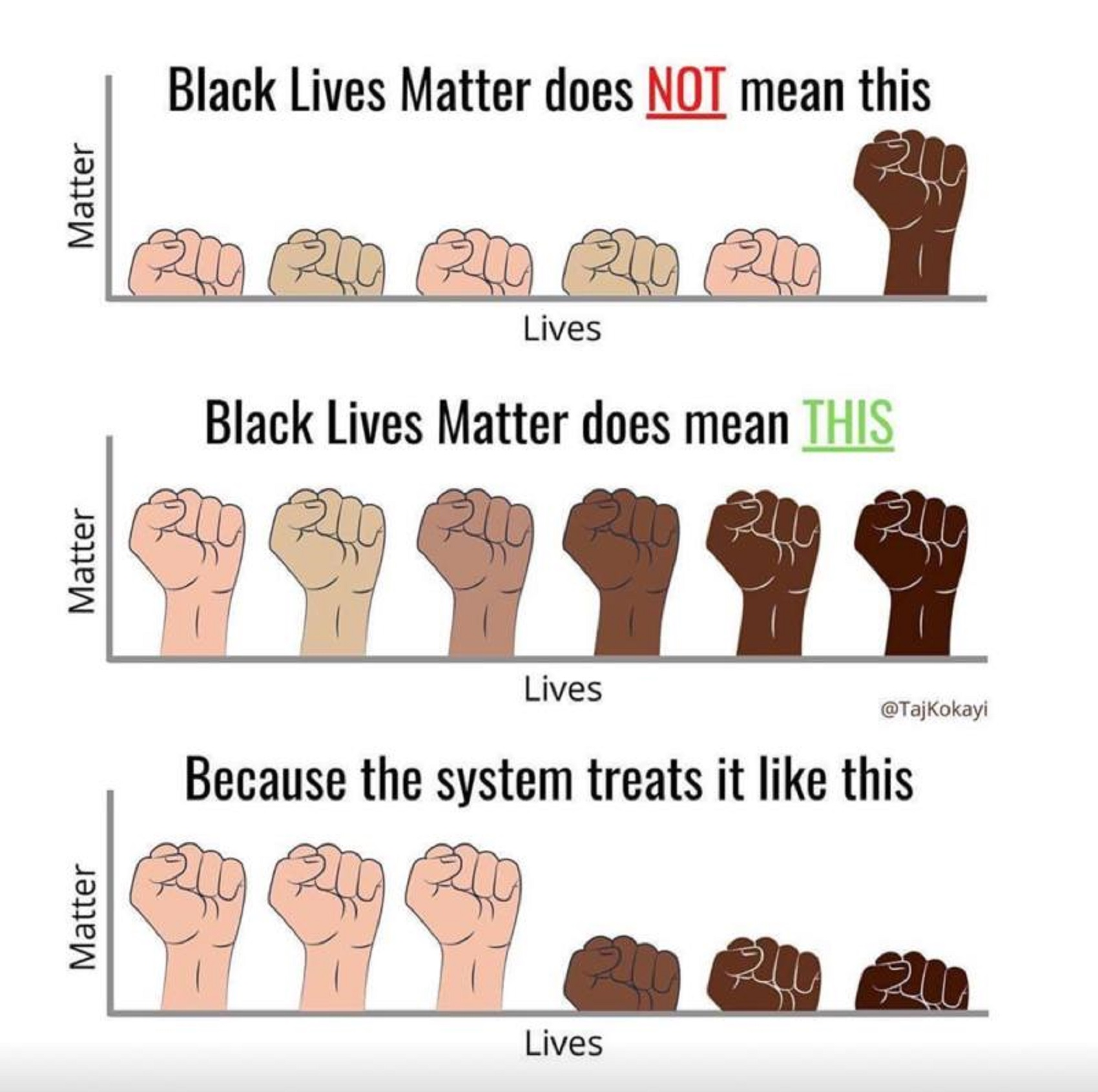
” – Bilal A. Salaam SBA
Bilal A. Salaam SBA – *** RACIAL INJUSTICE IN POWER & CONTROL ***
“1) #stereotypes – i.e… Judgments or characteristics attributed to specific groups of people (race) that may or may not be true for anyone specific individual within that group.
2) #microaggressions – i.e…Subtle, verbal or nonverbal, insults, indignities, or degrading messages directed toward an individual due to their race…
3) #implicitbias – i.e…Subconscious attitudes, perceptions, and stereotypes that influence our understanding, actions, and behaviors when interacting with people of color….” – Bilal A. Salaam SBA
“

” – Bilal A. Salaam SBA
“For those of you who believe that posts, comments, and discussions related to #RACISM DO NOT BELONG ON #linkedin LinkedIn LinkedIn Learning LinkedIn News LinkedIn Social Impact LinkedIn… The more you KNOW the more WE GROW… #LetsGROW… #SHARE #ShareItForward.” – Bilal A. Salaam SBA
“

” – Bilal A. Salaam SBA
“#ShareItForward … The more you LEARN the more WE GROW! #LetsGROW!” – Bilal A. Salaam SBA
“

” – Bilal A. Salaam SBA
“#SHARE it Forward: “Key steps and factors to understand in BECOMING AN ANTI-RACIST = Moving away from operating in a #FearZone mindset, adopting a #LearningZone mentality to inevitably begin operating out of a #GrowthZone action-oriented construct”-Coach Bilal] #LetsGROW! #endracismnow #racialbiastraining #racismisreal #endStructuralRacism #culturalcompetency #endwhitesupremacy #endpolicebrutality #endmassincarceration #defundracism #antiracism #antiracist” – Bilal A. Salaam SBA
“
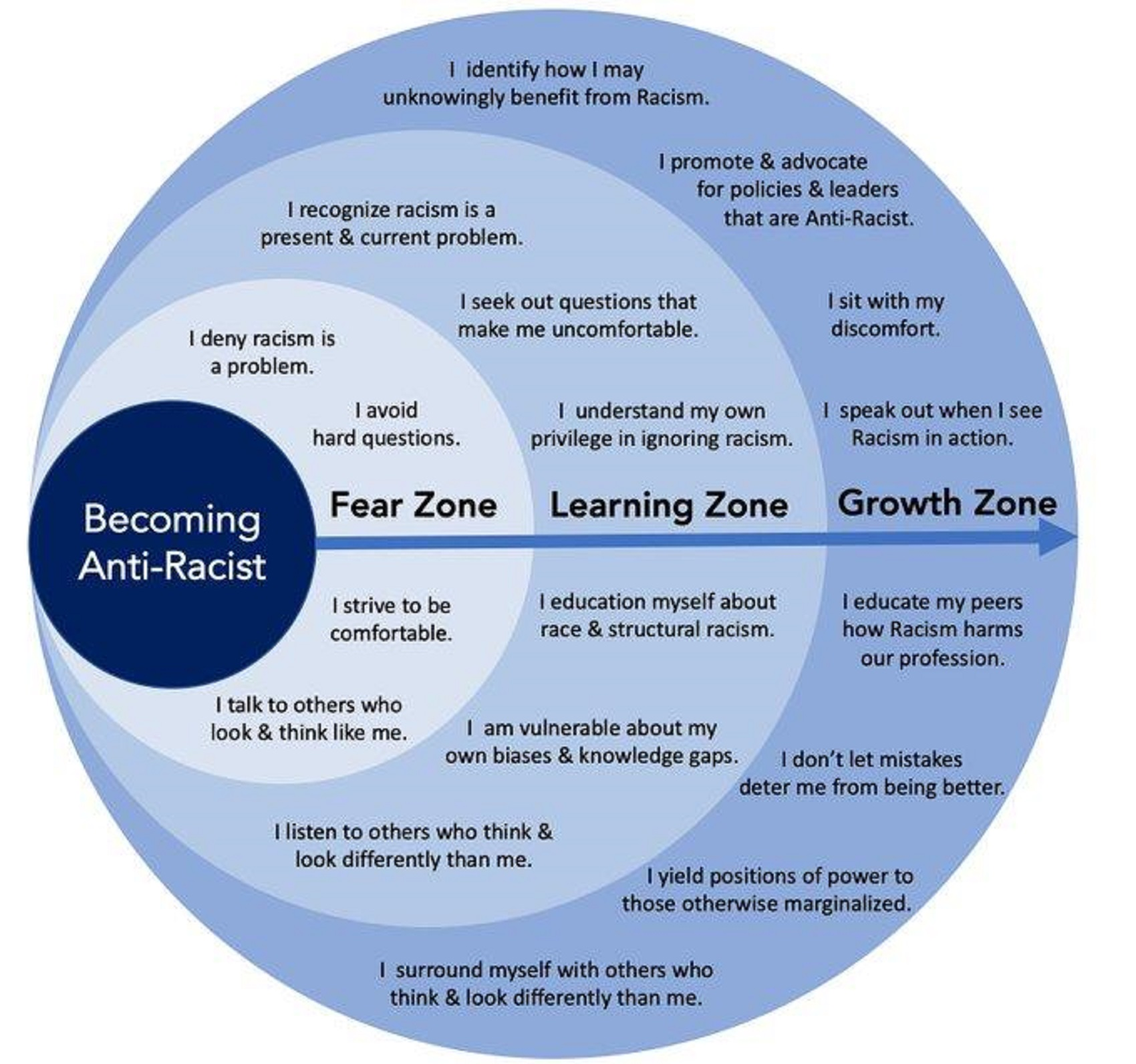
” – Bilal A. Salaam SBA
“#HOWEVER,….. The Socio-Political pimps, preachers, pundits, and snake oil salesmen are rubbing your scalp with the rap that America is NOT “Racist”; it just has some “Racist Tendencies” ???? ???? ???? ???? ????” – Bilal A. Salaam SBA
“
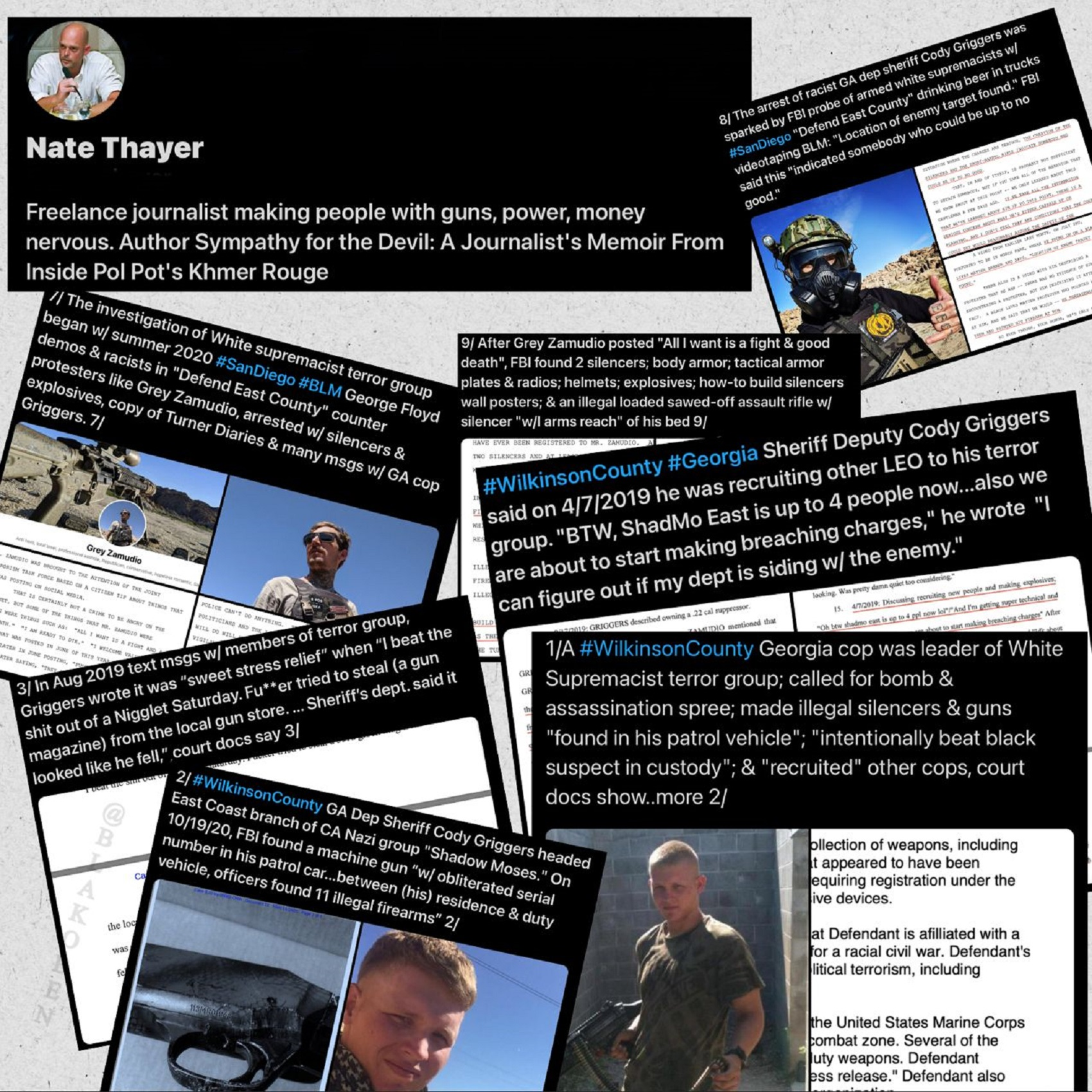
” – Bilal A. Salaam SBA
“The FAMILY of TRUTH!” – Bilal A. Salaam SBA
“
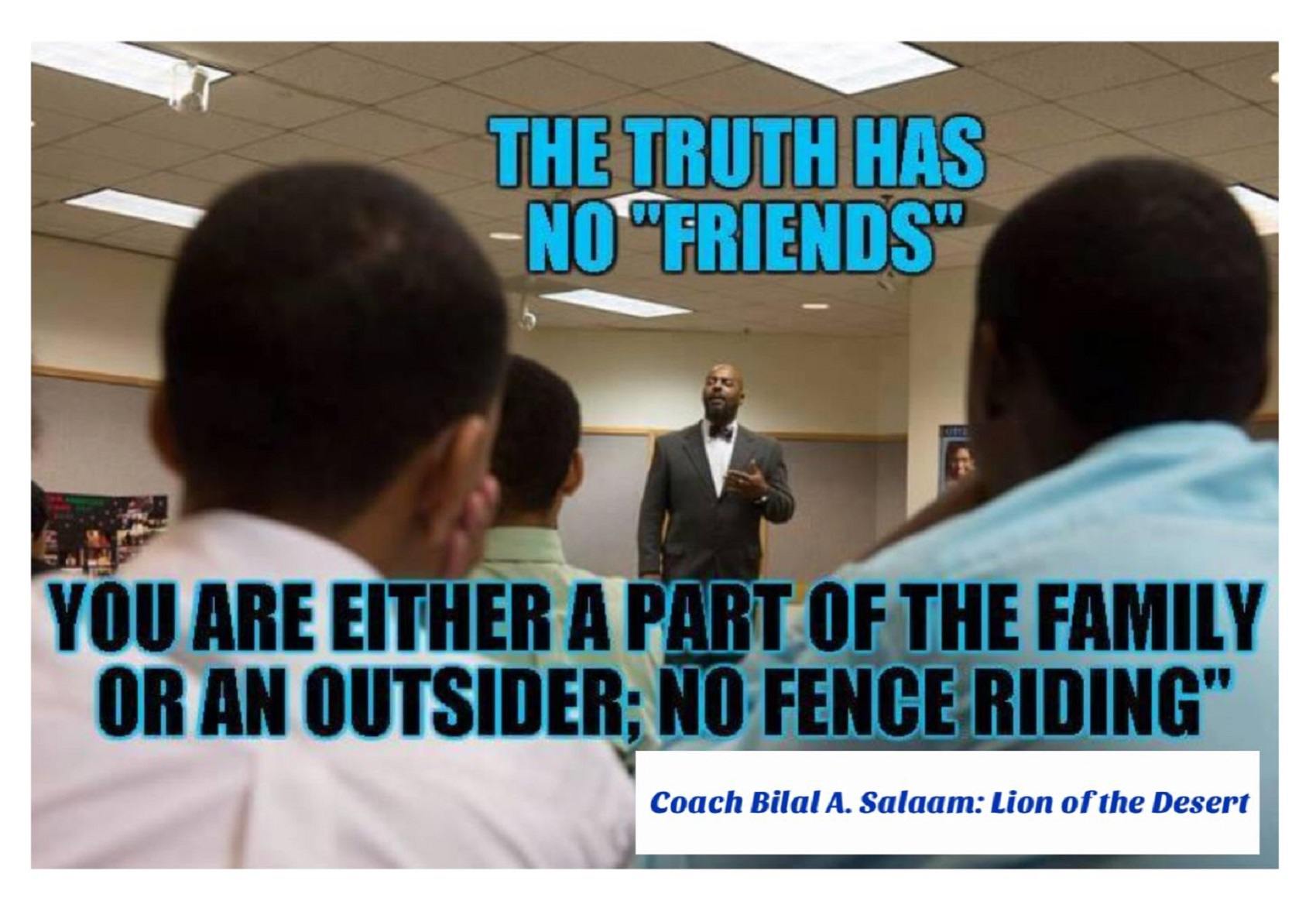
” – Bilal A. Salaam SBA
“White KIDS shoot up white-centered schools themselves but The POLICE shoot up Black and Brown centered schools”-Coach Bilal] ????????????????????♂️” – Bilal A. Salaam SBA
“

” – Bilal A. Salaam SBA
“If you don’t understand Racism/White supremacy, what it is and how it works, everything else you think you understand will only confuse you.”~Neely Fuller, Jr.” – Bilal A. Salaam SBA
“
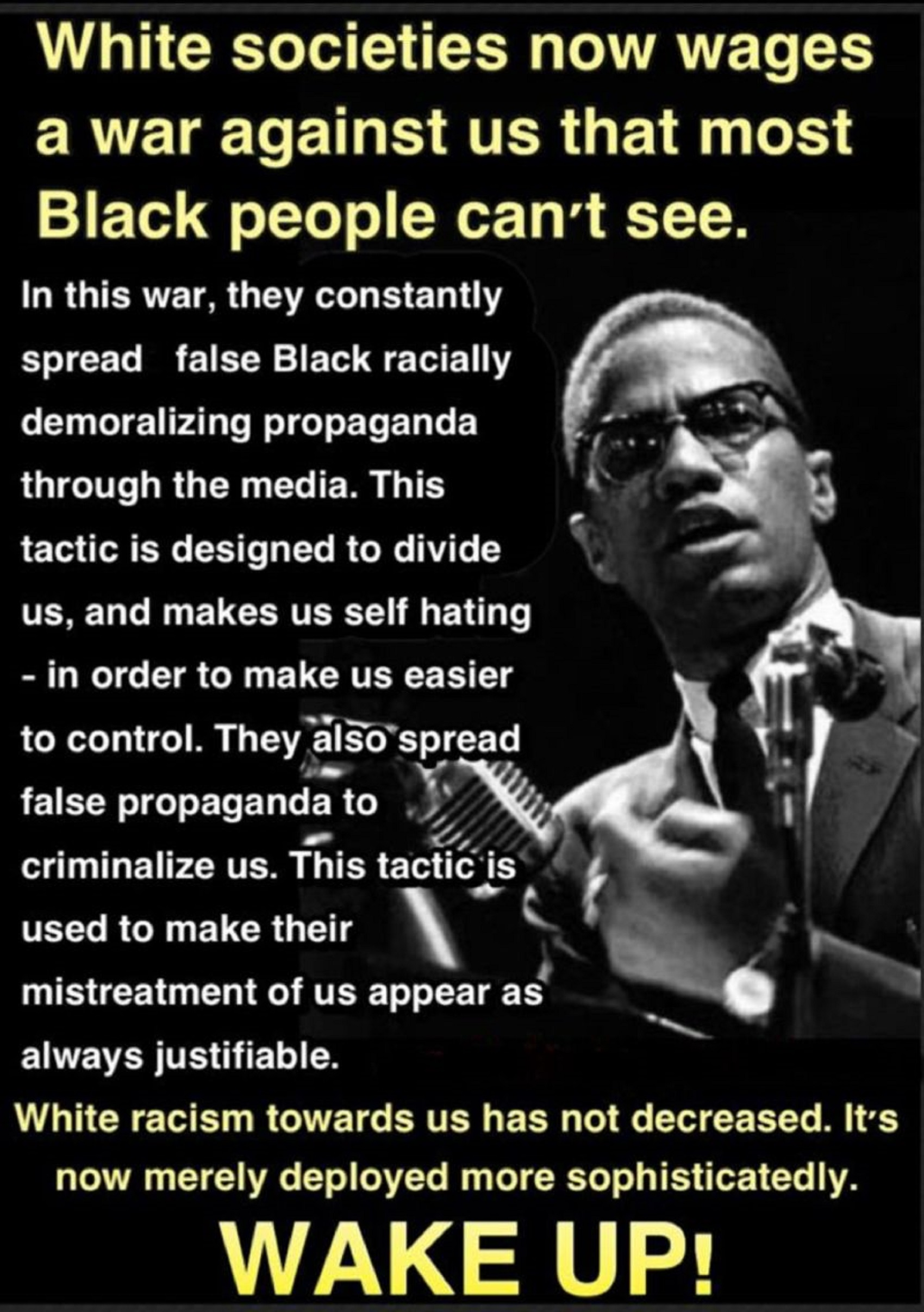
” – Bilal A. Salaam SBA
“#Snippet: “I’m going to charge them (BLACK People) with whatever felonies I can to take away their ability to vote,” he wrote in a text message, according to an FBI affidavit. He also bragged about a brutal assault on a Black man, saying “I beat the (expletive) out of a (racial slur) Saturday. (Expletive) tried to steal (a gun magazine) from the local gun store. … Sheriff’s dept. said it looked like he fell.” However, the sheriff says this was likely just made up, as there is no gun store in the area. According to the report, Griggers also made “frequent positive references to the Nazi holocaust” in his texts…”- #SourceLink: https://lnkd.in/gy_Z6pm” – Bilal A. Salaam SBA
“
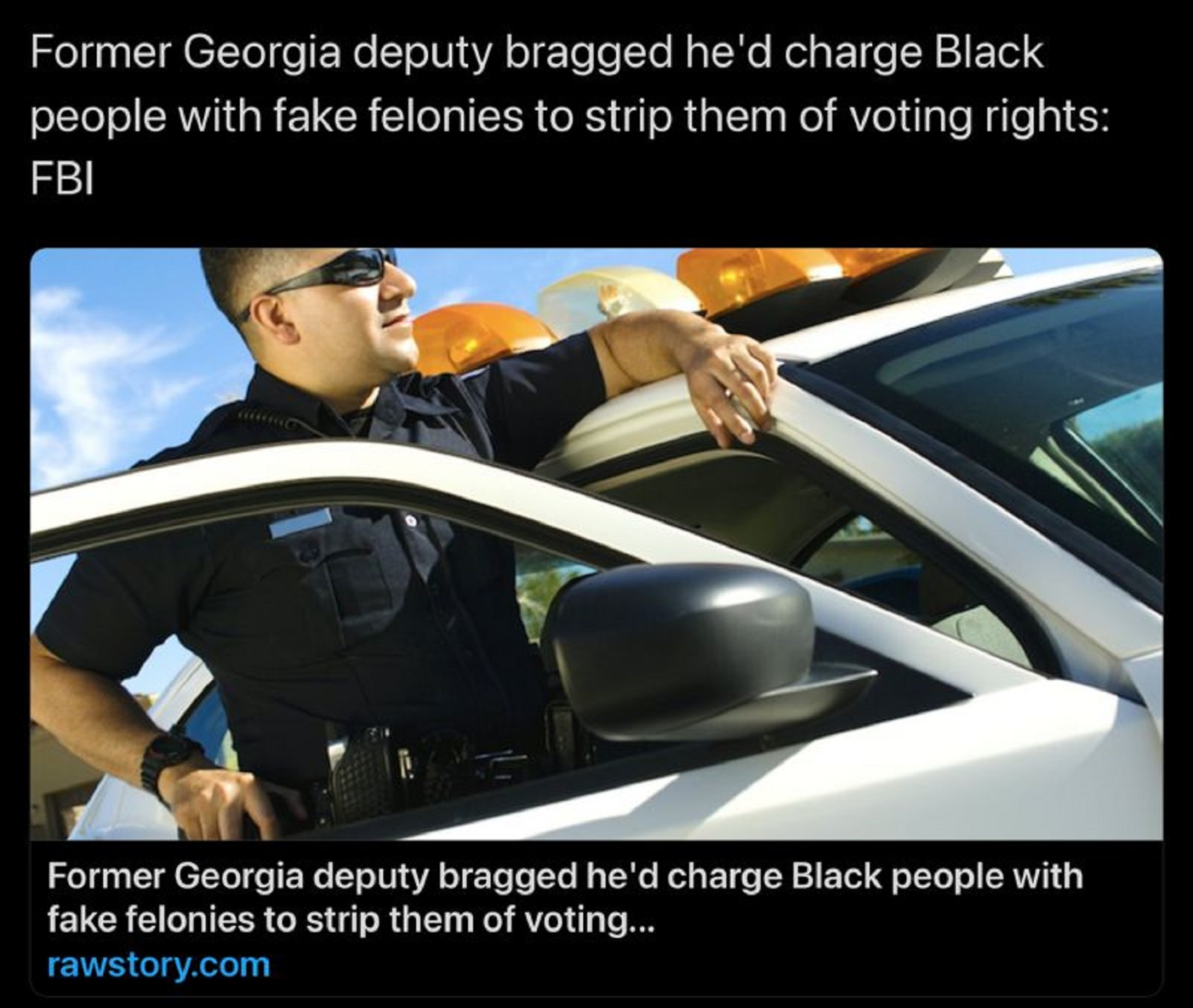
” – Bilal A. Salaam SBA
“UNARMED” doesn’t apply if you’re BLACK. Because many WHITE PEOPLE see my skin as a WEAPON. They’re afraid of my BLACKNESS, so they shoot first then come up with some WACKNESS. But excuses don’t excuse, the type of force they use. They’d rather lie, than try, to understand, what it’s like to live in this land, as a BLACK MAN.” – Bilal A. Salaam SBA
Since 2005, only six out of 2000 cops went to jail for murdering unarmed BLACK MEN & even with all these videos that shows, what everybody knows, they still continue to do it again and again, With “qualified immunity” all they have to do is say they were afraid. Then they can’t be held accountable, they can’t be sued, it’s like they got it made in the shade.” – Bilal A. Salaam SBA
Not long after a BLACK man gets shot, even while his body is still hot, supporters start making excuses & whatnot. Victim blaming, lifestyle shaming, all while maintaining..a system of brutality & injustice, JUST FOR US. Unhinged KILLER COPS go hunting regularly because they have a LICENSE TO KILL & no accountability. So, they KILL AT WILL, some for fun, or hate, or simply for the THRILL.” – Bilal A. Salaam SBA
It’s time to investigate KILLER COPS’ background, social media & affiliations. We have to shine some light, to END THIS PLIGHT. Because cops don’t just wake up one day and decide to KILL THAT NIGHT.”~by TOMTHUNKIT™” – Bilal A. Salaam SBA
“WHITE america loves the buck dancing, buckshoeing, yes massah, cheesing, grinning, running, jumping, dribbling, singing, acting, throwing, butt sniffing, beat down, downtrodden black person who willfully surrenders to the psychological enslavement of white artificial reality and literally hates any and every free-minded, free-spirited black person who refuse to surrender to their insanity….. smmfh” – Bilal A. Salaam SBA
Bilal A. Salaam SBA• 1stTransformational Behavior Coach ???????????????????????? (Specializing in culturally specific transformational behavior) We/Us/Our #Ubuntu #Maat #NguzaSaba #Sankofa #defundRACISM8h •
“At the heart of this “America isn’t a racist country” talk coming from both Republicans and Democrats is their agreement with each other that this country doesn’t owe Black Americans anything. Remember that.”-JBG” – Bilal A. Salaam SBA
“????????♂️ “Please stop saying People of Color when you mean Black, Because policies are enacted that benefit “People of Color” But never benefit BLACK People. When I say BLACK, I MEAN BLACK.”-Hannah Drake” – Bilal A. Salaam SBA
“(((POLICE TRAINING 101))) “”if you want to have the BEST SEX of your life; just kill someone”” ????????????♂️… “Killing is just not that big a deal.”..”Feel good about it.” America’s #1 police trainer tells cops “that sex after killing another human “is the best sex,” a “very intense sex,” and one of the “perks that come with the job.”~Law Enforcement agencies pay Dave Grossman to train police officers to take pride in shooting people….. (#CantMakeThisSh1tUp) (Pure Insanity) (CavemanMentality) …. #endsexualviolence #enddomesticviolence #endsextrafficking #endpolicebrutality #endracismnow #endwhitesupremacy” – Bilal A. Salaam SBA
“…one of its leaders from Arizona, Jim Arroyo, spoke openly about the close involvement of police officers. “Our guys are very experienced,” said Arroyo. “We have active-duty law enforcement in our organization that are helping to train us. We can blend in with our law enforcement and in fact, in a lot of cases, our training is much more advanced because of our military backgrounds.” – The Daily Beast] ….. #endracism #endwhitesupremacy #endpolicebrutality #endracismnow #endmassincarceration” – Bilal A. Salaam SBA
“When a person is MURDERED they did not “Lose their life”, they did not “pass away”, they did not “sacrifice their life”; THEY WERE KILLED! They were MURDERED and no amount of media-based flowery words and politically “correct” commentary can change those FACTS! .. MURDER is not a natural “passing or losing” construct of life it’s a TAKING OF LIFE, an ENDING of life at the hands of another living being…” – Bilal A. Salaam SBA
“I need to run some errands this morning. To ensure I arrive alive, I won’t take public transit (Oscar Grant). I removed all air fresheners from the vehicle & double-checked my registration status (Daunte Wright), & ensured my license plates were visible (Lt. Caron Nazario). I will be careful to follow all traffic rules (Philando Castille), signal every turn (Sandra Bland), keep radio volume low (Jordan Davis) & won’t stop at a fast-food chain for a meal (Rayshard Brooks). I’m too afraid to pray (Rev. Clementa C. Pickney) so I just hope the car won’t break down (Corey Jones).” – Bilal A. Salaam SBA
“When you run errands today, be sure not to dance (Elijah McClain), stop to play in the park (Tamir Rice), patronize the local convenience store for snacks (Trayvon Martin), or walk around the neighborhood (Mike Brown). Once home, don’t stand in your backyard (Stephon Clark), eat ice cream on the couch (Botham Jean), or play any video games (Atatiana Jefferson).” – Bilal A. Salaam SBA
“I guess I’ll watch a movie around 7, I won’t leave the house to go to Walmart (John Crawford) or to the gym (Tshyrand Oates) or on a jog (Ahmaud Arbery). I won’t even walk to see the birds (Christian Cooper). I’ll just sit & remember what a blessing it is to breathe (George Floyd) & I definitely won’t go to sleep (Breonna Taylor).” – Bilal A. Salaam SBA
“Just let this all sink in!”-David Grey but 109 Black Men And Boys Killed By Police” – Bilal A. Salaam SBA
“
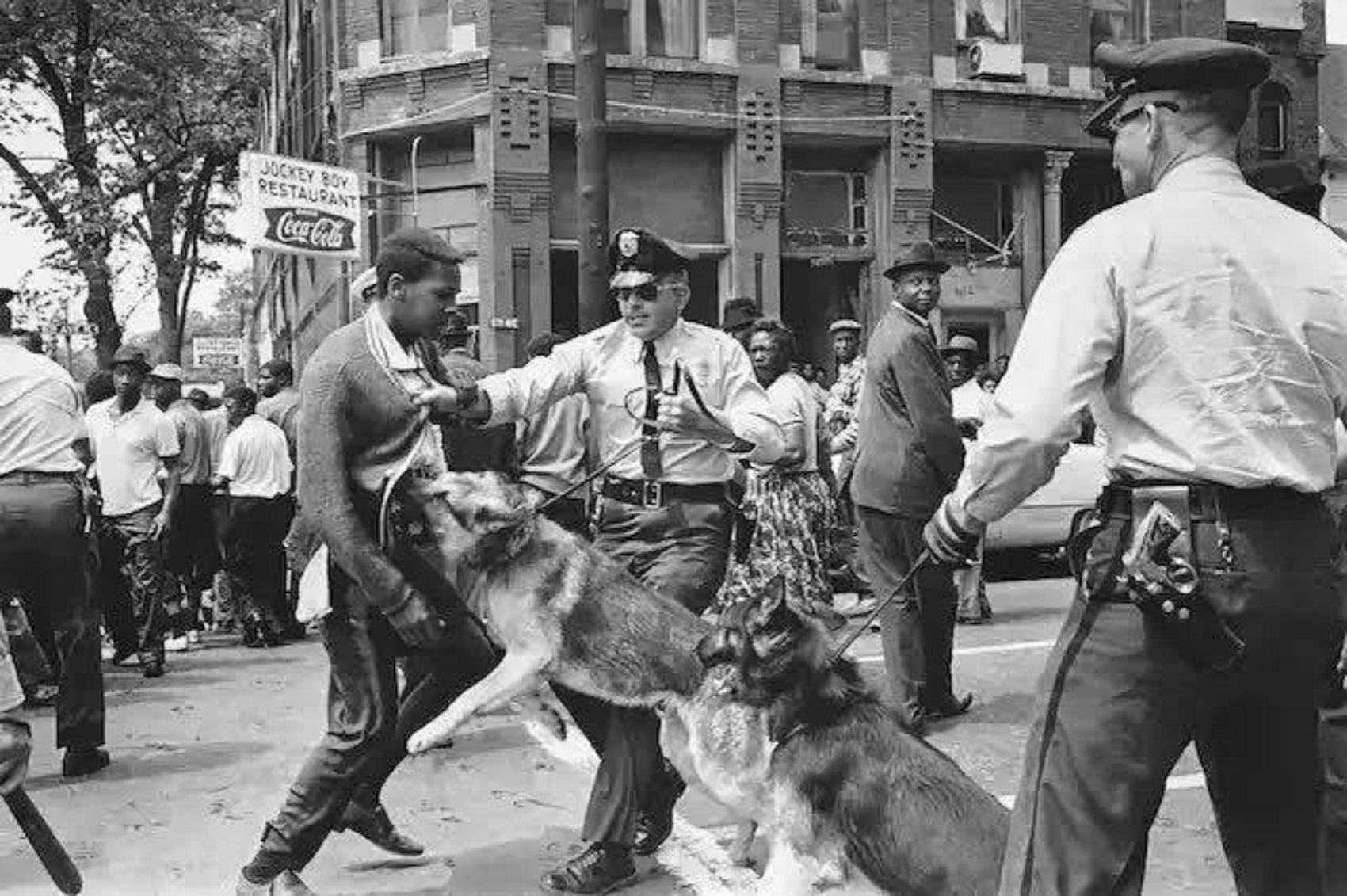
” – Bilal A. Salaam SBA
“
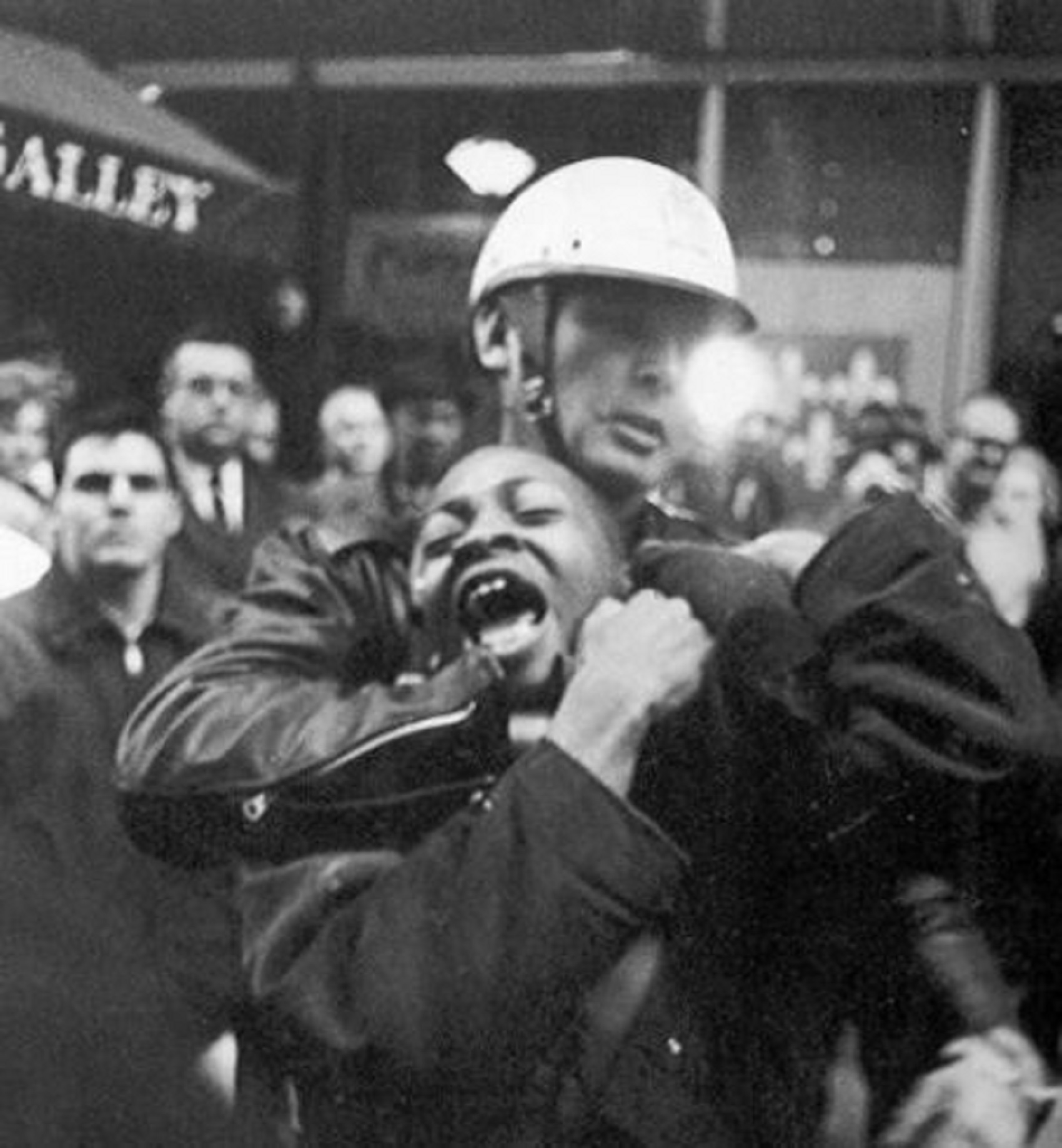
” – Bilal A. Salaam SBA
“A hundred yrs ago they used to put on a white sheet & use a bloodhound against negroes; Today they’ve taken off the white sheet & put on police uniforms, they’ve traded in the bloodhounds for police dogs.”-Malcolm X” – Bilal A. Salaam SBA
“
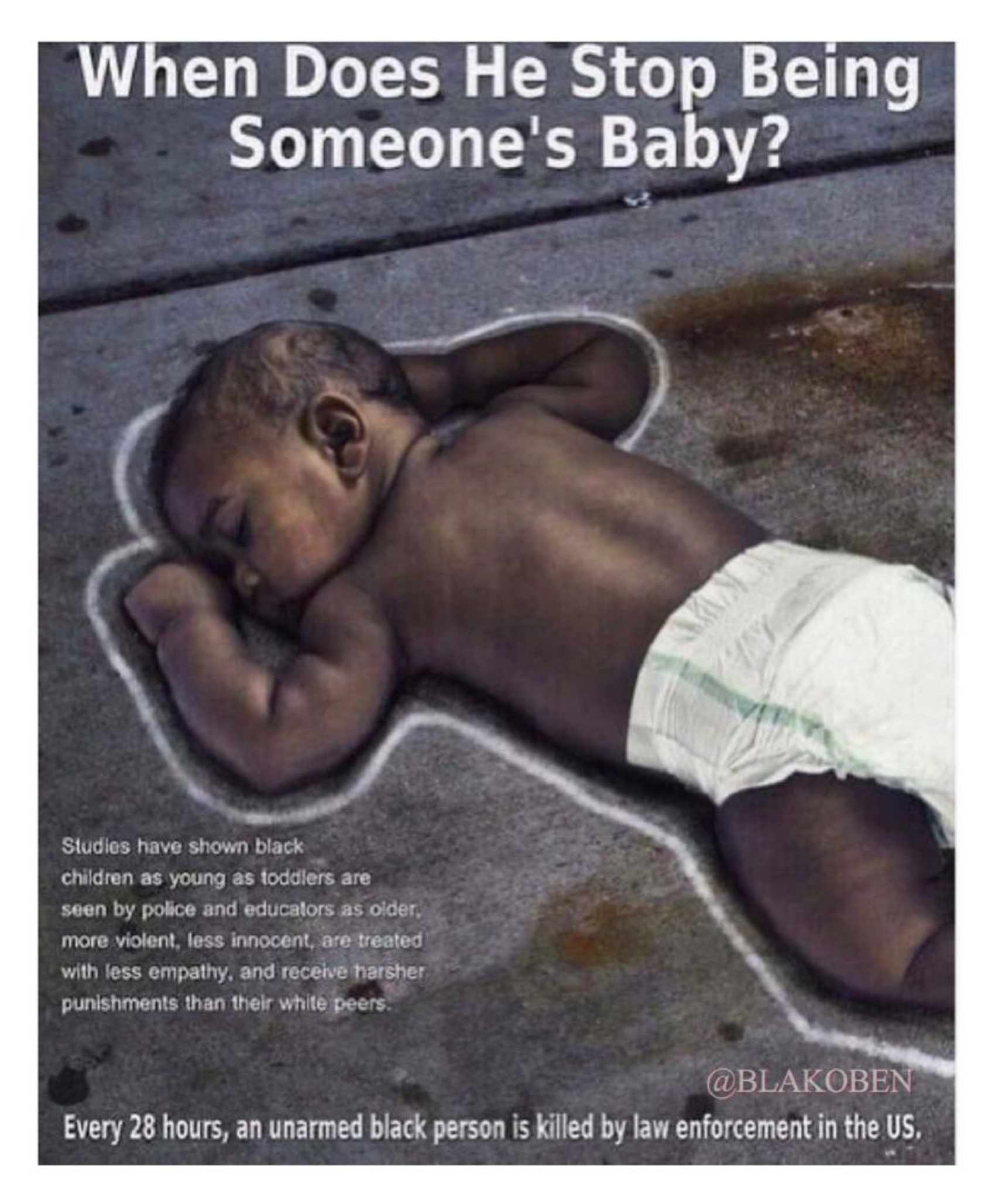
” – Bilal A. Salaam SBA
“????????♂️ When Does He Stop Being Someone’s Baby?… Studies have shown black children as young as toddlers are seen by police and educators as older, more violent, less innocent, are treated with less empathy, and receive harsher punishments than their white peers. Every 28 hours, an unarmed black person is killed by law enforcement in the US.” – Bilal A. Salaam SBA
“In order to be effective, TRUTH must penetrate like an arrow – and that is likely to hurt”-Wei wu Wei] ????” – Bilal A. Salaam SBA
“
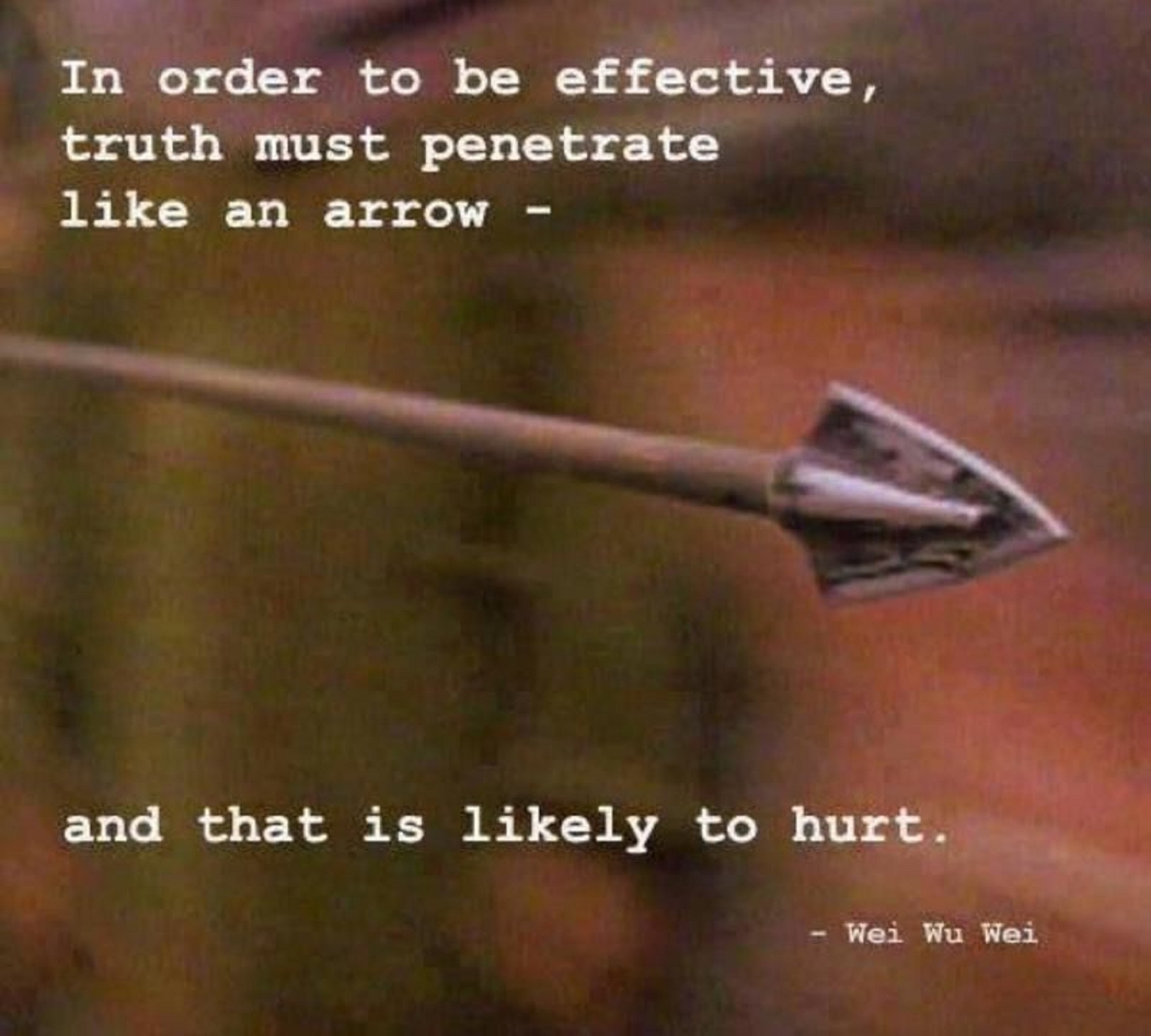
” – Bilal A. Salaam SBA
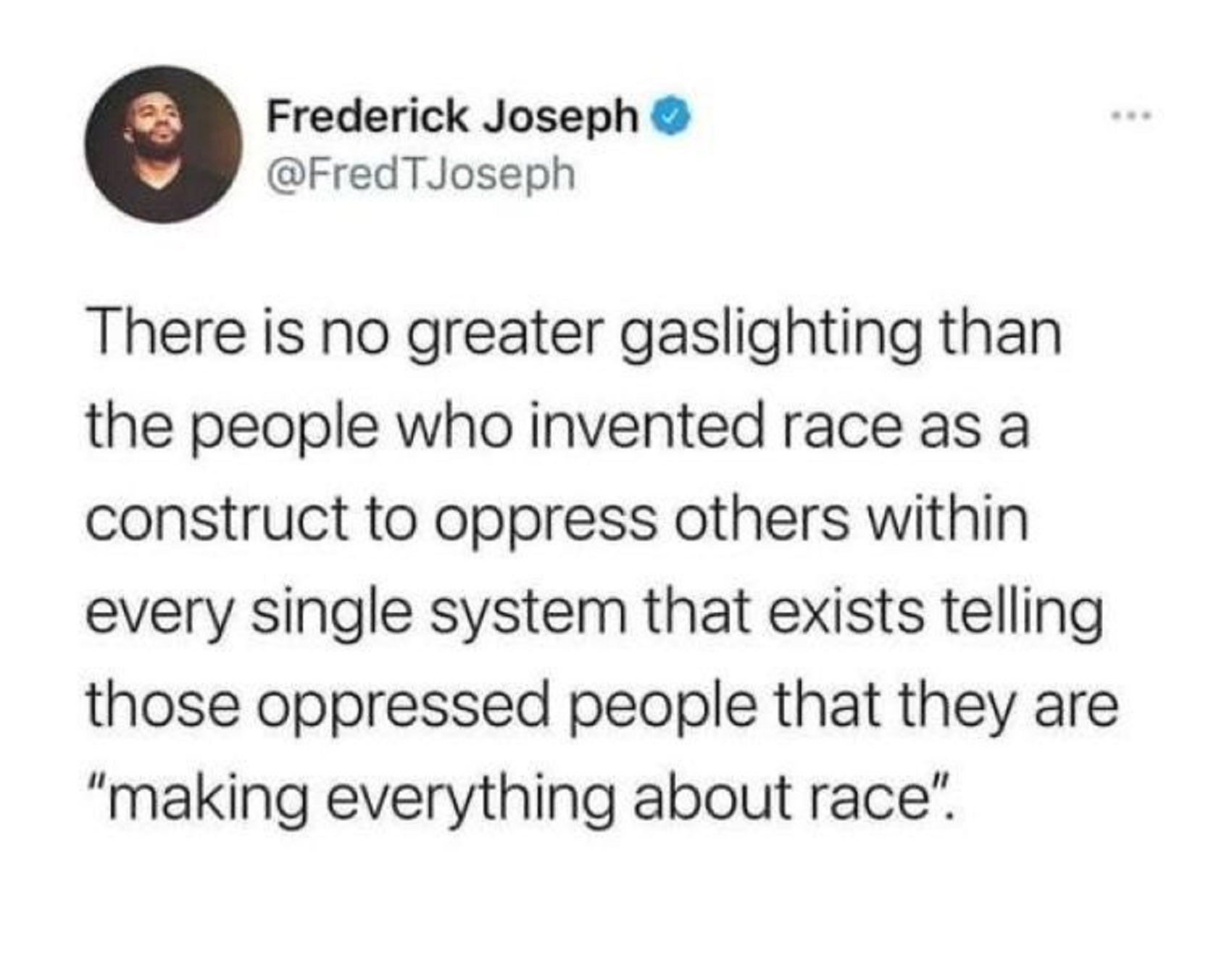
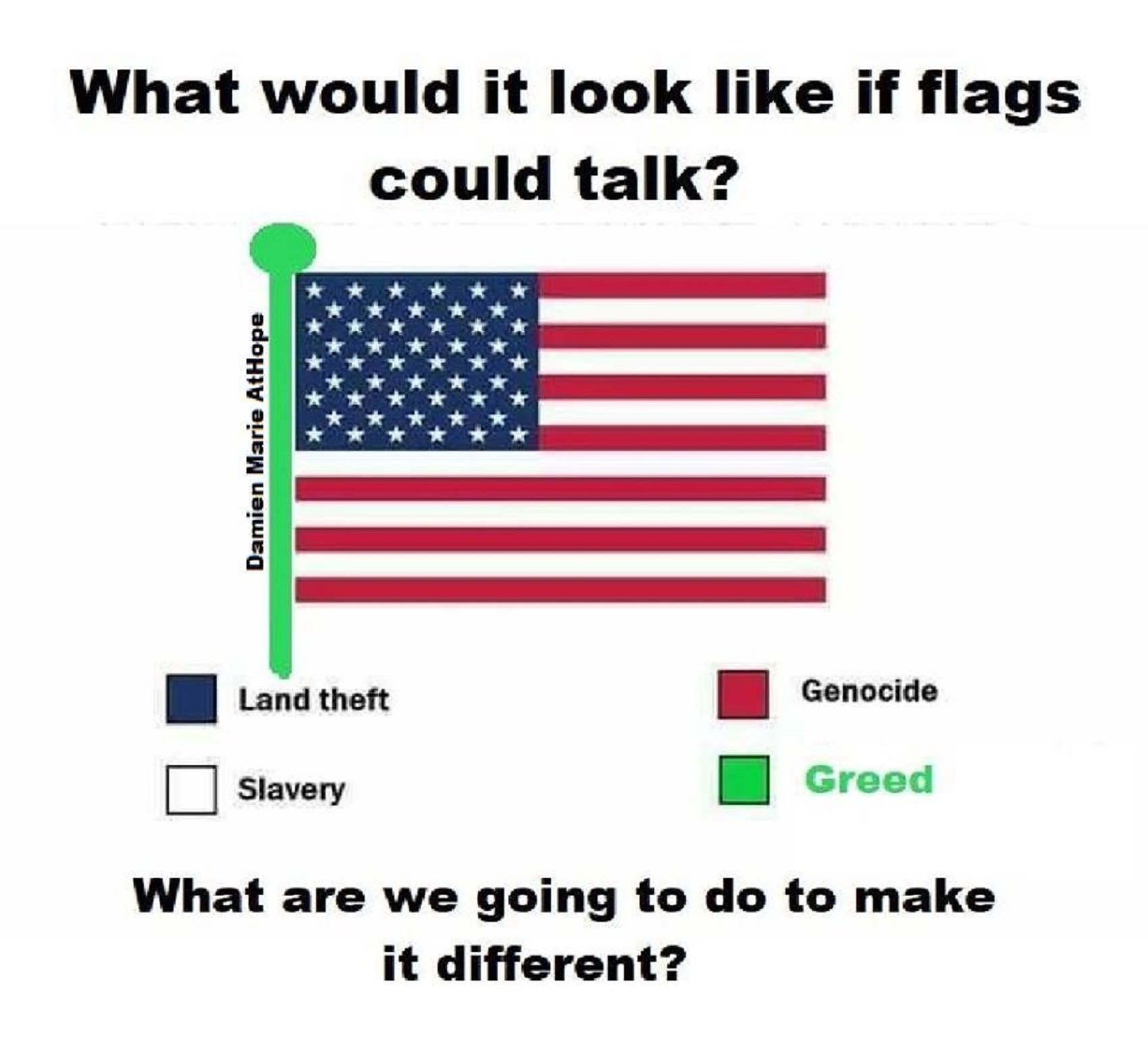
Racism in the United States?
“Racism has been reflected in discriminatory laws, practices, and actions (including violence) at various times in the history of the United States against racial or ethnic groups. Throughout American history, white Americans have generally enjoyed legally or socially sanctioned privileges and rights, which have been denied to members of various ethnic or minority groups at various times. European Americans, and affluent white Anglo-Saxon Protestants in particular, are said to have enjoyed advantages in matters of education, immigration, voting rights, citizenship, land acquisition, and criminal procedure.” ref
“Racism against various ethnic or minority groups has existed in the United States since the early colonial era. Before 1865, most African Americans were enslaved and even afterwards, they have faced severe restrictions on their political, social, and economic freedoms. Native Americans have suffered genocide, forced removals, and massacres, and they continue to face discrimination. Hispanics, Middle Eastern and Asian Americans along with Pacific Islanders have also been the victims of discrimination. In addition, non-Protestant immigrants from Europe, particularly Jews, Poles, Italians, and the Irish were often subjected to xenophobic exclusion and other forms of ethnicity-based discrimination.” ref
“Racism has manifested itself in a variety of ways, including genocide, slavery, lynchings, segregation, Native American reservations and boarding schools, racist immigration and naturalization laws, and internment camps. Formal racial discrimination was largely banned by the mid-20th century and over time, coming to be perceived as socially and morally unacceptable. Racial politics remains a major phenomenon, and racism continues to be reflected in socioeconomic inequality. Into the 21st century, research has uncovered extensive evidence of racial discrimination in various sectors of modern U.S. society, including the criminal justice system, business, the economy, housing, health care, the media, and politics. In the view of the United Nations and the U.S. Human Rights Network, “discrimination in the United States permeates all aspects of life and extends to all communities of color.” ref
Racism in Aspects of American Life
Culture of the United States, Culture of the Southern United States, and Society of the United States
Citizenship and immigration
“The Naturalization Act of 1790 set the first uniform rules for the granting of United States citizenship by naturalization, which limited naturalization to “free white person[s]”, thus excluding Native Americans, indentured servants, slaves, free Blacks and later Asians from citizenship. Citizenship and the lack of it profoundly impacted various legal and political rights, the most notable of which were suffrage rights at both the federal and state level, the right to hold certain government offices, jury duty, military service in the United States Armed Forces, as well as many other activities, besides access to government assistance and services. The second Militia Act of 1792 also provided for the conscription of every “free able-bodied white male citizen”. Tennessee’s 1834 Constitution included a provision: “the free white men of this State have a right to Keep and bear arms for their common defense.” ref
“The Treaty of Dancing Rabbit Creek, made under the Indian Removal Act of 1830, allowed those Choctaw Indians who chose to remain in Mississippi to gain recognition as U.S. citizens, the first major non-European ethnic group to become entitled to U.S. citizenship. Racial discrimination in naturalization and immigration continued despite the Equal Protection Clause in the Fourteenth Amendment to the United States Constitution (ratified in 1868). The Fourteenth Amendment overruled previous court decisions and gave U.S.-born African Americans citizenship through birthright citizenship. The Naturalization Act of 1870 extended naturalization to Black persons, but not to other non-white persons and revoked the citizenship of naturalized Chinese Americans. The law relied on coded language to exclude “aliens ineligible for citizenship” which primarily applied to Chinese and Japanese immigrants.” ref
“Native Americans were granted citizenship in a piece-meal manner until the Indian Citizenship Act of 1924, which unilaterally bestowed blanket citizenship status on them, whether they belonged to a federally recognized tribe or not, though by that date, two-thirds of Native Americans had already become US citizens by various means. The Act was not retroactive, so citizenship was not extended to Native Americans who were born before the effective date of the 1924 Act, nor was it extended to indigenous persons who were born outside the United States. Further changes to racial eligibility for citizenship by naturalization were made after 1940, when eligibility was extended to “descendants of races indigenous to the Western Hemisphere,” “Filipino persons or persons of Filipino descent,” “Chinese persons or persons of Chinese descent,” and “persons of races indigenous to India.” The Immigration and Nationality Act of 1952 now prohibits racial and gender discrimination in naturalization. During the period when only “white” people could be naturalized, many court decisions were required to define which ethnic groups were included in this term. These are known as the “racial prerequisite cases“, and they also informed subsequent legislation.” ref
Voting
“The Fifteenth Amendment to the United States Constitution (ratified in 1870), explicitly prohibited denying the right to vote based on race, but delegated to Congress the responsibility for enforcement. During the Reconstruction era, African Americans began to run for office and vote, but the Compromise of 1877 ended the era of strong federal enforcement of equal rights in the Southern states. White Southerners were prevented by the Fifteenth Amendment from explicitly denying the vote to Blacks by law, but found other ways to disenfranchise. Jim Crow laws that targeted African Americans without mentioning race included poll taxes, literacy and comprehension tests for voters, residency and record-keeping requirements, and grandfather clauses allowing White people to vote. Black Codes criminalized minor offenses like unemployment (styled “vagrancy”), providing a pretext to deny voting rights. Extralegal violence was also used to terrorize and sometimes kill African Americans who attempted to register or to vote, often in the form of lynching and cross burning. These efforts to enforce white supremacy were very successful. For example, after 1890, less than 9,000 of Mississippi’s 147,000 eligible African American voters were registered to vote, or about 6%. Louisiana went from 130,000 registered African American voters in 1896 to 1,342 in 1904 (about a 99% decrease).” ref
“Even Native Americans who gained citizenship under the 1924 Act were not guaranteed voting rights until 1948. According to a survey by the Department of Interior, seven states still refused to grant Indians voting rights in 1938. Discrepancies between federal and state control provided loopholes in the Act’s enforcement. States justified discrimination based on state statutes and constitutions. Three main arguments for Indian voting exclusion were Indian exemption from real estate taxes, maintenance of tribal affiliation and the notion that Indians were under guardianship, or lived on lands controlled by federal trusteeship. By 1947, all states with large Indian populations, except Arizona and New Mexico, had extended voting rights to Native Americans who qualified under the 1924 Act. Finally, in 1948, a judicial decision forced the remaining states to withdraw their prohibition on Indian voting.” ref
“The civil rights movement resulted in strong Congressional enforcement of the right to vote regardless of race, starting with the Voting Rights Act of 1965. Though this greatly enhanced the ability of racial minorities to vote and run for office in all areas of the country, concerns over racially discriminatory voting laws and administration persist. Gerrymandering and voter suppression efforts around the country, though mainly motivated by political considerations, often effectively disproportionately affect African Americans and other minorities. These include targeted voter ID requirements, registration hurdles, restricting vote-by-mail, and making voting facilities physically inconvenient to access due to long distances, long lines, or short hours. The 2013 U.S. Supreme Court decision Shelby County v. Holder struck down the pre-clearance provisions of the 1965 Act, making anti-discrimination enforcement more difficult. In 2016, one in 13 African Americans of voting age was disenfranchised, more than four times greater than that of non-African Americans. Over 7.4% of adult African Americans were disenfranchised compared to 1.8% of non-African Americans. Felony disenfranchisement in Florida disqualifies over 10% of its citizens for life and over 23% of its African American citizens.” ref
Criminal justice system
Race in the United States criminal justice system See also: Criminal justice reform in the United States, Human rights in the United States, Incarceration in the United States, Police brutality in the United States, Race and the war on drugs, and Racial bias in criminal news in the United States
“There are unique experiences and disparities in the United States in regard to the policing and prosecuting of various races and ethnicities. There have been different outcomes for different racial groups in convicting and sentencing felons in the United States criminal justice system. Experts and analysts have debated the relative importance of different factors that have led to these disparities. Academic research indicates that the over-representation of some racial minorities in the criminal justice system can in part be explained by socioeconomic factors, such as poverty, exposure to poor neighborhoods, poor access to public education, poor access to early childhood education, and exposure to harmful chemicals (such as lead) and pollution. Racial housing segregation has also been linked to racial disparities in crime rates, as Blacks have historically and to the present been prevented from moving into prosperous low-crime areas through actions of the government (such as redlining) and private actors.” ref
“Various explanations within criminology have been proposed for racial disparities in crime rates, including conflict theory, strain theory, general strain theory, social disorganization theory, macrostructural opportunity theory, social control theory, and subcultural theory. Research also indicates that there is extensive racial and ethnic discrimination by police and the judicial system. A substantial academic literature has compared police searches (showing that contraband is found at higher rates in whites who are stopped), bail decisions (showing that whites with the same bail decision as Blacks commit more pre-trial violations), and sentencing (showing that Blacks are more harshly sentenced by juries and judges than whites when the underlying facts and circumstances of the cases are similar), providing valid causal inferences of racial discrimination. Studies have documented patterns of racial discrimination, as well as patterns of police brutality and disregard for the constitutional rights of African-Americans, by police departments in various American cities, including Los Angeles, New York, Chicago, and Philadelphia.” ref
Educational
“In 1954, Brown vs. the Board of Education ruled that integrated, equal schools be accessible to all children unbiased to skin color. Currently, in the United States, not all state-funded schools are equally funded. Schools are funded by the “federal, state, and local governments” while “states play a large and increasing role in education funding.” “Property taxes support most of the funding that local government provides for education.” Schools located in lower-income areas receive a lower level of funding and schools located in higher-income areas receiving greater funding for education all based on property taxes. The U.S. Department of Education reports that “many high-poverty schools receive less than their fair share of state and local funding, leaving students in high-poverty schools with fewer resources than schools attended by their wealthier peers.” ref
“The U.S. Department of Education also reports this fact affects “more than 40% of low-income schools.” Children of color are much more likely to suffer from poverty than white children. The phrase “brown paper bag test,” also known as a paper bag party, along with the “ruler test” refers to a ritual once practiced by certain African-American sororities and fraternities who would not let anyone into the group whose skin tone was darker than a paper bag. Spike Lee‘s film School Daze satirized this practice at historically Black colleges and universities. Along with the “paper bag test,” guidelines for acceptance among the lighter ranks included the “comb test” and “pencil test,” which tested the coarseness of one’s hair, and the “flashlight test,” which tested a person’s profile to make sure their features measured up or were close enough to those of the Caucasian race.” ref
Curriculum
“The curriculum in U.S. schools has also contained racism against non-white Americans, including Native Americans, Black Americans, Mexican Americans, and Asian Americans. Particularly during the 19th and early 20th centuries, school textbooks and other teaching materials emphasized the biological and social inferiority of Black Americans, consistently portraying Black people as simple, irresponsible, and oftentimes, in situations of suffering that were implied to be their fault (and not the effects of slavery and other oppression). Black Americans were also depicted as expendable and their suffering as commonplace, as evidenced by a poem about “Ten Little Nigger Boys” dying off one by one that was circulated as a children’s counting exercise from 1875 to the mid-1900s. Historian Carter G. Woodson analyzed American curriculum as completely lacking any mention of Black Americans’ merits in the early 20th century. Based on his observations of the time, he wrote that American students, including Black students, who went through U.S. schooling would come out believing that Black people had no significant history and had contributed nothing to human civilization.” ref
“School curriculum often implicitly and explicitly upheld white people as the superior race and marginalized the contributions and perspectives of non-white peoples as if they were (or are) not as important. In the 19th century, a significant number of students were taught that Adam and Eve were white, and the other races evolved from their various descendants, growing further and further away from the original white standard. In addition, whites were also fashioned as the capable caretakers of other races, namely Black and Native people, who could not take care of themselves. This concept was at odds with the violence white Americans had committed against indigenous and Black peoples, but it was coupled with soft language that, for example, defended these acts. Mills (1994) cites the narrative about Europeans’ “discovery” of a “New World,” despite the people who already inhabited it, and its subsequent “colonization” instead of conquest, as examples. He maintains that these word choices constitute a cooptation of history by white people, who have used it to their advantage.” ref
Health
“A 2019 review of the literature in the Annual Review of Public health found that structural racism, cultural racism, and individual-level discrimination are “a fundamental cause of adverse health outcomes for racial/ethnic minorities and racial/ethnic inequities in health.” Studies have argued that there are racial disparities in how the media and politicians act when they are faced with cases of drug addiction in which the victims are primarily Black rather than white, citing the examples of how society responded differently to the crack epidemic than the opioid epidemic. There are major racial differences in access to health care as well as major racial differences in the quality of the health care which is provided to people. A study published in the American Journal of Public Health estimated that: “over 886,000 deaths could have been prevented from 1991 to 2000 if African Americans had received the same quality of care as whites”. The key differences which they cited were lack of insurance, inadequate insurance, poor service, and reluctance to seek care. A history of government-sponsored experimentation, such as the notorious Tuskegee Syphilis Study has left a legacy of African American distrust of the medical system.” ref
“Inequalities in health care may also reflect a systemic bias in the way in which medical procedures and treatments are prescribed to members of different ethnic groups. A University of Edinburgh Professor of Public Health, Raj Bhopal, writes that the history of racism in science and medicine shows that people and institutions behave according to the ethos of their times and he also warns of dangers that need to be avoided in the future. Nancy Krieger, a Harvard Professor of Social Epidemiology, contended that much modern research supported the assumptions which were needed to justify racism. She wrote that racism underlies unexplained inequities in health care, including treatments for heart disease, renal failure, bladder cancer, and pneumonia. Bhopal writes that these inequalities have been documented in various studies and there are consistent findings that Black Americans receive less health care than white Americans—particularly where this involves expensive new technology.” ref
“The University of Michigan Health study found in 2010 that black patients in pain clinics received 50% of the amount of drugs that other patients who were white received. Black pain in medicine links to the racial disparities between pain management and racial bias on behalf of the health professional. In 2011, Vermont organizers took a proactive stand against racism in their communities to defeat the biopolitical struggles faced on a daily basis. The first and only universal health care law was passed in the state. Two local governments in the US have issued declarations stating that racism constitutes a public health emergency: the Milwaukee County, Wisconsin executive in May 2019, and the Cleveland City Council, in June 2020.” ref
Housing and land
“A 2014 meta-analysis found extensive evidence of racial discrimination in the American housing market. Minority applicants for housing needed to make many more inquiries to view properties. Geographical steering of African Americans in US housing remains significant. A 2003 study found “evidence that agents interpret an initial housing request as an indication of a customer’s preferences, but also are more likely to withhold a house from all customers when it is in an integrated suburban neighborhood (redlining). Moreover, agents’ marketing efforts increase with asking price for white, but not for black, customers; blacks are more likely than whites to see houses in suburban, integrated areas (steering); and the houses agents show are more likely to deviate from the initial request when the customer is black than when the customer is white. These three findings are consistent with the possibility that agents act upon the belief that some types of transactions are relatively unlikely for black customers (statistical discrimination).” ref
“Historically, there was extensive and long-lasting racial discrimination against African Americans in the housing and mortgage markets in the United States, as well as discrimination against Black farmers whose numbers massively declined in post-WWII America due to anti-Black local and federal policies. According to a 2019 analysis by University of Pittsburgh economists, Blacks faced a two-fold penalty due to the racially segregated housing market: rental prices increased in blocks when they underwent racial transition whereas home values declined in neighborhoods that Blacks moved into. A 2017 paper by Troesken and Walsh found that pre-20th century cities “created and sustained residential segregation through private norms and vigilante activity.” However, “when these private arrangements began to break down during the early 1900s” whites started “lobbying municipal governments for segregation ordinances.” As a result, cities passed ordinances which “prohibited members of the majority racial group on a given city block from selling or renting property to members of another racial group” between 1909 and 1917.” ref
“A 2017 study by Federal Reserve Bank of Chicago economists found that the practice of redlining—the practice whereby banks discriminated against the inhabitants of certain neighborhoods—had a persistent adverse impact on the neighborhoods, with redlining affecting homeownership rates, home values, and credit scores in 2010. Since many African Americans could not access conventional home loans, they had to turn to predatory lenders (who charged high interest rates). Due to lower homeownership rates, slumlords were able to rent out apartments that would otherwise be owned. A 2019 analysis estimated that predatory housing contracts targeting African Americans in Chicago in the 1950s and 1960s cost Black families between $3 billion and $4 billion in wealth.” ref
Labor market
“Several meta-analyses find extensive evidence of ethnic and racial discrimination in hiring in the American labor market. A 2017 meta-analysis found “no change in the levels of discrimination against African Americans since 1989, although we do find some indication of declining discrimination against Latinos.” A 2016 meta-analysis of 738 correspondence tests – tests where identical CVs for stereotypically Black and white names were sent to employers – in 43 separate studies conducted in OECD countries between 1990 and 2015 finds that there is extensive racial discrimination in hiring decisions in Europe and North America. These correspondence tests showed that equivalent minority candidates need to send around 50% more applications to be invited for an interview than majority candidates. A study which examined the job applications of actual people who were provided with identical résumés and similar interview training showed that African-American applicants with no criminal record were offered jobs at a rate as low as white applicants who had criminal records.” ref
“A 2018 National Bureau of Economic Research paper found evidence of racial bias in how CVs were evaluated. A 2020 study revealed that discrimination not only exists against minorities in callback rates in audit studies, it also increases in severity after the callbacks in terms of job offers. Research suggests that light-skinned African American women have higher salaries and greater job satisfaction than dark-skinned women. Being “too black” has recently been acknowledged by the U.S. Federal courts in an employment discrimination case under Title VII of the Civil Rights Act of 1964. In Etienne v. Spanish Lake Truck & Casino Plaza, LLC the United States Court of Appeals for the Fifth Circuit, determined that an employee who was told on several occasions that her manager thought she was “too black” to do various tasks, found that the issue of the employee’s skin color rather than race itself, played a key role in an employer’s decision to keep the employee from advancing. A 2018 study uncovered evidence which suggests that immigrants with darker skin colors are discriminated against.” ref
Media
“A 2017 report by Travis L. Dixon (of the University of Illinois at Urbana-Champaign) found that major media outlets tended to portray Black families as dysfunctional and dependent while white families were portrayed as stable. These portrayals may suggest that poverty and welfare are primarily Black issues. According to Dixon, this can reduce public support for social safety programs and lead to stricter welfare requirements. African Americans who possess a lighter skin complexion and “European features,” such as lighter eyes, and smaller noses and lips have more opportunities in the media industry. For example, film producers hire lighter-skinned African Americans more often, television producers choose lighter-skinned cast members, and magazine editors choose African American models that resemble European features.” ref
“A content analysis conducted by Scott and Neptune (1997) shows that less than one percent of advertisements in major magazines featured African American models. When African Americans did appear in advertisements they were mainly portrayed as athletes, entertainers, or unskilled laborers. In addition, seventy percent of the advertisements that feature animal print included African American women. Animal print reinforces the stereotypes that African Americans are animalistic in nature, sexually active, less educated, have lower income, and extremely concerned with personal appearances. Concerning African American males in the media, darker-skinned men are more likely to be portrayed as violent or more threatening, influencing the public perception of African American men. Since dark-skinned males are more likely to be linked to crime and misconduct, many people develop preconceived notions about the characteristics of Black men.” ref
“During and after slavery, minstrel shows were a very popular form of theater that involved white and Black people in Blackface portraying Black people while doing demeaning things. The actors painted their faces with Black paint and overlined their lips with bright red lipstick to exaggerate and make fun of Black people. When minstrel shows died out and television became popular, Black actors were rarely hired and when they were, they had very specific roles. These roles included being servants, slaves, idiots, and criminals.” ref
Politics
“Politically, the “winner-takes-all” structure of the electoral college benefits white representation. This has been described as structural bias and often leads voters of color to feel politically alienated, and therefore not to vote. The lack of representation in Congress has also led to lower voter turnout. As of 2016, African Americans only made up 8.7% of Congress, and Latinos 7%. Voter ID laws have brought on accusations of racial discrimination. In a 2014 review by the Government Accountability Office of the academic literature, three studies out of five found that voter ID laws reduced minority turnout whereas two studies found no significant impact. Disparate impact may also be reflected in access to information about voter ID laws. A 2015 experimental study found that election officials queried about voter ID laws are more likely to respond to emails from a non-Latino white name (70.5% response rate) than a Latino name (64.8% response rate), though response accuracy was similar across groups.” ref
“Studies have also analyzed racial differences in ID requests rates. A 2012 study in the city of Boston found that Black and Hispanic voters were more likely to be asked for ID during the 2008 election. According to exit polls, 23% of whites, 33% of Blacks, and 38% of Hispanics were asked for ID, though this effect is partially attributed to Black and Hispanics preferring non-peak voting hours when election officials inspected a greater portion of IDs. Precinct differences also confound the data as Black and Hispanic voters tended to vote at Black and Hispanic-majority precincts. A 2015 study found that turnout among Blacks in Georgia was generally higher since the state began enforcing its strict voter ID law. A 2016 study by University of California, San Diego researchers found that voter ID laws “have a differentially negative impact on the turnout of Hispanics, Blacks, and mixed-race Americans in primaries and general elections.” ref
“Research by University of Oxford economist Evan Soltas and Stanford political scientist David Broockman suggests that voters act upon racially discriminatory tastes. A 2018 study in Public Opinion Quarterly found that whites, in particular those who had racial resentment, largely attributed Obama’s success among African-Americans to his race, and not his characteristics as a candidate and the political preferences of African-Americans. A 2018 study in the journal American Politics Research found that white voters tended to misperceive political candidates from racial minorities as being more ideologically extreme than objective indicators would suggest; this adversely affected the electoral chances for those candidates. A 2018 study in the Journal of Politics found that “when a white candidate makes vague statements, many [nonblack] voters project their own policy positions onto the candidate, increasing support for the candidate. But they are less likely to extend black candidates the same courtesy… In fact, black male candidates who make ambiguous statements are actually punished for doing so by racially prejudiced voters.” ref
“It is argued that the racial coding of concepts like crime and welfare has been used to strategically influence public political views. Racial coding is implicit; it incorporates racially primed language or imagery to allude to racial attitudes and thinking. For example, in the context of domestic policy, it is argued that Ronald Reagan implied that linkages existed between concepts like “special interests” and “big government” and ill-perceived minority groups in the 1980s, using the conditioned negativity which existed toward the minority groups to discredit certain policies and programs during campaigns. In a study which analyzes how political ads prime attitudes, Valentino compares the voting responses of participants after they are exposed to the narration of a George W. Bush advertisement which is paired with three different types of visuals which contain different embedded racial cues to create three conditions: neutral, race comparison, and undeserving Blacks. For example, as the narrator states “Democrats want to spend your tax dollars on wasteful government programs”, the video shows an image of a Black woman and her child in an office setting. Valentino found that the undeserving Blacks condition produced the largest primed effect in racialized policies, like opposition to affirmative action and welfare spending.” ref
“Ian Haney López, Professor of Law at the University of California, Berkeley, refers to the phenomenon of racial coding as dog-whistle politics, which, he argues, has pushed middle class white Americans to vote against their economic self-interest to punish “undeserving minorities” which, they believe, are receiving too much public assistance at their expense. According to López, conservative middle-class whites, convinced that minorities are the enemy by powerful economic interests, supported politicians who promised to curb illegal immigration and crack down on crime, but inadvertently they also voted for policies that favor the extremely rich, such as slashing taxes for top income brackets, giving corporations more regulatory control over industry and financial markets, busting unions, cutting pensions for future public employees, reducing funding for public schools, and retrenching the social welfare state. He argues that these same voters cannot link rising inequality which has impacted their lives to the policy agendas which they support, which resulted in a massive transfer of wealth to the top 1% of the population since the 1980s. A book released by the former attorney of Donald Trump, Michael Cohen, in September 2020, Disloyal: A Memoir described Trump as routinely referring to Black leaders of foreign nations with racial insults, and that he was consumed with hatred for Barack Obama. Cohen in the book explained that “as a rule, Trump expressed low opinions of all Black folks, from music to culture and politics.” ref
Religion
Wealth
“Large racial differentials in wealth remain in the United States: between whites and African Americans, the gap is a factor of twenty. An analyst of the phenomenon, Thomas Shapiro, professor of law and social policy at Brandeis University argues, “The wealth gap is not just a story of merit and achievement, it’s also a story of the historical legacy of race in the United States.” Differentials applied to the Social Security Act (which excluded agricultural workers, a sector which then included most black workers), rewards to military officers, and the educational benefits offered returning soldiers after World War II. Pre-existing disparities in wealth are exacerbated by tax policies that reward investment over waged income, subsidize mortgages, and subsidize private sector developers. A 2014 meta-analysis of racial discrimination in product markets found extensive evidence of minority applicants being quoted higher prices for products. Historically, African-Americans have faced discrimination in terms of getting access to credit.” ref
African Americans
Antebellum period
“Between 1626 and 1860, the Atlantic slave trade brought more than 470,000 enslaved Africans to what is now the United States. White European Americans who participated in the slave industry tried to justify their economic exploitation of Black people by creating a “scientific” theory of white superiority and Black inferiority. One such slave owner was Thomas Jefferson, and it was his call for science to determine the obvious “inferiority” of Blacks that is regarded as “an extremely important stage in the evolution of scientific racism.” He concluded that Blacks were “inferior to the whites in the endowments of body and mind.” ref
“After the importation of slaves into the United States was outlawed by federal law from 1808, the domestic slave trade expanded to replace it. Maryland and Virginia, for example, would “export” their surplus slaves to the South. These sales of slaves broke up many families, with historian Ira Berlin writing that whether slaves were directly uprooted or lived in fear that they or their families would be involuntarily moved, “the massive deportation traumatized black people”. During the 1820s and 1830s, the American Colonization Society established the colony of Liberia and persuaded thousands of free Black Americans to move there because many members of the white elite both in the North and the South saw them as a problem to be got rid of.” ref
“Even figures, such as Abraham Lincoln, who opposed slavery showed ingrained racist attitudes. Lincoln said during the Fourth Lincoln-Douglas debate held in Charleston, Illinois, on September 18, 1858: “I am not, nor ever have been, in favor of bringing about in any way the social and political equality of the white and black races, [applause]-that I am not nor ever have been in favor of making voters or jurors of negroes, nor of qualifying them to hold office, nor to intermarry with white people; and I will say in addition to this that there is a physical difference between the white and black races which I believe will forever forbid the two races living together on terms of social and political equality.” ref
“And inasmuch as they cannot so live, while they do remain together there must be the position of superior and inferior, and I as much as any other man am in favor of having the superior position assigned to the white race.” During and immediately after the American Civil War, about four million enslaved African Americans were set free, major legal actions being President Lincoln’s Emancipation Proclamation which came into effect on January 1, 1863, and the Thirteenth Amendment to the United States Constitution which finally abolished slavery in December 1865.” ref
Reconstruction Era to World War II
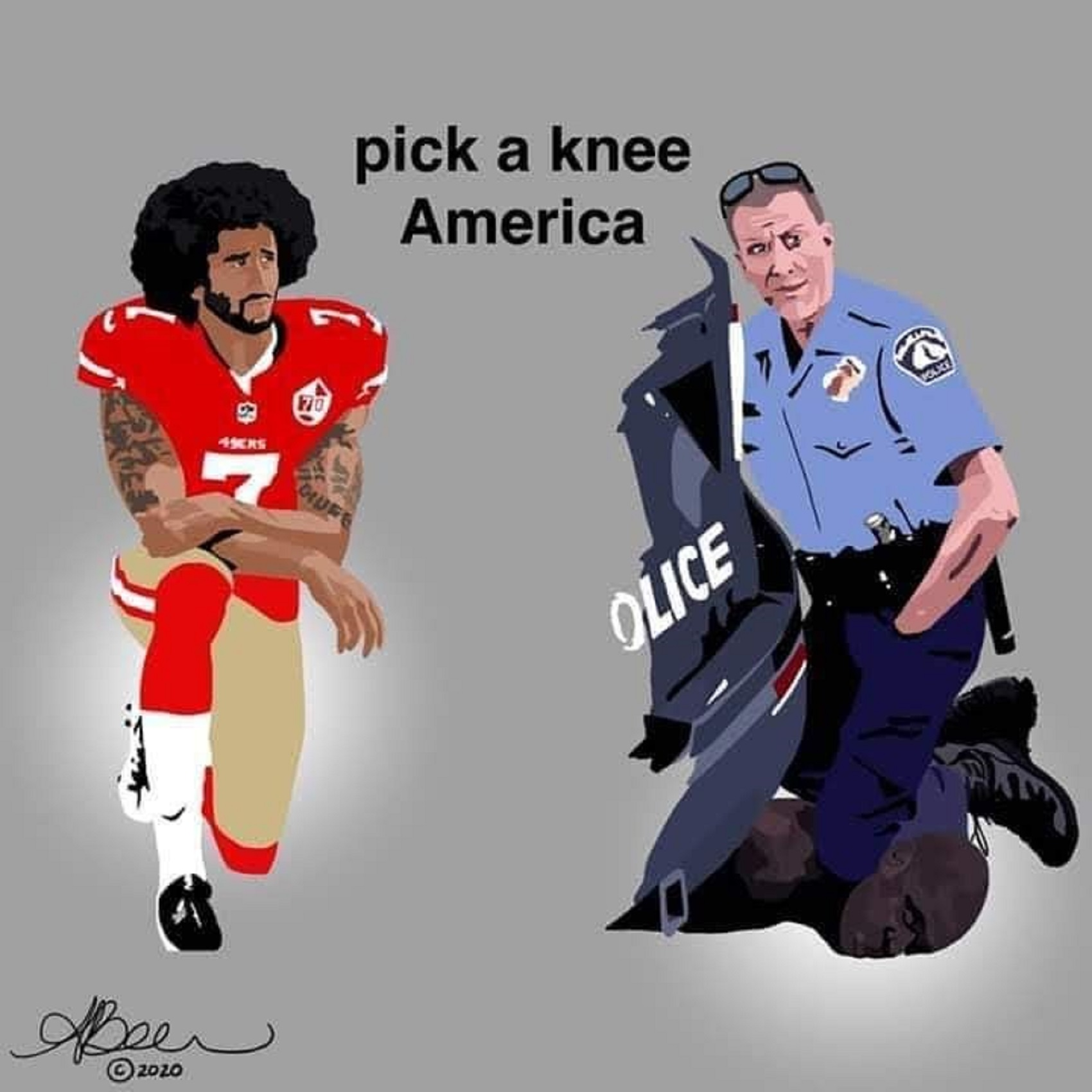


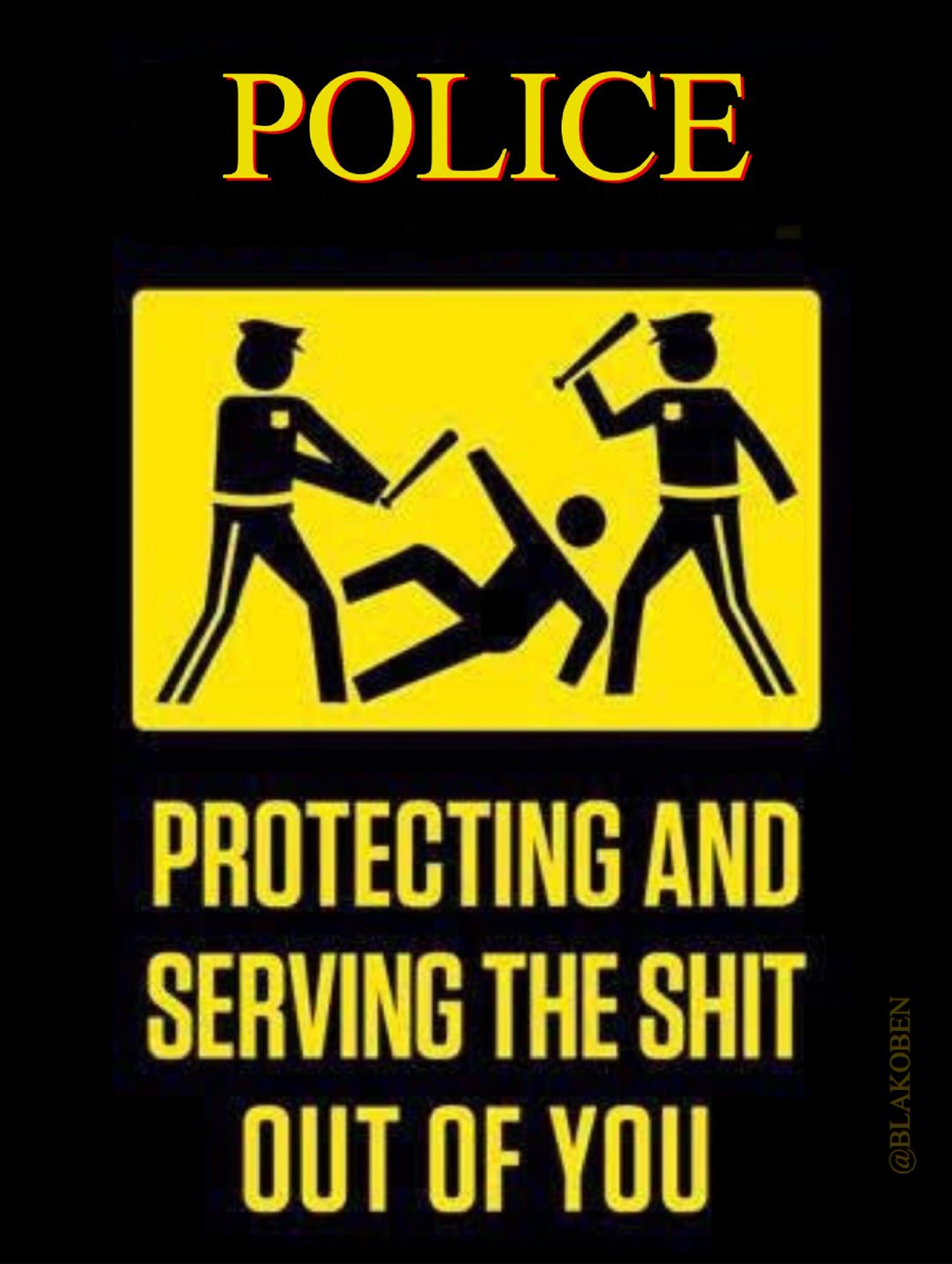

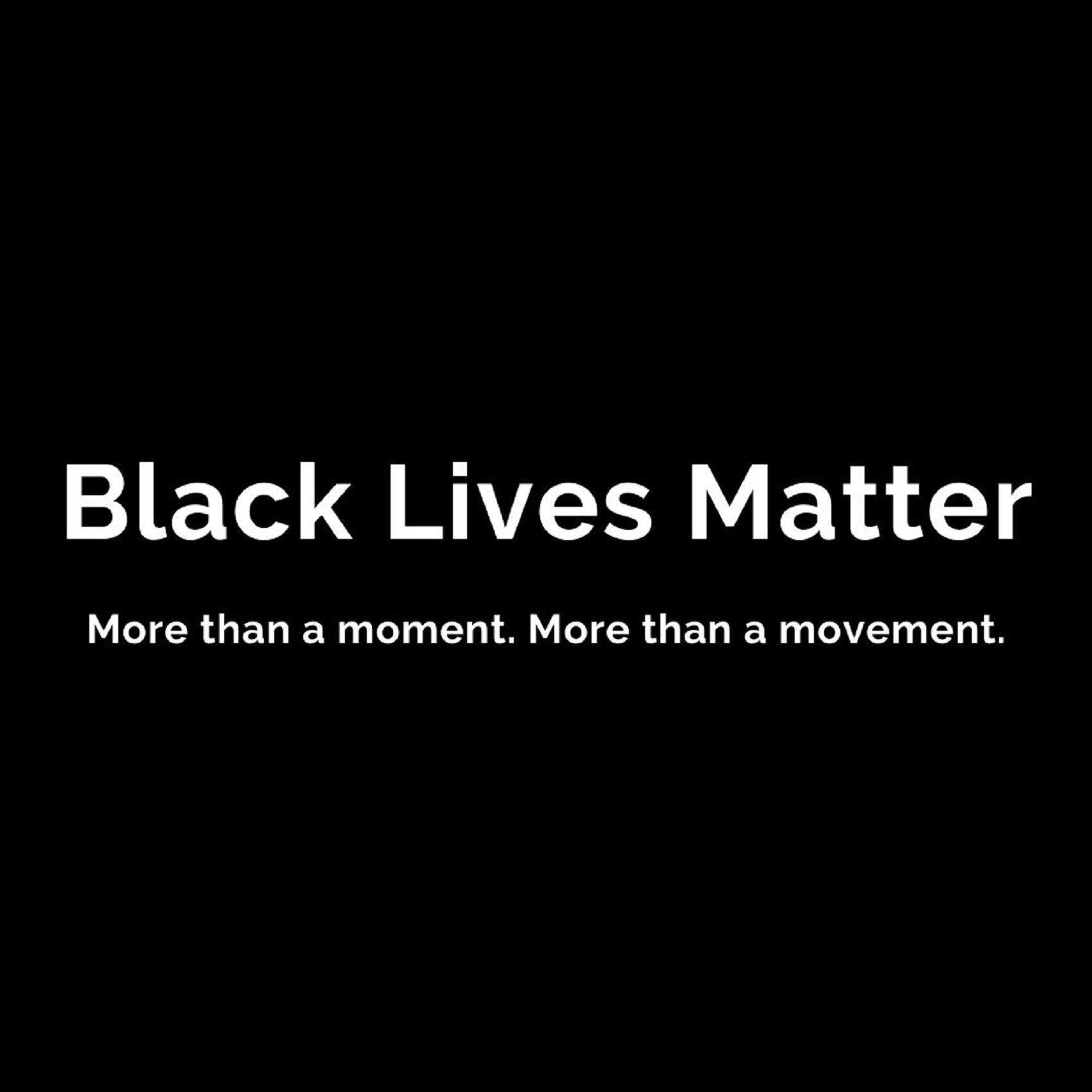


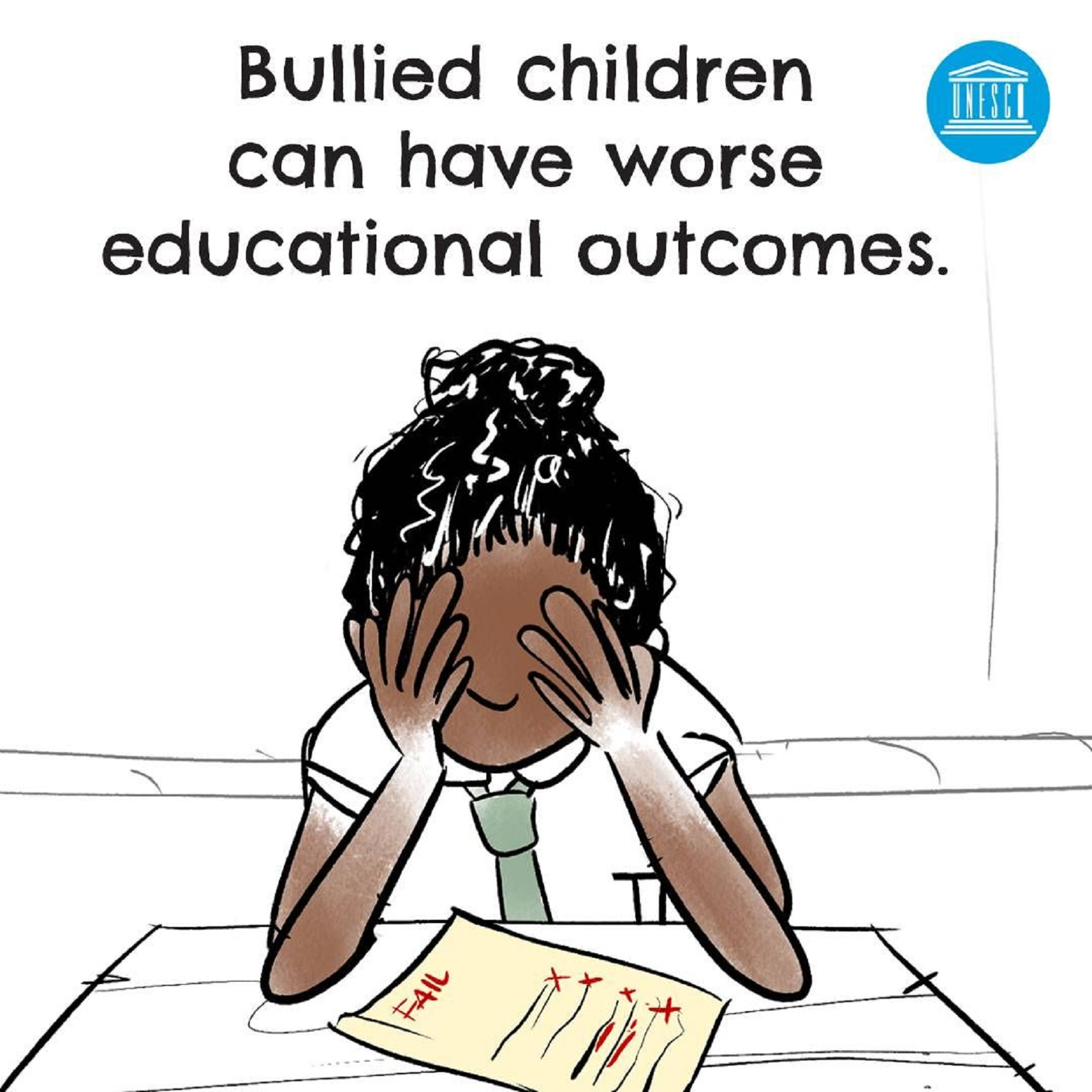
I strive to be a good human ethical in both my thinking and behaviors thus I strive to be:
Anti-racist, Anti-sexist, Anti-homophobic, Anti-biphobic. Anti-transphobic, Anti-classist, Anti-ablest, Anti-ageist, and as Always Antifascist
In fact, I want to strive to avoid as much as I can bigoted thinking towards others based on their perceived membership or classification based on that person’s perceived political affiliation (Well: within reason, justice, and ethics), sex/gender, beliefs (Well: within reason, justice, and ethics), social class (Well: within reason, justice, and ethics), age, disability, religion (Well: within reason, justice, and ethics), sexuality (Well: within reason, justice, and ethics), race, ethnicity, language (Well: within reason, justice, and ethics), nationality, beauty, height, occupation (Well: within reason, justice, and ethics), wealth (Well: within reason, justice, and ethics), education, sport-team affiliation, music tastes or other personal characteristics (Well: within reason, justice, and ethics).
Although, I am a “very”, yes, VERY strong atheist, antitheist as well as antireligionist, My humanity is just as strong and I value it above my disbeliefs. My kind of people are those who champion humanity, the one’s who value kindness, love justice, and support universal empowerment for all humans, we are all equal in dignity, and all deserve human rights, due self-sovereignty.
Racism Hate, is Psychological/Emotional Violence?
Racism hate, is psychological/emotional violence?
To me, any bigotry committed against others whether racism, sexism, homophobia, transphobia, etc is a hate attack mentally perpetrating a form of psychological/emotional violence to the other (who it is positioned against) and will likely inflict a violation to the other’s dignity. Often, this form of psychological/emotional violence penetrates to their very core stability, the comfort of being, and safety in the world. Racism hate, thus can and often, will create a feeling of violation or trauma. To me, racism hate is psychological/emotional violence. So they are not innocent to me in causing societal harm like all terrorists. The alt-right racists promote emotional terror and so that should be very strongly condemned and challenged but I only agree to physical violence as direct self-defense or other defense from physical attack or imminent attack. I am not ok with just a limited equality of homosexuality, bisexuality, or pansexuality in an often blatant heterosexist society, what is needed is to remove as much as possible the hetrosexistism or heteronormative bias, as until we do such people are not truly equal. I am not ok with just a limited racial equality in an often blatantly racist society against people of color, what is needed is to remove as much as possible the racism, as until we do such people are not truly equal. I am not ok with just a limited equality of Trans people in an often blatantly transphobic society, what is needed is to remove as much as possible the cissexist, transphobia, or trans-sexism, as until we do such people are not truly equal. I am not ok with just a limited equality of women in a often blatantly sexist society, what is needed is to remove as much as possible the patriarchy, misogyny, or sexism, as until we do such people are not truly equal.
Variations of Human Interaction: ethical, unethical, good, bad, or evil?
Taxonomy of Race? Construct or a biological reality?
Axiological Dignity Being Theory
Why are lies more appealing than the truth?
Slavery, Racism, Religion and the Confederate Flag
Right-wing hate groups do not cause prejudice in the United States — they exploit it. What we clearly see as objectionable bigotry surfacing in Extreme Right movements, is actually the magnified form of oppressions that swim silently in the familiar yet obscured eddies of “mainstream” society. Racism, sexism, heterosexism, and antisemitism are the major forms of supremacy that create oppression and defend and expand inequitable power and privilege; but there are others based on class, age, ability, language, ethnicity, immigrant status, size, religion, and more. These oppressions exist independent of the Extreme Right in U.S. society. In her book Racism, Sexism, Power and Ideology, Colette Guillaumin argues that the great irony of the rise of modern egalitarianism and democracy was the ascendance of the idea that “human groups were no longer formed by divine decree or royal pleasure, but an irreversible diktat of nature.” This “served to justify the system of oppression which was being built at the same time. By proposing a scheme of immanent physical causality (by race, color, sex, nature), that system provides an irrefutable justification for the crushing… classes and peoples, and the legitimacy of the elite.” Ref
Charlottesville, hate crimes are a public health issue, experts say
BY CNN WIRE,
“CHARLOTTESVILLE, Va. — As a white nationalist rally in Charlottesville, Virginia, turned deadly on Saturday, doctors and public health leaders were among those watching events unfold on their television screens and social media. Dr. Georges Benjamin, executive director of the American Public Health Association, was at a car dealership getting his vehicle inspected when he saw news reports of a car plowing into a group of counterprotesters. “I was horrified,” he said. Dr. Elizabeth Samuels, an emergency physician in New Haven, Connecticut, and Providence, Rhode Island, was closely following the events in Charlottesville from home. “I had actually been following the news, went out for a run, and saw (counterprotester) Heather (Heyer) had been killed when I got back home,” she said. Dr. Jack Ende, president of the American College of Physicians and a professor at the University of Pennsylvania’s Perelman School of Medicine, also was watching from home. “I was shocked to see what was going on,” he said. “I was shocked and saddened.” Benjamin, Samuels, and Ende all agree that the expressions of hate seen in Charlottesville over the weekend were a public health problem.” – CNN WIRE
‘This is a public health issue’
“Hate crimes directed at people based on their race, ethnicity, gender, nationality, sexual orientation, religion or other characteristics are a public health issue, according to a policy statement from the American College of Physicians that was posted on its website Monday. “Is it appropriate for a medical organization to take a stance on hate crimes? The American College of Physicians said, ‘Yes, it was,’ ” Ende said. “There are data indicating the public health ramifications of both the hate crime itself but also of the stigma of bias, the stigma of prejudice and hatred directed against somebody because of their sexual orientation, because of their race, because of their ethnicity or their country of origin,” he said. “For that reason, we felt that this is a public health issue, and we joined with other medical organizations to take a stance against hate crimes.” The American Psychological Association, the American Medical Association, and the American Academy of Family Physicians also have issued policy statements on hate crime as a public health concern. The American Public Health Association has a site devoted to racism’s negative impact on public health and launched a national campaign against racism, including hate crimes. “We studied the statements of our sister groups before we came out with our own,” Ende said. “There is a consensus within the medical societies that this really needs to be kept on our radar.” The American College of Physicians’ statement, which its board of regents approved last month, calls for more research on the impact of hate crimes, the understanding, and prevention of hate crimes, and interventions to address the needs of hate crime survivors and their communities. “By identifying discrimination and hate crimes as public health issues, the ACP not only acknowledges the impact these factors have on our patients but also our role and responsibility to address them as part of our professional dedication to the health of our patients and the public,” said Samuels, who was not involved in the policy statement but attended a vigil in Providence on Sunday where people reflected on the violence. “When I have cared for patients assaulted because of their race, religion, gender, sexual orientation, age, or disability, what has stood out to me is not so much the physical injuries inflicted — which are not to be minimized — but the psychological harm,” she said. “Hate-based violence and systemic racism are detrimental to public health.” – CNN WIRE
How hate hurts public health
“Several studies suggest that experiences of racism or discrimination raise the risk of emotional and physical health problems, including depression, hypertension, cardiovascular disease, and even death. A study of 1,016 Arab-Americans found that their reports of abuse and discrimination after September 11, 2001, were associated with higher levels of distress, lower levels of happiness, and worse overall health. The study was published in the American Journal of Public Health in 2010. As for hate crimes, in particular, a study found that lesbian, gay, bisexual, and transgender high school students living in neighborhoods with higher rates of LGBT assault hate crimes were significantly more likely to report having suicidal thoughts or suicide attempts than students in neighborhoods with lower rates of hate crime. That study was published in the American Journal of Public Health in 2014. “Bottom line is that hate has physical and mental health consequences and should be considered within the remit of public health,” said Dr. Sandro Galea, dean, and professor at the Boston University School of Public Health, who was not involved in the American College of Physicians’ latest policy statement. In other words, being considered within the remit of public health means that hate crimes have significant public health consequences, such as being associated with mental and physical problems. Galea said that he agreed with the policy statement, adding that what appears to be a recent rise in divisive language and outward expressions of hate is “deeply troubling” both as a citizen and as a doctor. He pointed to the weekend’s rally in Charlottesville as an example of that expression of hate.” – CNN WIRE
“The escalation to outright violence, including the killing of one person, are the tip of the iceberg, the ultimate manifestation of the consequences of hate,” Galea said. The American College of Physicians is not the first health organization to recognize hate crimes as a public health concern — and Charlottesville certainly is not the first city to see hateful rhetoric sweep its streets. Nor will it be the last, with rallies planned in other cities this weekend. America’s narrative includes not only the Civil Rights Act of 1968, the first federal statute to recognize hate crimes, but a haunting history of violent Ku Klux Klan gatherings and lynch mobs. As for why the American College of Physicians and other health organizations are only now recognizing hate crimes as a public health issue, Ende said the health community has evolved and become more “sophisticated in our sensitivity” to determinants of illness and social issues. Now, some medical groups are seeking out public health solutions.” – CNN WIRE
‘We have the capacity as a nation to … fix this’
“The American Academy of Family Physicians points to educational programs directed at the prevention of hate crimes as a possible solution, and such programs could be implemented in community centers and schools. The American Psychological Association cites research suggesting that getting people from conflicting groups in the same room in a peaceful way to hear each other’s perspectives, such as in a town hall meeting, or teaching the history of hate in America — such as how there was prejudice against German culture during World War I — are both approaches to turning bias around and possibly preventing hate. The American Medical Association even urges the expedient passage of appropriate hate crimes legislation. The American Public Health Association’s campaign against racism includes three potential public health solutions to hate crimes and racism, Benjamin said. They mostly focus on public discussions. “The first one is naming it. Identifying it. That is a very, very important first step, you know, putting it on the agenda,” Benjamin said. In other words, he said, calling out a hate crime or racism by name can initiate public discussions.” – CNN WIRE
“Then, as part of that discussion, the second step would be to identify how racism is driving policies, practices, or social norms, he said. For instance, “when you have two societies that live on different sides of the railroad tracks and there are differences in their economic well-being and health … was that constructed?” Benjamin asked. The third step would be taking action, such as promoting or facilitating research and interventions through educational programs or community forums, to address racism and hate crimes from a public health perspective. “The public health community is good at understanding the data, thinking about the population-based impact of it, and then working with others, because we don’t do this alone. We work across many sectors to find solutions,” Benjamin said. “I think we need to recognize Charlottesville is an overt expression of something that has been going on for a long time in our country,” he said. “That is a stain and a terrible, terrible situation in our country that we have to fix, and we need to do it now. We have the capacity as a nation to come together and fix this.” Ref
Can Racism Cause PTSD? Implications for DSM-5
By Monnica T. Williams, Ph.D. A licensed clinical psychologist and associate professor at the University of Connecticut in the Department of Psychological Sciences.
“Allen was a young African American man working at a retail store. Although he enjoyed and valued his job, he struggled with the way he was treated by his boss. He was frequently demeaned, given menial tasks, and even required to track African American customers in the store to make sure they weren’t stealing. He began to suffer from symptoms of depression, generalized anxiety, low self-esteem, and feelings of humiliation. After filing a complaint, he was threatened by his boss and then fired. Allen’s symptoms worsened. He had intrusive thoughts, flashbacks, difficulty concentrating, irritability, and jumpiness – all hallmarks of posttraumatic stress disorder (PTSD). Allen later sued his employer for job-related discrimination, and five employees supported his allegations. Allen was found to be suffering from race-based trauma (from Carter & Forsyth, 2009)” – Monnica T. Williams
Epidemiology of PTSD in Minorities
“PTSD is a severe and chronic condition that may occur in response to any traumatic event. The National Survey of American Life (NSAL) found that African Americans show a prevalence rate of 9.1% for PTSD versus 6.8% in non-Hispanic Whites, indicating a notable mental health disparity (Himle et al., 2009). Increased rates of PTSD have been found in other groups as well, including Hispanic Americans, Native Americans, Pacific Islander Americans. and Southeast Asian refugees (Pole et al., 2008). Furthermore, PTSD may be more disabling for minorities; for example, African Americans with PTSD experience significantly more impairment at work and carrying out everyday activities (Himle, et al. 2009).” – Monnica T. Williams
Racism and PTSD
“One major factor in understanding PTSD in ethnoracial minorities is the impact of racism on emotional and psychological well-being. Racism continues to be a daily part of American culture, and racial barriers have an overwhelming impact on the oppressed. Much research has been conducted on the social, economic, and political effects of racism, but little research recognizes the psychological effects of racism on people of color (Carter, 2007). Chou, Asnaani, and Hofmann (2012) found that perceived racial discrimination was associated with increased mental disorders in African Americans, Hispanic Americans, and Asian Americans, suggesting that racism may in itself be a traumatic experience.” – Monnica T. Williams
PTSD in the DSM-IV
“Currently, the DSM recognizes racism as trauma only when an individual meets DSM criteria for PTSD in relation to a discrete racist event, such as an assault. This is problematic given that many minorities experience cumulative experiences of racism as traumatic, with perhaps a minor event acting as “the last straw” in triggering trauma reactions (Carter, 2007). Thus, current conceptualizations of trauma as a discrete event may be limiting for diverse populations. Moreover, existing PTSD measures aimed at identifying an index trauma typically fail to include racism among listed choice response options, leaving such events to be reported as “other” or squeezed into an existing category that may not fully capture the nature of the trauma. This can be especially problematic as minorities may be reluctant to volunteer experiences of racism to White therapists, who comprise the majority of mental health clinicians. Clients may worry that the therapist will not understand, feel attacked, or express disbelief. Additionally, minority clients also may not link current PTSD symptoms to cumulative experiences of discrimination if queried about a single event.” – Monnica T. Williams
Implications for Treatment
“Racism is not typically considered a PTSD Criterion A event, i.e., a qualifying trauma. Mental health difficulties attributed to racist incidents are often questioned or downplayed, a response that only perpetuates the victim’s anxieties (Carter, 2007). Thus, clients who seek out mental healthcare to address race-based trauma may be further traumatized by microaggressions — subtle racist slights — from their own therapists (Sue et al., 2007). Mental health professionals must be willing and able to assess race-based trauma in their minority clients. Psychologists assessing ethnoracial minorities are encouraged to directly inquire about the client’s experiences of racism when determining trauma history. Some forms of race-based trauma may include racial harassment, discrimination, witnessing ethnoviolence or discrimination of another person, historical or personal memory of racism, institutional racism, microaggressions, and the constant threat of racial discrimination (Helms et al., 2012). The more subtle forms of racism mentioned may be commonplace, leading to constant vigilance, or “cultural paranoia,” which may be a protective mechanism against racist incidents. However subtle, the culmination of different forms of racism may result in victimization of an individual parallel to that induced by physical or life-threatening trauma.” – Monnica T. Williams
“Bryant-Davis and Ocampo (2005) noted similar courses of psychopathology between rape victims and victims of racism. Both events are an assault on the personhood and integrity of the victim. Similar to rape victims, race-related trauma victims may respond with disbelief, shock, or dissociation, which can prevent them from responding to the incident in a healthy manner. The victim may then feel shame and self-blame because they were unable to respond or defend themselves, which may lead to low self-concept and self-destructive behaviors. In the same study, a parallel was drawn between race-related trauma victims and victims of domestic violence. Both survivors are made to feel shame over allowing themselves to be victimized. For instance, someone who may have experienced a racist incident may be told that if they are polite, work hard, and/or dress in a certain way, they will not encounter racism. When these rules are followed yet racism persists, powerlessness, hypervigilance, and other symptoms associated with PTSD may develop or worsen (Bryant-Davis & Ocampo, 2005).” – Monnica T. Williams
Changes in the DSM-5
“Proposed changes to PTSD criteria in the DSM-5 have been made to improve diagnostic accuracy in light of current research (Friedman et al., 2011). The first section involving the experienced trauma has changed moderately, reflecting findings in clinical experience as well as empirical research. If a person has learned about a traumatic event involving a close friend or family member, or if a person is repeatedly exposed to details about trauma, they may now be eligible for a PTSD diagnosis. These changes were made to include those exposed in their occupational fields, such as police officers or emergency medical technicians. However, this could be applicable to those suffering from the cumulative effects of racism as well. The requirement of responding to the event with intense fear, helplessness, or horror has been removed. It was found that in many cases, such as soldiers trained in combat, emotional responses are only felt afterward, once removed from the traumatic setting. The most notable change to the criterion is from a three to a four-factor model. The proposed factors are intrusion symptoms, persistent avoidance, alterations in cognition and mood, and hyperarousal/reactivity symptoms. Three new symptoms have been added – persistent distorted blame of self or others, persistent negative emotional state, and reckless or self-destructive behavior. All of these symptoms may be also seen in those victimized by race-based trauma.” – Monnica T. Williams
Summary
“The changes to the DSM increase the potential for better recognition of race-based trauma, although more research will be needed to understand the mechanism by which this occurs. Additionally, current instruments should be expanded and a culturally competent model of PTSD must be developed to address how culture may differentially influence traumatic stress. In the meantime, clinicians should educate themselves about the impact of racism in the lives of their ethnic minority clients, specifically the connection between racist events and trauma (Williams et al., 2014).” – Monnica T. Williams Ref
The Link Between Racism and PTSD
A psychologist explains race-based stress and trauma in Black Americans.
“Posttraumatic stress disorder (PTSD) – the diagnosis conjures up images of hollow-eyed combat veterans or terrified rape victims, but new research indicates that racism can be just as devastating as gunfire or sexual assault. In a previous article, posed the question, Can Racism Cause PTSD? The answer is yes, and changes in the DSM-5 open the door for a better understanding of this phenomenon. Here I discuss the psychological research in this area, as well as clinical observations, and how these relate to my own experiences as a person of color. Several people have asked me why I focus on African Americans, given the many similar experiences faced by other ethnic/racial groups, immigrants, sexual minorities, disabled people, and other stigmatized individuals. I want to state upfront that the problems faced by those groups are real and deserve attention too, however in this article I am going to stick to what I know, the Black experience in America. Racism-related experiences can range from frequent ambiguous “microaggressions” to blatant hate crimes and physical assault.” – Monnica T Williams Ph.D
“Racial microaggressions are subtle, yet pervasive acts of racism; these can be brief remarks, vague insults, or even non-verbal exchanges, such as a scowl or refusal to sit next to a Black person on the subway. When experiencing microaggressions, the target loses vital mental resources trying to figure out the intention of one committing the act. These events may happen frequently, making it difficult to mentally manage the sheer volume of racial stressors. The unpredictable and anxiety-provoking nature of the events, which may be dismissed by others, can lead to victims feeling as if they are “going crazy.” Chronic fear of these experiences may lead to constant vigilance or even paranoia, which over time may result in traumatization or contribute to PTSD when a more stressful event occurs later (Carter, 2007). In fact, one study of female veterans found that African Americans scored higher on measures of ideas of persecution and paranoia, which the authors attributed to an adaptive response to racism (C’de Baca, Castillo, & Qualls, 2012). While most of us can understand why a violent hate crime could be traumatizing, the traumatizing role of microaggressions can be difficult to comprehend, especially among those who do not experience them.” – Monnica T Williams Ph.D
“One study of racial discrimination and psychopathology across three U.S. ethnic minority groups found that African Americans experienced significantly more instances of discrimination than either Asian or Hispanic Americans (Chao, Asnaani, Hofmann, 2012). Non-Hispanic Whites experience the least discrimination (11% for Whites versus 81% for Blacks; Cokley, Hall-Clark, & Hicks, 2011). Furthermore, those African Americans who experienced the most racism were significantly more likely to experience symptoms of PTSD as well. Make no mistake, Asian and Hispanic Americans receive their unfair share of racism too, and research shows that it may even be harder to manage for individuals in these groups. But each ethnic/racial group has its own package of negative stereotypes that impact the form of racism experienced, so it’s not surprising that PTSD prevalence differs by race and ethnicity. Findings from large-scale national studies indicate that, while African Americans have a lower risk for many anxiety disorders, they have a 9.1% prevalence rate for PTSD, compared to 6.8% in Whites (Himle et al, 2009).” – Monnica T Williams Ph.D
“That means that almost one in ten Black people becomes traumatized, and I think these rates may actually be higher since diagnosticians are usually not considering the role of racism in causing trauma (Malcoun, Williams, & Bahojb-Nouri, 2015). Studies also show that African Americans with PTSD experience significantly more impairment due to trauma, indicating greater difficulty carrying out daily activities and increased barriers to receiving effective treatment. Research has linked racism to a host of other problems, including serious psychological distress, physical health problems, depression, anxiety, binge drinking, and even disordered eating (Williams et al., 2014). A strong, positive African American identity can be a potential protective factor against symptoms of anxiety and depression, but this not adequate protection when the discriminatory events are severe (Chae et al., 2011; Williams, Chapman, Wong, & Turkheimer, 2012). I have spoken to African Americans all over the country about their experiences with race-based stress and trauma. One veteran in Colorado told me about how the bullets he faced in combat were nothing compared to the mistreatment he experienced at the hands of his fellow soldiers in arms. When he searched for treatment for his resulting mental health issues, the VA system could not find a qualified therapist to help him. I recently assessed a woman for whom the racial climate at work became so oppressive that she was no longer able to function at her job. She tearfully described the ongoing racial-harassment she experienced from her supervisor, while co-workers turned a blind eye. She carried a stack of documents to prove everything that had happened to her because she didn’t think anyone would believe it. My heart breaks because I have heard her story in many forms, more than once (Williams et al., 2014).” – Monnica T Williams Ph.D
“It’s important to understand that race-based stress and trauma extends beyond the direct behaviors of prejudiced individuals. We are surrounded by constant reminders that race-related danger can occur at any time, anywhere, to anyone. We might see clips on the nightly news featuring unarmed African Americans being killed on the street, in a holding cell, or even in a church. Learning of these events brings up an array of painful racially-charged memories, and what has been termed “vicarious traumatization.” Even if the specific tragic news item has never happened to us directly, we may have had parents or aunts who have had similar experiences, or we know people in our community who have, and their stories have been passed down. Over the centuries the Black community has developed a cultural knowledge of these sorts of horrific events, which then primes us for traumatization when we hear about yet another act of violence. Another unarmed Black man has been shot by police in our communities and nowhere feels safe. Research shows that trauma can alter one’s perceptions of overall safety in society. Black people with PTSD have been found to have lower expectations about the benevolence of the world than Whites. When comparing Black and White Americans, one study reported that African Americans held more negative perceptions of the world, appearing more skeptical and mistrustful (Zoellner, Feeny, Fitzgibbons, Foa, 1999). Experiencing a traumatic event changed perceptions of the world in White victims from positive to negative, yet the perceptions of Black victims were not impacted by traumatic experiences.” – Monnica T Williams Ph.D
“My take on this is that they are already traumatized by life in America. Most of us with dark skin know the world is not safe. Once sensitized through ongoing racism, routine slights may take an increasingly greater toll. Microaggressions, such as being followed by security guards in a department store, or seeing a White woman clutching her purse in an elevator when a Black man enters, is just another trigger for racial stress. Social messages and stereotypes may blame the victim, and tell us that Blacks need to stop “dressing like thugs,” “get off welfare,” and assimilate into White culture to gain acceptance. But these experiences can happen to any Black person of any social status. Sometimes higher-status Black people experience more discrimination because they threaten the social order and thus draw increased hate from others (e.g., Gaertner & Dovidio, 2005).” – Monnica T Williams Ph.D
“I’ve experienced this myself on plenty of occasions. For example once when I was working as a psychological intern in a metropolitan hospital, I was followed by security guards to my car after work. Apparently, a co-worker was frightened by me simply because I was Black. It did not matter that I was a qualified medical professional engaged in patient care and with no history of violence. I remember feeling helpless, angry, and confused. I went over the experience in my mind repeatedly, and tried to figure out who had made the call and why. Victims often feel powerless to stop these experiences because the discrimination is so persistent. Those who are exposed to this type of racial oppression may turn their frustration inward, resulting in depression and disability, or respond outwardly through aggression or violence. I often wonder how people can continue to remain resilient in the face of ongoing, undeserved discrimination. Within the Black community, positive coping with racism may involve faith, forgiveness, humor, and optimism.” – Monnica T Williams Ph.D
“These cultural values have allowed African Americans to persevere for centuries even under the most oppressive conditions. One area we are currently studying in my research lab is how African Americans can proactively cope with racism. We are also developing treatments for race-based stress and trauma to enable those who are suffering to move beyond their painful experiences and become stronger, so they can re-engage in the larger society. But patching up injured victims of racism one-by-one only goes so far. I don’t think it is reasonable to expect that we can “fix” people to enable them to manage constant, ongoing acts of prejudice with a smile, and ask them to be perpetually polite, productive, and forgiving. What we really need is a large-scale shift in our social consciousness to understand the toll this takes on the psyche of victims so that even small acts of racism become unacceptable. We need those who witnesses racism to speak out and victims to be believed. To learn more about our work in reducing racism, measuring microaggressions, and promoting racial harmony, visit www.mentalhealthdisparities.org. Read Dr. Williams’ interview about race-based stress and trauma in the New York Times, Racism’s Psychological Toll. Ref
References
Carter, R. T. (2007). Racism and psychological and emotional injury: Recognizing and assessing race-based traumatic stress. The Counseling Psychologist, 35(1), 13-105.
C’de Baca, J., Castillo, D., & Qualls, C. (2012). Ethnic differences in symptoms among female veterans diagnosed with PTSD. Journal of Traumatic Stress, 25(3), 353-357.
Chae, D. H., Lincoln, K. D., & Jackson, J. S. (2011). Discrimination, attribution, and racial group identification: Implications for psychological distress among Black Americans in the National Survey of American Life (2001–2003). American Journal of Orthopsychiatry, 81(4), 498-506.
Chou, T., Asnaani, A., & Hofmann, S. G. (2012). Perception of racial discrimination and psychopathology across three U.S. ethnic minority groups. Cultural Diversity and Ethnic Minority Psychology, 18(1), 74-81.
Cokley, K., Hall-Clark, B., & Hicks, D. (2011). Ethnic minority-majority status and mental health: The mediating role of perceived discrimination. Journal of Mental Health Counseling, 33(3), 243-263.
Gaertner, S. L. & Dovidio, J. F. (2005). Understanding and Addressing Contemporary Racism: From Aversive Racism to the Common Ingroup Identity Model. Journal of Social Issues, 61(3), 615-639.
Himle, J. A., Baser, R. E., Taylor, R. J., Campbell, R. D., & Jackson, J. S. (2009). Anxiety disorders among African Americans, Blacks of Caribbean Descent, and Non-Hispanic Whites in the United States. Journal of Anxiety Disorders, 23, 578–590.
Malcoun, E., Williams, M. T., & Bahojb-Nouri, L. V. (2015). Assessment of Posttraumatic Stress Disorder in African Americans. In L. T. Benuto & B. D. Leany (Eds.), Guide to Psychological Assessment with African Americans, New York: Springer. ISBN: 978-1-4939-1003-8.
Pieterse, A. L., Todd, N. R., Neville, H. A., & Carter, R. T. (2012). Perceived racism and mental health among Black American adults: A meta-analytic review. Journal Of Counseling Psychology, 59(1), 1-9.
Sue, D. W., Capodilupo, C. M., Torino, G. C., Bucceri, J. M., Holder, A. B., Nadal, K. L., & Esquilin, M. (2007). Racial microaggressions in everyday life: Implications for clinical practice. American Psychologist, 62(4), 271-286.
Williams, M. T., Chapman, L. K., Wong, J., & Turkheimer, E. (2012). The Role of Ethnic Identity in Symptoms of Anxiety and Depression in African Americans. PsychiatryResearch, 199, 31-36.
Williams, M. T., Malcoun, E., Sawyer, B., Davis, D. M., Bahojb-Nouri, L. V., & Leavell Bruce, S. (2014). Cultural Adaptations of Prolonged Exposure Therapy for Treatment and Prevention of Posttraumatic Stress Disorder in African Americans. Behavioral Sciences, 4(2), 102-124.
Zoellner, L. A., Feeny, N. C., Fitzgibbons, L. A., & Foa, E. B. (1999). Response of African American and Caucasian Women to Cognitive Behavioral Therapy for PTSD. Behavior Therapy, 30(4), 581-595.
Racism’s Psychological Toll
“Our screens and feeds are filled with news and images of black Americans dying or being brutalized. A brief and yet still-too-long list: Trayvon Martin, Tamir Rice, Walter Scott, Eric Garner, Renisha McBride. The image of a white police officer straddling a black teenager on a lawn in McKinney, Tex., had barely faded before we were forced to grapple with the racially motivated shooting in Charleston, S.C. I’ve had numerous conversations with friends and colleagues who are stressed out by the recent string of events; our anxiety and fear is palpable. A few days ago, a friend sent a text message that read, “I’m honestly terrified this will happen to us or someone we know.” Twitter and Facebook are teeming with anguish, and within my own social network (which admittedly consists largely of writers, academics, and activists), I’ve seen several ad hoc databases of clinics and counselors crop up to help those struggling to cope. Instagram and Twitter have become a means to circulate information about yoga, meditation, and holistic treatment services for African-Americans worn down by the barrage of reports about black deaths and police brutality, and I’ve been invited to several small gatherings dedicated to discussing these events. A handful of friends recently took off for Morocco for a few months with the explicit goal of escaping the psychic weight of life in America.” – JENNA WORTHAM
“It was against this backdrop that I first encountered the research of Monnica Williams, a psychologist, professor, and the director of the University of Louisville’s Center for Mental Health Disparities. Several years ago, Williams treated a “high-functioning patient, with two master’s degrees and a job at a company that anyone would recognize.” The woman, who was African-American, had been devastated by racial harassment by a director within her company. Williams recalls being stunned by how drastically her patient’s condition deteriorated as a result of the treatment. “She completely withdrew and was suffering from extreme emotional anxiety,” she told me. “And that’s what made me say, ‘Wow, we have to focus on this.” – JENNA WORTHAM
“In a 2013 Psychology Today article, Williams wrote that “much research has been conducted on the social, economic and political effects of racism, but little research recognizes the psychological effects of racism on people of color.” Williams now studies the link between racism and post-traumatic stress disorder, which is known as race-based traumatic stress injury, or the emotional distress a person may feel after encountering racial harassment or hostility. Although much of Williams’s work focuses on individuals who have been directly targeted by racial discrimination or aggression, she says race-based stress reactions can be triggered by events that are experienced vicariously, or externally, through a third party — like social media or national news events. She argues that racism should be included as a cause of PTSD in the American Psychiatric Association’s Diagnostic and Statistical Manual of Mental Disorders (D.S.M.). Williams is in the process of opening a clinical program that will exclusively treat race-based stress and trauma, in a predominantly black neighborhood in Louisville. Shortly after the Charleston shooting, I called Williams to discuss her work; what follows is a lightly edited and condensed transcript of our conversation.” – JENNA WORTHAM
What is race-based stress and trauma?
“It’s a natural byproduct of the types of experiences that minorities have to deal with on a regular basis. I would argue that it is pathological, which means it is a disorder that we can assess and treat. To me, that means these are symptoms that are a diagnosable disorder that require a clinical intervention. It goes largely unrecognized in most people, and that’s based on my experience as a clinician.” – JENNA WORTHAM
What are the symptoms?
“Depression, intrusion (the inability to get the thoughts about what happened out of one’s mind), vigilance (an inability to sleep, out of fear of danger), anger, loss of appetite, apathy and avoidance symptoms, and emotional numbing. My training and study has been on post-traumatic stress disorder for a long time, and the two look very much alike. Over the weekend, I received several distressing emails and texts from friends who were suffering from feelings of anxiety and depression. Do you think we should all be in treatment? I think everyone could benefit from psychotherapy, but I think just talking to someone and processing the feelings can be very effective. It doesn’t have to be with a therapist; it could be with a pastor, family, friends, and people who understand it and aren’t going to make it worse by telling you to stop complaining. What do you think about the #selfcare hashtags on social media and the role of “Black Twitter” as resources for people who may not have the resources they need to help process this? Are online interactions like that more meaningful than they initially might seem? Ref
The Impact of Hate Violence on Victims
Emotional and Behavioral Responses to Attacks
by: Arnold Barnes and Paul H. Ephross
“Criminal acts stemming from prejudice based on race, religion, sexual orientation, or ethnicity—frequently referred to as “hate violence”—have increased during recent years. This study explored the nature of hate attacks and victims’ responses to them. The sample consisted of 59 victims and included black, white, and Southeast Asian people. Data were obtained through focus group meetings, individual interviews, and questionnaires. More than half of the victims reported experiencing a series of attacks rather than a single attack. Anger, fear, and sadness were the emotional responses most frequently reported by victims. About one-third of the victims reported behavioral responses such as moving from the neighborhood or purchasing a gun. The responses of hate violence victims were similar to those of victims of other types of personal crime. Implications for social work intervention are discussed.” – Arnold Barnes and Paul H. Ephross
The importance of crime as a major social problem in the United States has been well documented (Bureau of Justice Statistics, 1988). Since the mid-1960s, American society has been increasingly concerned about the problems experienced by victims of crime. This interest has led to the development of a variety of victim service programs and a new area of social research that focuses on victims rather than on criminals. However, the plight of one class of crime victims, those experiencing hate violence, has been little changed by these developments. Hate violence crimes are those directed against persons, families, groups, or organizations because of their racial, ethnic, religious, or sexual identities or their sexual orientation or condition of disability.” – Arnold Barnes and Paul H. Ephross
“These crimes include arson of homes and businesses, harassment, destruction of religious property, cross burnings, personal assaults, and homicides. Hate violence has a long history in the United States (Brown, 1989). Although it is difficult to estimate the current prevalence of hate violence in the United States (U.S. Commission on Civil Rights, 1986; Weiss, 1990), many sources suggest that the level of this type of crime has increased in the past several years (Anti-Defamation League of B’nai B’rith, 1991; Community Relations Service, 1990). Also, in recent years the media have increasingly provided information on the explosion of hate violence on college campuses and on the capacity of hate violence to spark large-scale urban disturbances (“Black Child,” 1991).” – Arnold Barnes and Paul H. Ephross
“With the passage of the Hate Crime Statistics Act, data on the prevalence of ethnoviolence (hate violence on the basis of race or ethnicity) nationwide will be compiled by the U.S. Attorney General for the years 1990 through 1994 (National Institute Against Prejudice and Violence, 1990). Research is beginning to identify the effects of various types of personal crime on victims. However, despite the social importance of hate violence, there is little available information on how it affects victims. The present study examines the nature of hate violence and the impact of these crimes on victims.” – Arnold Barnes and Paul H. Ephross
Research Design and Sampling
“Using an exploratory research design, the National Institute Against Prejudice and Violence conducted a pilot study of the effects of hate violence on minority group members (Ephross, Barnes, Ehrlich, Sandnes, & Weiss, 1986). A purposive sample of victims was obtained by contacts between members of the instituteÕs staff and officials of human rights agencies, social services agencies, community relations agencies, and special units of police departments in several urban areas. These areas included Alexandria, Virginia; Baltimore; Cleveland; Philadelphia; Oakland, California; Rockville, Maryland; San Jose, California; Suffolk County, New York; and Statesville, North Carolina.” – Arnold Barnes and Paul H. Ephross
Data Collection and Analysis
“The technique of focus group interviewing was used in the study. A focus group is a small group convened to share feelings, thoughts, and reactions to a particular subject. Ten focus group meetings and some individual interviews were held at sites in the victimsÕ communities. Each focus group meeting was conducted by two members of the institute’s research staff. The institute’s staff guided the interviews by posing a prepared set of open-ended questions for each group. With the permission of the participants, each meeting was audiotaped. Participants were assured of confidentiality. Participants also completed questionnaires. Initially, the questionnaires obtained data on the demographic characteristics of victims and the types of crime they experienced. After the third focus group, the questionnaires were revised to include seven items measuring victims’ emotional responses to the hate violence incidents. The audiotape of each interview was reviewed by pairs of institute researchers working independently. Vignettes describing each victim’s experience were written by the first reviewer and then checked for reliability by a second reviewer. In addition to these procedures, the first author analyzed each audiotape using a content analysis procedure. Complete results from the content analysis were not available for inclusion in the pilot study report.” – Arnold Barnes and Paul H. Ephross
Findings, Study Sample
“The current report deals with the 59 focus group participants (out of 72) for whom the complete information is available. The ethnic and religious backgrounds of the study sample are presented in Table 1. The diversity of the group is apparent, although the nonsystematic method of sampling resulted in a seeming oversampling of Southeast Asian victims and an undersampling of Hispanic victims. Forty-one percent of the 59 victims were foreign born. They were almost equally divided by sex (54 percent male, 46 percent female) and ranged in age from 16 to 67 years. The median age was 39 years. Sixty-three percent of the participants were married. The sample’s median household income was $15,500; the range was from $5,000 or less to over $50,000.” – Arnold Barnes and Paul H. Ephross
Acts of Violence
“The interviews focused primarily on the most recent personal attack that participants had experienced. The total number of recent attacks for the sample was 53, rather than 59, because the sample included six couples who mutually experienced six attacks. As indicated in, for slightly more than two out of five respondents (44.1 percent), the most recent attack had occurred in a single time period and had been their first hate violence victimization. One-tenth of the respondents (10.2 percent) reported experiencing one or more prior hate violence incidents that appeared to be unrelated to the most recent attack. For slightly more than two out of five respondents (45.8 percent), the most recent incident was actually the latest in a series of related attacks. Some of these serial attacks ranged over several months and some over three years. Some of the most recent attacks reported by respondents included multiple crimes that occurred on the same date.” – Arnold Barnes and Paul H. Ephross
“Because of the multiple nature of some attacks, the total number of crimes experienced by victims in recent attacks was 68 rather than 53. Physical assault, verbal harassment, and mail or telephone threats were the most frequently reported crimes. These three categories together accounted for almost 49 percent of the experiences of respondents. The next most common attacks (14.7 percent) were symbols or slogans of hate on or near the personal property of victims. Attacks on homes and other acts of vandalism, respectively, accounted for 8.8 percent and 7.4 percent of the incidents. Robberies and attempted robberies were considered possible hate violence attacks because the motives of the offenders were unclear. However, it should be noted that victims of these crimes perceived them as crimes motivated by prejudice.” – Arnold Barnes and Paul H. Ephross
Impact of Attacks on Victims and Their Families
“The majority of the 59 victims (76 percent) did not receive physical injuries as a result of the most recent attack. Minor injuries were sustained by 10 percent, and 9 percent received medical treatment for injuries inflicted in the attack. The severe injuries inflicted on 5 percent of the victims required hospitalization. In 41 percent of the most recent attacks, victims incurred property damage. Participants identified several emotional reactions to the most recent attack on them (Table 3). Irwin, a Jewish victim who had a swastika spray-painted on his mailbox, identified his response as “mostly a feeling of anger.” The most prevalent emotion was anger at the perpetrator, which nearly 68 percent of the participants reported. Fear of injury was the next most frequently cited emotion, with nearly 51 percent of the participants indicating fear that they or their families would be physically injured. A number of victims (approximately 36 percent) were saddened by the incident.” – Arnold Barnes and Paul H. Ephross
“About one-third of the participants (33.9 percent) reported behavioral changes as both coping responses to the most recent attack and as attempts to avoid potential future victimization. These behavioral changes included moving out of the neighborhood, decreasing social participation, purchasing a gun or increasing readiness to use a gun, buying initial or additional home security devices, and increasing safety precautions for children in the family. Somala, a Cambodian refugee, was assaulted by a black man in a suburban park. Shortly after the attack, Somala moved to another county. She moved because of fear that the man would find her and attack again, and she subsequently avoided the county in which the attack occurred. Somala’s responses represent the avoidance behavioral coping that some victims adopted. In contrast to avoidance, the behavioral coping of some victims consisted of preparations for retaliation. One black man stated, “I am scared that I might catch one of these people. . . . The scariest thing is I got guns and can use them.” – Arnold Barnes and Paul H. Ephross
Discussion and Implications
“In examining the most recent hate violence incidents, the study found considerable variation in both the type and intensity of attacks. This finding is consistent with those of other recent investigations of hate violence (for example, U.S. Commission on Civil Rights, 1986; Wexler & Marx, 1986). The characteristics of some attacks appeared to be consistent with conventional definitions of social terrorism, particularly evident in the finding of the current study that more than half of the participants experienced multiple attacks. In comparing the emotional and behavioral responses of victims of hate violence with those of victims of personal crimes such as assault and rape, several similarities were identified. Investigators have reported intense rage or anger; fear of injury, death, and future victimization; sadness; and depression (Shapland, Willmore, & Duff, 1985) as elements of victims’ potential reactions to crime. Thus, to some extent, the predominant emotional responses of hate violence victims appear similar to those of victims of other types of personal crime.” – Arnold Barnes and Paul H. Ephross
“The behavioral coping responses of hate violence victims are also similar to those used by other victims of crime. Crime victims often experience feelings of powerlessness and increased suspicion of other people. These emotions were also reported by victims of hate violence. A major difference in the emotional response of hate violence victims appears to be the absence of lowered self-esteem. The ability of some hate violence victims to maintain their self-esteem may be associated with their attribution of responsibility for the attacks to the prejudice and racism of the perpetrators. Some limitations of this study need to be mentioned. First, the participants interviewed in the study had all contacted the police, human rights agencies, or other organizations. Thus, study findings are most relevant to the population of victims who report hate violence.” – Arnold Barnes and Paul H. Ephross
“Second, the generalizability of the findings to this population may be affected by the relatively small size and nonrandom nature of the sample. Although responsibility for responding to hate violence is primarily allocated to community relations agencies, social workers in a wide array of settings encounter clients who have experienced this type of victimization. Thus, social workers must have knowledge of the characteristics of hate violence, victims’ reactions to attacks, and community resources that address hate violence. Practitioners can assist victims in managing the stress of hate violence. As with victims of other types of crime, short-term interventions appear best suited for meeting the needs of hate violence victims. Group work services may also be beneficial. With highly traumatized victims, specialized psychotherapy may be required. To prevent hate violence, social workers need to assist in educating citizens about this problem. Ref
References
Anti-Defamation League of B’nai B’rith. (1991). 1990 audit of anti-Semitic incidents. New York: Author.
Bard, M., & Sangrey, D. (1986). The crime victim’s book (2nd ed.). New York: Brunner/Mazel.
Black child and a Hasidic man die, igniting clashes in Brooklyn. (1991, August 21). New York Times, p. A1.
Brown, R. M. (1989). Historical patterns of violence. In T. R. Gurr (Ed.), Violence in America: Protest, rebellion, reform (Vol. 2, pp. 23-61). Newbury Park, CA: Sage Publications.
Bureau of Justice Statistics. (1988). Report to the nation on crime and justice (2nd ed.). Washington, DC: U.S. Department of Justice.
Collison, M. N.-K. (1987, March 18). Racial incidents worry campus officials, prompt U. of Massachusetts study. Chronicle of Higher Education, pp. 1, 41-43.
Community Relations Service. (1990). The annual report of the Community Relations Service. Washington, DC: U.S. Department of Justice.
Davis, R. C., & Friedman, L. N. (1985). The emotional aftermath of crime and violence. In C. R. Figley (Ed.), Trauma and its wake (pp. 90-112). New York: Brunner/Mazel.
Elias, R. (1986). The politics of victimization: Victims, victimology and human rights. New York: Oxford University Press
Ephross, P. H., Barnes, A., Ehrlich, H. J., Sandnes, K. R., & Weiss, J. C. (1986). The ethnoviolence project: Pilot study. Baltimore: National Institute Against Prejudice and Violence.
Greenberg, M. S., & Ruback, R. B. (1984). Criminal victimization: Introduction and overview. Journal of Social Issues, 40(1), 1-7.
Gurr, T. R. (1989). Political terrorism: Historical antecedents and contemporary trends. In T. R. Gurr (Ed.), Violence in America: Protest, rebellion, reform (Vol. 2, pp. 201-230). Newbury Park, CA: Sage Publications.
Lydecker, T. H. (1986, March). Focus group dynamics. Association Management, pp. 73-78.
Mostyn, B. (1985). The content analysis of qualitative research data: A dynamic approach. In M. Brenner, J. Brown, & D. Cantor (Eds.), The research interview: Uses and approaches (pp. 115-145). Orlando, FL: Academic Press.
National Institute Against Prejudice and Violence. (1990). Federal Hate Crime Statistics Act signed into law. FORUM, 5(2), 5.
Ochberg, F. M. (1988). Post-traumatic therapy and victims of violence. In F. M. Ochberg (Ed.), Post-traumatic therapy and victims of violence (pp. 3-19). New York: Brunner/Mazel.
Schultz, L. G. (1987). Victimization programs and victims of crime. In A. Minahan (Ed.-in-Chief), Encyclopedia of social work (18th ed., Vol. 2, pp. 817-822). Silver Spring, MD: National Association of Social Workers.
Shapland, J., Willmore, J., & Duff, P. (1985). Victims in the criminal justice system. Brookfield, VT: Gower.
U. S. Commission on Civil Rights. (1986). Recent activities against citizens and residents of Asian descent. Washington, DC: Author.
Weiss, J. C. (1990). Ethnoviolence: Violence motivated by bigotry. In L. Ginsberg et al. (Eds.), Encyclopedia of social work (18th ed., 1990 Suppl., pp. 307-319). Silver Spring, MD: NASW Press.
Weiss, J. C., & Ephross, P. H. (1986). Group work approaches to “hate violence” incidents. Social Work, 31, 132-136.
Wexler, C., & Marx, G. T. (1986). When law and order works: Boston’s innovative approach to the problem of racial violence. Crime & Delinquency, 32, 205-223.
Wirtz, P. W., & Harrell, A. V. (1987). Victim and crime characteristics, coping responses, and short- and long-term recovery from victimization. Journal of Consulting and Clinical Psychology, 55, 866-871.
Young, M. A. (1988). Support services for victims. In F. M. Ochberg (Ed.), Post-traumatic therapy and victims of violence (pp. 330-351). New York: Brunner/Mazel.
Arnold Barnes, PhD, is assistant professor, Indiana University School of Social Work, Education/Social Work Building 4138, 902 West New York Street, Indianapolis, IN 46202-5156. Paul H. Ephross, PhD, is professor, School of Social Work, University of Maryland at Baltimore.
How Racism Impacts the Response to Emotional Abuse
“Within the context of immigration (particularly from the Caribbean), author Joan Wilkinson examines racism and emotional abuse. The findings reveal the need for more cultural sensitivity and awareness. Canadian Statistics tells us that 29% of women have been victims of wife abuse. The immigrant woman is not excluded from this group. Frequently women who immigrate to Canada from the Caribbean are vulnerable to emotional abuse to the extent that it affects their ability to seek social support. They often find themselves in abusive situations in their home, at their place of employment, or even in their churches. Incapable of finding a safe way to escape their violent circumstances, many women blame themselves or may even rationalize the abuse they are experiencing, which, over time, results in a significant impact on the self-esteem, self-confidence, and/or the parenting capacity of these women.” – Arnold Barnes & Paul H. Ephross
“Unfortunately, due to a lack of cultural awareness and systemic racism, those who are placed in positions of power aimed at protecting society, for instance in the legal and judiciary system, may react with indifference or ignorance. For example, a woman may be told that women from her culture are known to prefer men who abuse them. This lack of knowledge regarding abuse and its impact on the victim only serves to contribute to the immigrant woman’s fear of reporting the various forms of abuse that have been inflicted upon her. As such, poor responses strengthen the feelings of distrust an immigrant woman has about various institutions, such as social work practitioners, the education, and judicial systems. From another perspective, the failure to establish a supportive workable intervention with an abused woman should be viewed as revictimizing her.” – Arnold Barnes & Paul H. Ephross
“The response to immigrant women is often buttressed by racial stereotypes specific to a certain culture, and by societal norms that state women are supposed to be submissive. Often an immigrant woman is not aware of the societal support systems and is therefore unable to use them. The emotional abuse may also undermine her ability to seek economic independence. Unfortunately, she may soon forget her own inner resources and the resilience that helped her to migrate to begin a new life. Service providers such as counselors, police, and settlement workers must consider the complexity of the issues facing immigrant women. They should possess knowledge of the woman’s culture and understand each woman individually within her own cultural context culture in order to be effective, while avoiding stereotypes when dealing with women of color. This awareness would facilitate a more effective intervention with this often hidden and misunderstood client group. Ref
Emotional violence
“Emotional violence and controlling behavior is behavior that does not give equal importance and respect to another person’s feelings and experiences. It is often the most difficult to pinpoint or identify. Emotional violence includes the refusal to listen to, or denial of, another person’s feelings, telling people what they do or do not feel, and ridiculing or shaming of their feelings. It happens when one person believes they have a right to control or dominate another person. Bullying, threatening, harassing, isolating, and name-calling are all forms of control. They can make people feel bad and worry about what is going to happen next. Emotional violence can also make people feel powerless, fearful, or angry about the violence. Ref
What Is Psychological Violence?
“Violence is a central concept for describing social relationships among humans, a concept loaded with ethical and political significance. Yet, what is violence? What forms can it take? Can human life be void of violence, and should it be? These are some of the hard questions that a theory of violence shall address. In this article, we shall address psychological violence, which will be kept distinct from physical violence and verbal violence. Other questions, such as Why are humans violent?, or Can violence ever be just?, or Should humans aspire to non-violence? will be left for another occasion.” – Andrea Borghini
PSYCHOLOGICAL VIOLENCE
“In a first approximation, psychological violence may be defined as that sort of violence which involves a psychological damage on the part of the agent who is being violated. You do have psychological violence, that is, any time that an agent voluntarily inflicts some psychological distress on an agent. Psychological violence is compatible with physical violence or verbal violence. The damage done to a person that has been the victim of a sexual assault is not only the damage deriving from the physical injuries to her or his body; the psychological trauma the event may provoke is part and parcel of the violence perpetrated, which is a psychological sort of violence.” – Andrea Borghini
THE POLITICS OF PSYCHOLOGICAL VIOLENCE
“Psychological violence is of the utmost importance from a political point of view. Racism and sexism have been indeed analyzed as forms of violence that a government, or a sect of society, was inflicting on some individuals. From a legal perspective, to recognize that racism is a form of violence even when no physical damage is provoked to the victim of a racist behavior, is an important instrument for putting some pressure (that is, exercising some form of coercion) on those whose behavior is racist. On the other hand, as it is often difficult to assess a psychological damage (who can tell whether a woman is really suffering because of the sexist behavior of her acquaintances rather than because of her own personal issues?), the critics of psychological violence often try to find an easy apologetic way out. While disentangling causes in the psychological sphere is difficult, however, there is little doubt that discriminatory attitudes of all sorts do put some psychological pressure on agents: such a sensation is quite familiar to all human beings, since childhood.” – Andrea Borghini
REACTING TO PSYCHOLOGICAL VIOLENCE
“Psychological violence poses also some important and difficult ethical dilemmas. First and foremost, is it justified to react with physical violence to an act of psychological violence? Can we, for instance, excuse bloody or physically violent revolts that were perpetrated as a reaction to situations of psychological violence? Consider even a simple case of mobbing, which (at least in part) involves some dose of psychological violence: can it be justified reacting in a physically violent manner to mobbing? The questions just raised divide harshly those who debate violence. On one hand stand those who regard physical violence as a higher variant of violent behavior: reacting to psychological violence by perpetrating physical violence means to escalate violence. On the other hand, some maintain that certain forms of psychological violence may be more atrocious than any form of physical violence: it is indeed the case that some of the worst forms of torture are psychological and may involve no direct physical damage be inflicted on the tortured.” – Andrea Borghini
UNDERSTANDING PSYCHOLOGICAL VIOLENCE
“While the majority of human beings may have been victim of some form of psychological violence at some point of their life, without a proper notion of a self it is difficult to devise effective strategies for coping with the damages inflicted by those violent acts. What does it take to heal from a psychological trauma or damage? How to cultivate the well-being of a self? Those may possibly be among the most difficult and central questions that philosophers, psychologists, and social scientists have to answer in order to cultivate the well-being of individuals. Ref
What You Can Do?
- Gun Violence Prevention See research on gun violence and learn how to help people in an emotional crisis.
- Abuse of Women with Disabilities Women with disabilities may experience unique forms of abuse that are difficult to recognize — making it even harder to get the kind of help they need.
- Abuso de Mujeres con Discapacidad Las mujeres con discapacidad pueden experimentar formas únicas de abuso que son difíciles de reconocer.
- Warning signs of youth violence Learn how to recognize danger signs and keep anger from escalating out of control.
- Raising children to resist violence: What you can do Children learn aggressive behavior early in life. Several strategies can help parents and others teach kids to manage their emotions without using violence.
- Partner Violence: What Can You Do? This brochure briefly describes violence in the home and provides advice for victims, abusers, and family and friends.
- What makes kids care? Teaching gentleness in a violent world In a world where violence and cruelty seem to be common and almost acceptable, many parents wonder what they can do to help their children to become kinder and gentler — to develop a sense of caring and compassion for others.
- Understanding and Preventing Violence Directed Against Teachers Information to help K-12 teachers to cope with and prevent the occurrence and threat of violent incidents in their classrooms.
Getting Help
- Talking to your children about the recent spate of school shootings Every child will respond to trauma differently. Some will have no ill effects; others may suffer an immediate and acute effect. Still others may not show signs of stress until sometime after the event.
- How to find help through seeing a psychologist This brief question-and-answer guide provides some basic information to help individuals take advantage of outpatient (non-hospital) psychotherapy.
- Managing your distress in the aftermath of a shooting You may be struggling to understand how a shooting rampage could take place in a community, even a workplace or military base, and why such a terrible thing would happen.
- Intimate Partner Violence Nearly half of all women in the United States have experienced at least one form of psychological aggression by an intimate partner.
- Violencia en Contra de la Pareja Mujeres con discapacidades tienen 40 por ciento mayor riesgo de sufrir violencia por parte de la pareja, principalmente violencia severa, en comparación con mujeres sin discapacidades.




While hallucinogens are associated with shamanism, it is alcohol that is associated with paganism.
The Atheist-Humanist-Leftist Revolutionaries Shows in the prehistory series:
Show two: Pre-animism 300,000 years old and animism 100,000 years old: related to “Anarchism and Socialism”
Show tree: Totemism 50,000 years old: related to “Anarchism and Socialism”
Show four: Shamanism 30,000 years old: related to “Anarchism and Socialism”
Show five: Paganism 12,000 years old: related to “Anarchism and Socialism”
Show six: Emergence of hierarchy, sexism, slavery, and the new male god dominance: Paganism 7,000-5,000 years old: related to “Anarchism and Socialism” (Capitalism) (World War 0) Elite and their slaves!
Prehistory: related to “Anarchism and Socialism” the division of labor, power, rights, and recourses: VIDEO
Pre-animism 300,000 years old and animism 100,000 years old: related to “Anarchism and Socialism”: VIDEO
Totemism 50,000 years old: related to “Anarchism and Socialism”: VIDEO
Shamanism 30,000 years old: related to “Anarchism and Socialism”: VIDEO
Paganism 12,000 years old: related to “Anarchism and Socialism” (Pre-Capitalism): VIDEO
Paganism 7,000-5,000 years old: related to “Anarchism and Socialism” (Capitalism) (World War 0) Elite and their slaves: VIEDO
Paganism 5,000 years old: progressed organized religion and the state: related to “Anarchism and Socialism” (Kings and the Rise of the State): VIEDO
Paganism 4,000 years old: related to “Anarchism and Socialism” (First Moralistic gods, then the Origin time of Monotheism): VIEDO
I do not hate simply because I challenge and expose myths or lies any more than others being thought of as loving simply because of the protection and hiding from challenge their favored myths or lies.
The truth is best championed in the sunlight of challenge.
An archaeologist once said to me “Damien religion and culture are very different”
My response, So are you saying that was always that way, such as would you say Native Americans’ cultures are separate from their religions? And do you think it always was the way you believe?
I had said that religion was a cultural product. That is still how I see it and there are other archaeologists that think close to me as well. Gods too are the myths of cultures that did not understand science or the world around them, seeing magic/supernatural everywhere.
I personally think there is a goddess and not enough evidence to support a male god at Çatalhöyük but if there was both a male and female god and goddess then I know the kind of gods they were like Proto-Indo-European mythology.
This series idea was addressed in, Anarchist Teaching as Free Public Education or Free Education in the Public: VIDEO
Our 12 video series: Organized Oppression: Mesopotamian State Force and the Politics of power (9,000-4,000 years ago), is adapted from: The Complete and Concise History of the Sumerians and Early Bronze Age Mesopotamia (7000-2000 BC): https://www.youtube.com/watch?v=szFjxmY7jQA by “History with Cy“
Show #1: Mesopotamian State Force and the Politics of Power (Samarra, Halaf, Ubaid)
Show #2: Mesopotamian State Force and the Politics of Power
Show #3: Mesopotamian State Force and the Politics of Power (Uruk and the First Cities)
Show #4: Mesopotamian State Force and the Politics of Power (First Kings)
Show #5: Mesopotamian State Force and the Politics of Power (Early Dynastic Period)
Show #6: Mesopotamian State Force and the Politics of Power
Show #7: Mesopotamian State Force and the Politics of Power (Sargon and Akkadian Rule)
Show #9: Mesopotamian State Force and the Politics of Power (Gudea of Lagash and Utu-hegal)
Show #12: Mesopotamian State Force and the Politics of Power (Aftermath and Legacy of Sumer)

The “Atheist-Humanist-Leftist Revolutionaries”
Cory Johnston ☭ Ⓐ Atheist Leftist @Skepticallefty & I (Damien Marie AtHope) @AthopeMarie (my YouTube & related blog) are working jointly in atheist, antitheist, antireligionist, antifascist, anarchist, socialist, and humanist endeavors in our videos together, generally, every other Saturday.
Why Does Power Bring Responsibility?
Think, how often is it the powerless that start wars, oppress others, or commit genocide? So, I guess the question is to us all, to ask, how can power not carry responsibility in a humanity concept? I know I see the deep ethical responsibility that if there is power their must be a humanistic responsibility of ethical and empathic stewardship of that power. Will I be brave enough to be kind? Will I possess enough courage to be compassionate? Will my valor reach its height of empathy? I as everyone, earns our justified respect by our actions, that are good, ethical, just, protecting, and kind. Do I have enough self-respect to put my love for humanity’s flushing, over being brought down by some of its bad actors? May we all be the ones doing good actions in the world, to help human flourishing.
I create the world I want to live in, striving for flourishing. Which is not a place but a positive potential involvement and promotion; a life of humanist goal precision. To master oneself, also means mastering positive prosocial behaviors needed for human flourishing. I may have lost a god myth as an atheist, but I am happy to tell you, my friend, it is exactly because of that, leaving the mental terrorizer, god belief, that I truly regained my connected ethical as well as kind humanity.
Cory and I will talk about prehistory and theism, addressing the relevance to atheism, anarchism, and socialism.
At the same time as the rise of the male god, 7,000 years ago, there was also the very time there was the rise of violence, war, and clans to kingdoms, then empires, then states. It is all connected back to 7,000 years ago, and it moved across the world.
Cory Johnston: https://damienmarieathope.com/2021/04/cory-johnston-mind-of-a-skeptical-leftist/?v=32aec8db952d
The Mind of a Skeptical Leftist (YouTube)
Cory Johnston: Mind of a Skeptical Leftist @Skepticallefty
The Mind of a Skeptical Leftist By Cory Johnston: “Promoting critical thinking, social justice, and left-wing politics by covering current events and talking to a variety of people. Cory Johnston has been thoughtfully talking to people and attempting to promote critical thinking, social justice, and left-wing politics.” http://anchor.fm/skepticalleft
Cory needs our support. We rise by helping each other.
Cory Johnston ☭ Ⓐ @Skepticallefty Evidence-based atheist leftist (he/him) Producer, host, and co-host of 4 podcasts @skeptarchy @skpoliticspod and @AthopeMarie
Damien Marie AtHope (“At Hope”) Axiological Atheist, Anti-theist, Anti-religionist, Secular Humanist. Rationalist, Writer, Artist, Poet, Philosopher, Advocate, Activist, Psychology, and Armchair Archaeology/Anthropology/Historian.
Damien is interested in: Freedom, Liberty, Justice, Equality, Ethics, Humanism, Science, Atheism, Antiteism, Antireligionism, Ignosticism, Left-Libertarianism, Anarchism, Socialism, Mutualism, Axiology, Metaphysics, LGBTQI, Philosophy, Advocacy, Activism, Mental Health, Psychology, Archaeology, Social Work, Sexual Rights, Marriage Rights, Woman’s Rights, Gender Rights, Child Rights, Secular Rights, Race Equality, Ageism/Disability Equality, Etc. And a far-leftist, “Anarcho-Humanist.”
I am not a good fit in the atheist movement that is mostly pro-capitalist, I am anti-capitalist. Mostly pro-skeptic, I am a rationalist not valuing skepticism. Mostly pro-agnostic, I am anti-agnostic. Mostly limited to anti-Abrahamic religions, I am an anti-religionist.
To me, the “male god” seems to have either emerged or become prominent around 7,000 years ago, whereas the now favored monotheism “male god” is more like 4,000 years ago or so. To me, the “female goddess” seems to have either emerged or become prominent around 11,000-10,000 years ago or so, losing the majority of its once prominence around 2,000 years ago due largely to the now favored monotheism “male god” that grow in prominence after 4,000 years ago or so.
My Thought on the Evolution of Gods?
Animal protector deities from old totems/spirit animal beliefs come first to me, 13,000/12,000 years ago, then women as deities 11,000/10,000 years ago, then male gods around 7,000/8,000 years ago. Moralistic gods around 5,000/4,000 years ago, and monotheistic gods around 4,000/3,000 years ago.

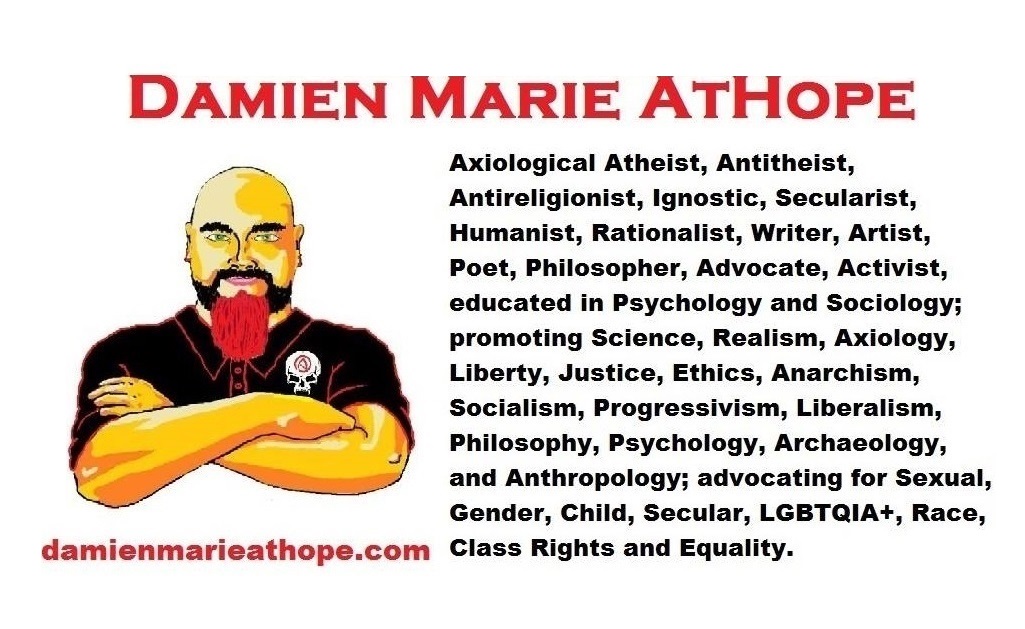
Damien Marie AtHope (Said as “At” “Hope”)/(Autodidact Polymath but not good at math):
Axiological Atheist, Anti-theist, Anti-religionist, Secular Humanist, Rationalist, Writer, Artist, Jeweler, Poet, “autodidact” Philosopher, schooled in Psychology, and “autodidact” Armchair Archaeology/Anthropology/Pre-Historian (Knowledgeable in the range of: 1 million to 5,000/4,000 years ago). I am an anarchist socialist politically. Reasons for or Types of Atheism
My Website, My Blog, & Short-writing or Quotes, My YouTube, Twitter: @AthopeMarie, and My Email: damien.marie.athope@gmail.com


